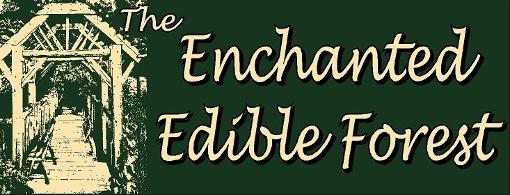
315-482-3663
Welcome to the Enchanted Edible Forest Newsletter & Blog!
What's in Bloom the first week in June
June 8, 2023
June is a wonderful time to see, smell and taste the abundance of the Enchanted Edible Forest.
Early in the month the garden is lush with greenery and blooms. Here are a few examples:
The first peony to open (below) has deep pink petals and a prominent yellow center irresistible to bumble bees and other native pollinators. And guess what: the blooms are also edible and taste delicious.
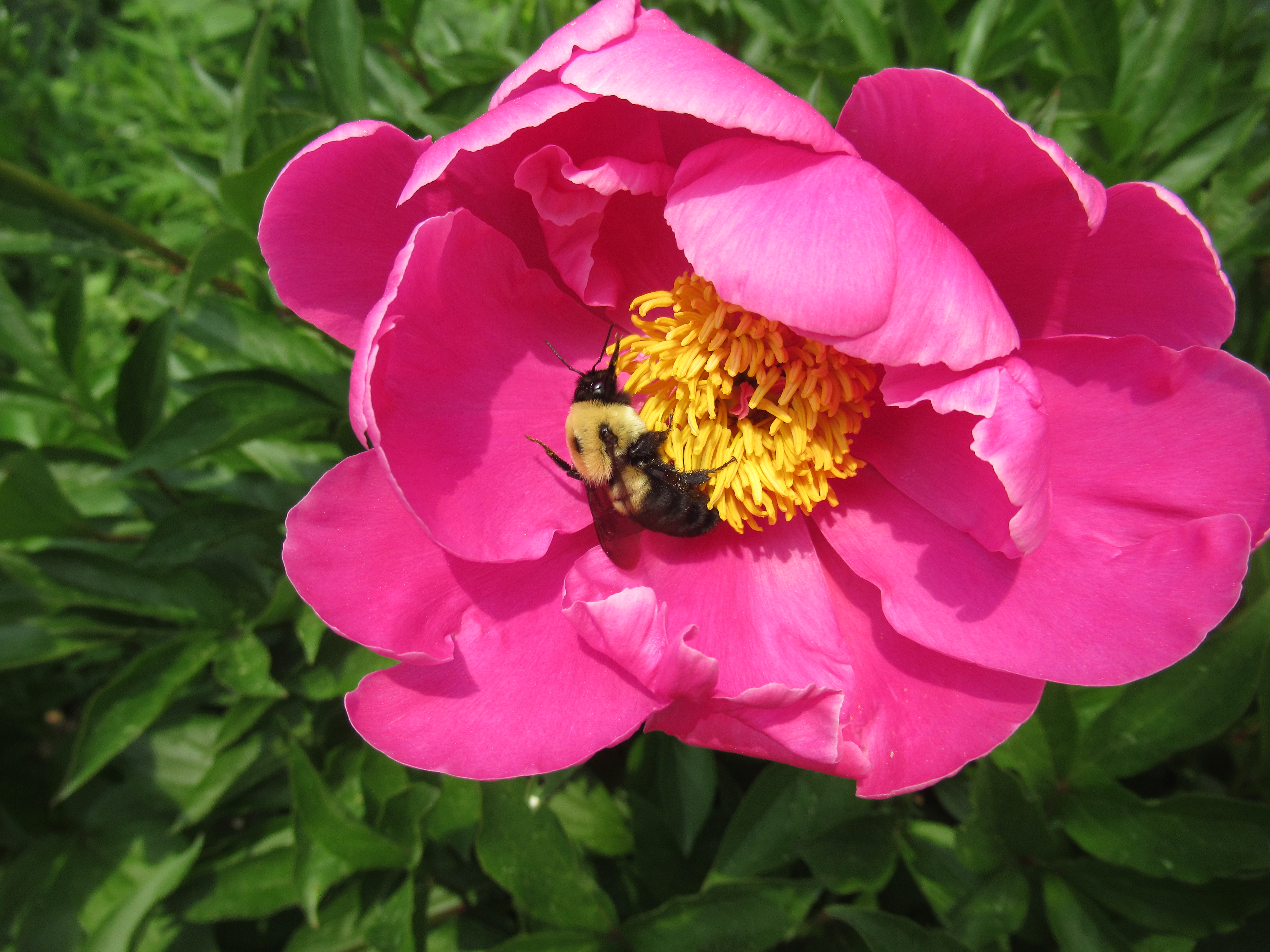
High bush cranberry bushes (below) are covered with showy white flowers covering their ten-foot wide and tall canopies. These flowers will morph into edible berries which ripen late in the fall.
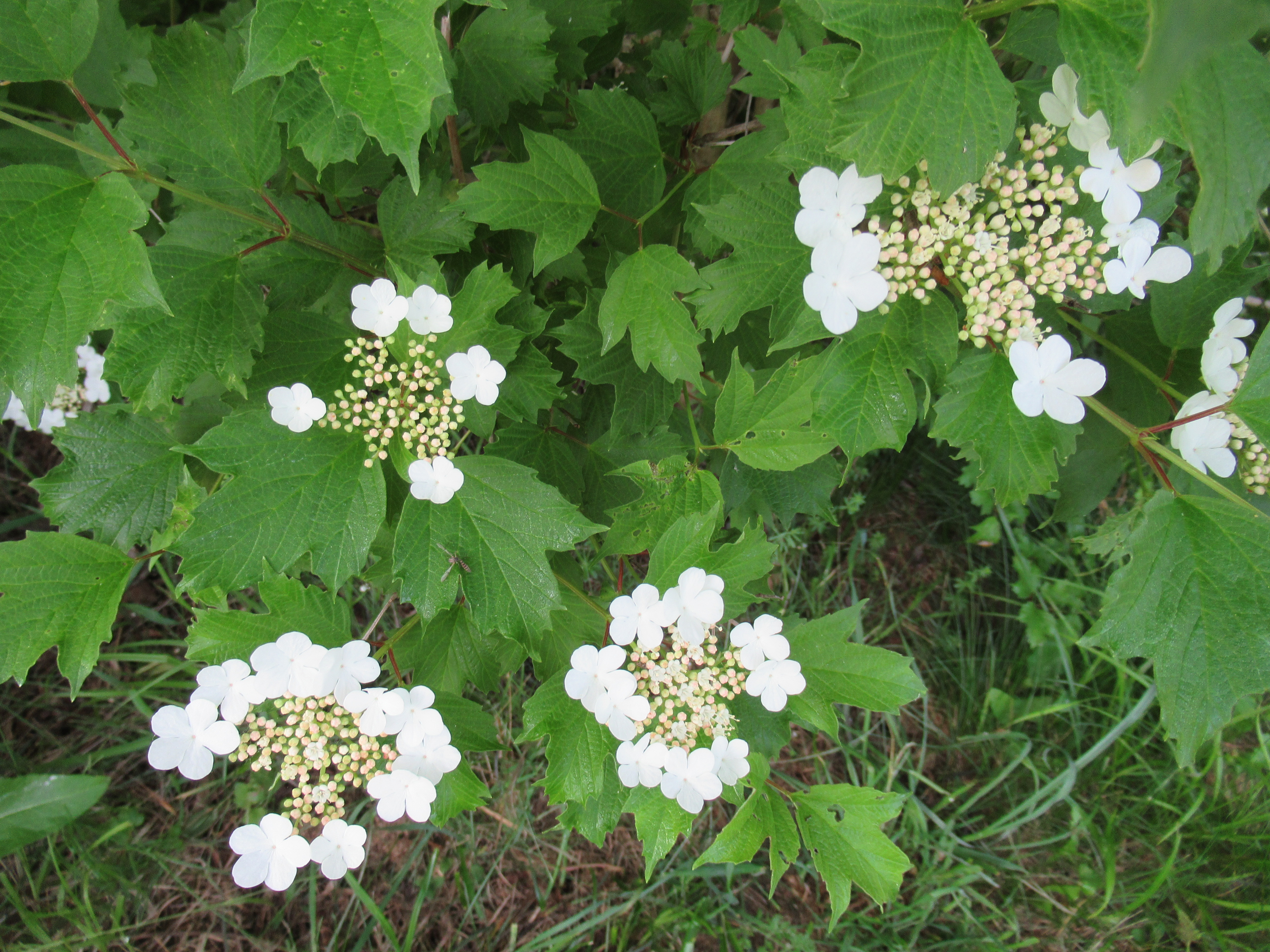
The purple robe locust (below) has abundant aromatic blooms shaped like bunches of colorful grapes. The edible flowers taste a bit like sweet peas and are loved by honeybees which transform the nectar onto delicious honey.
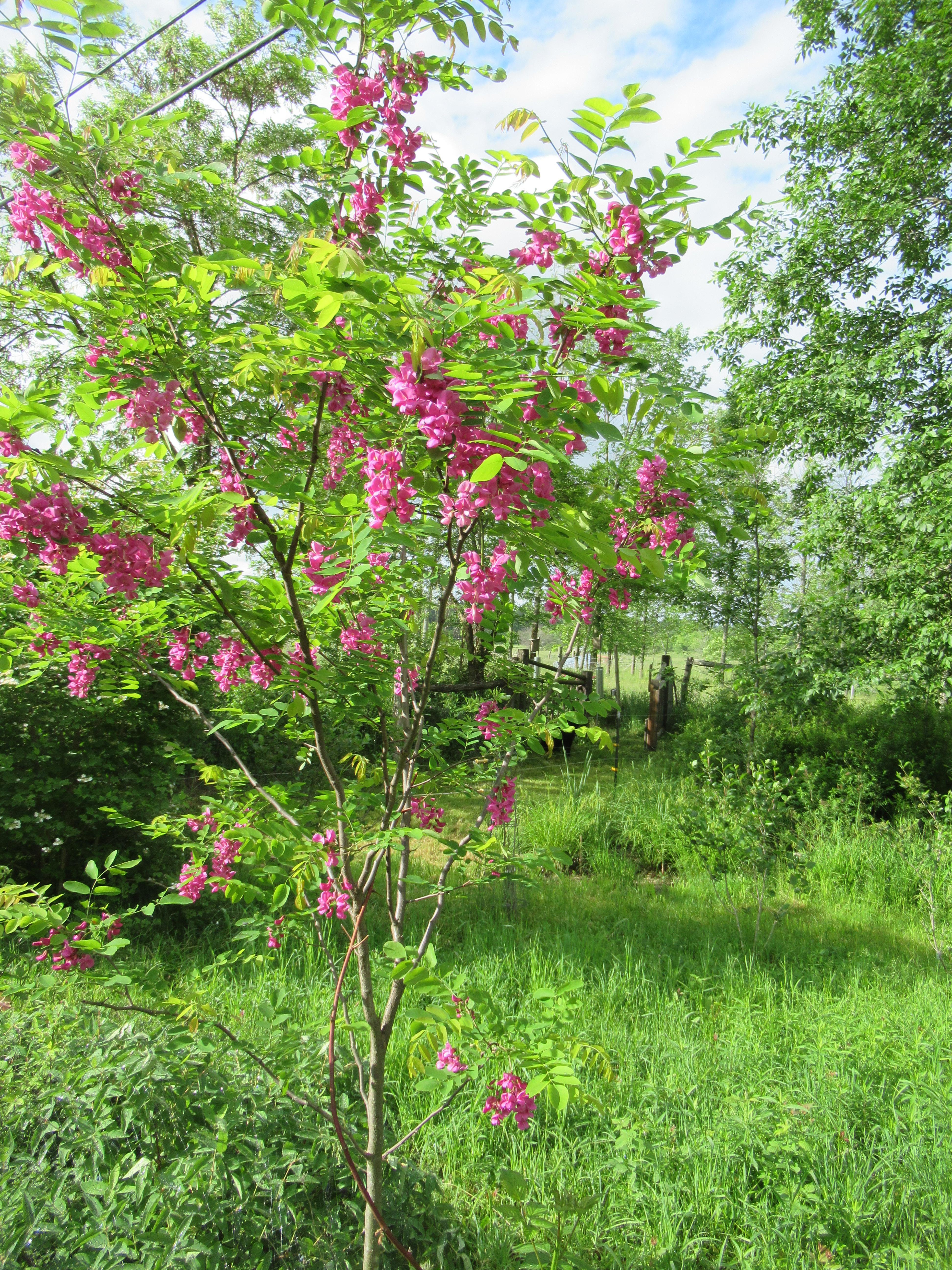
The bloom of the thimble-berry (below), a native plant with raspberry-like fruits shaped like thimbles, has showy white or pink flowers which open sequentially throughout the month.
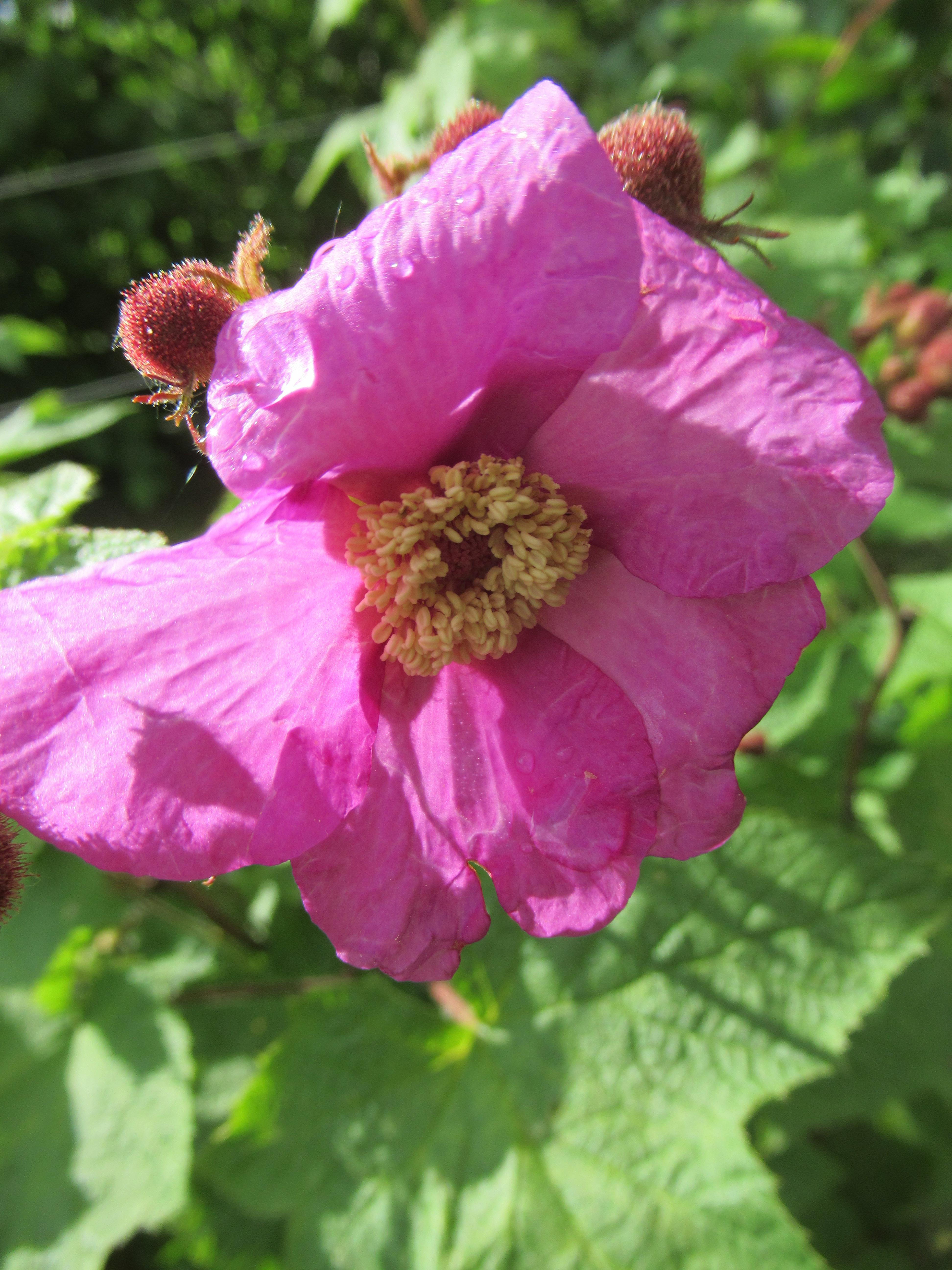
A stroll around the edible forest on a cloudy day in mid-September 2022
Any time of year there is something new happening in the Enchanted Edible Forest.
After an extended drought we recently received several inches of welcome rain, and the plants in the edible forest have responded!
Herbs and perennial vegetables have surged with new growth. Newly appearing chive, sweet cicely, Good King Henry and Turkish Rocket leaves are as fresh and tender as in spring. Egyptian onion bulbs formed in summer have fallen to the ground and produced new scallions.
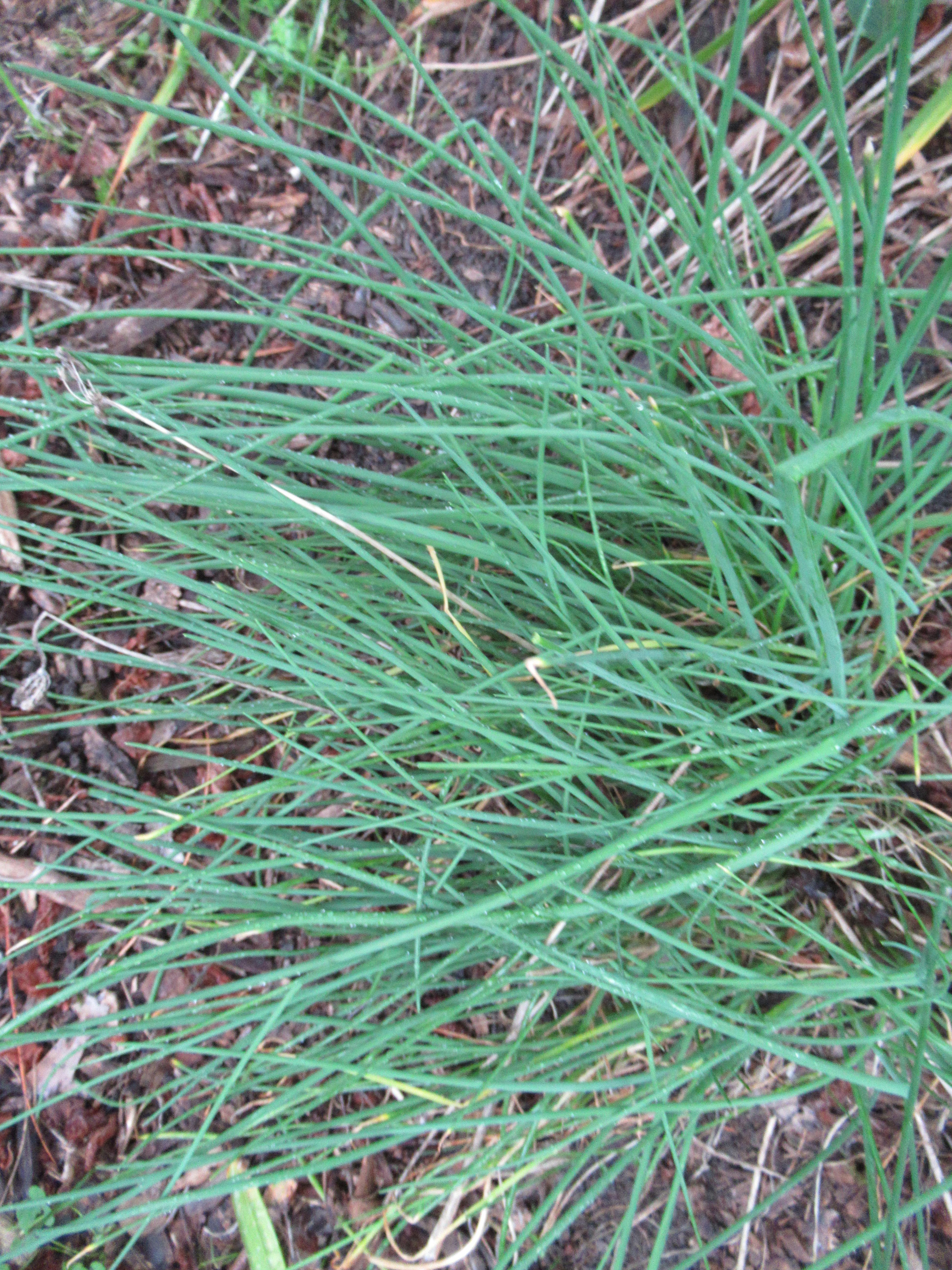
Chive (above) and sweet cicely (below)
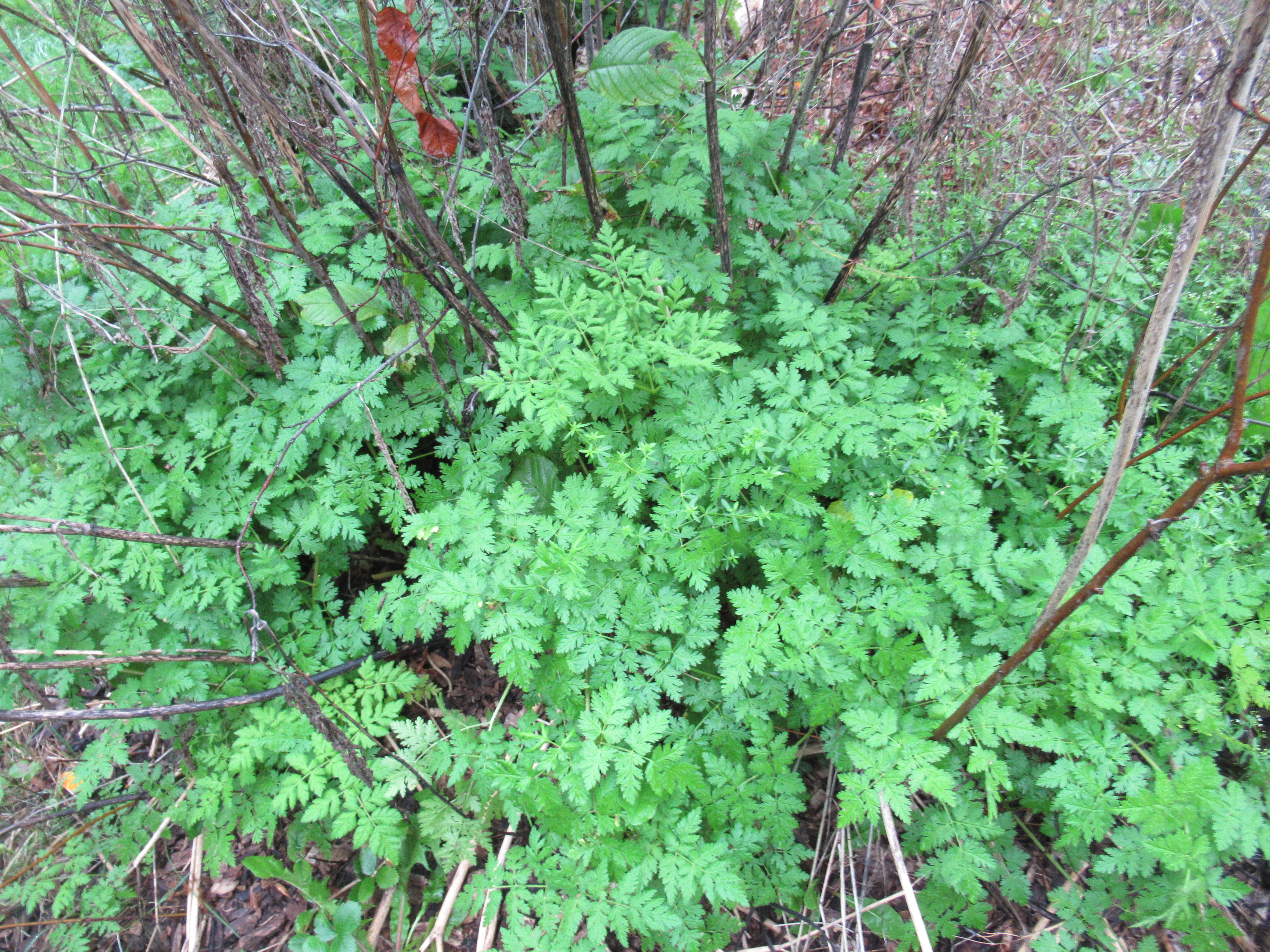
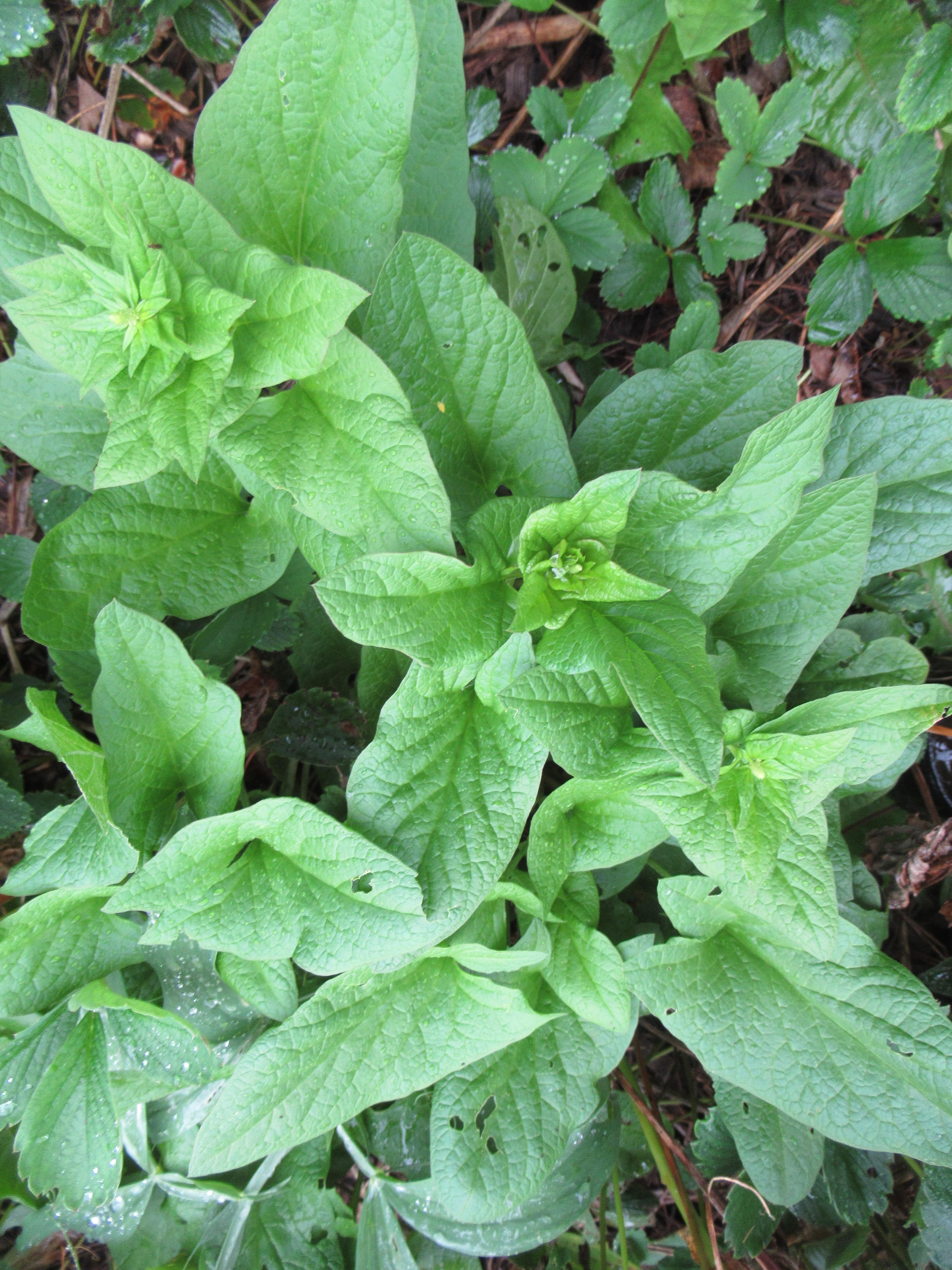
Good King Henry (above) and scallions (below)
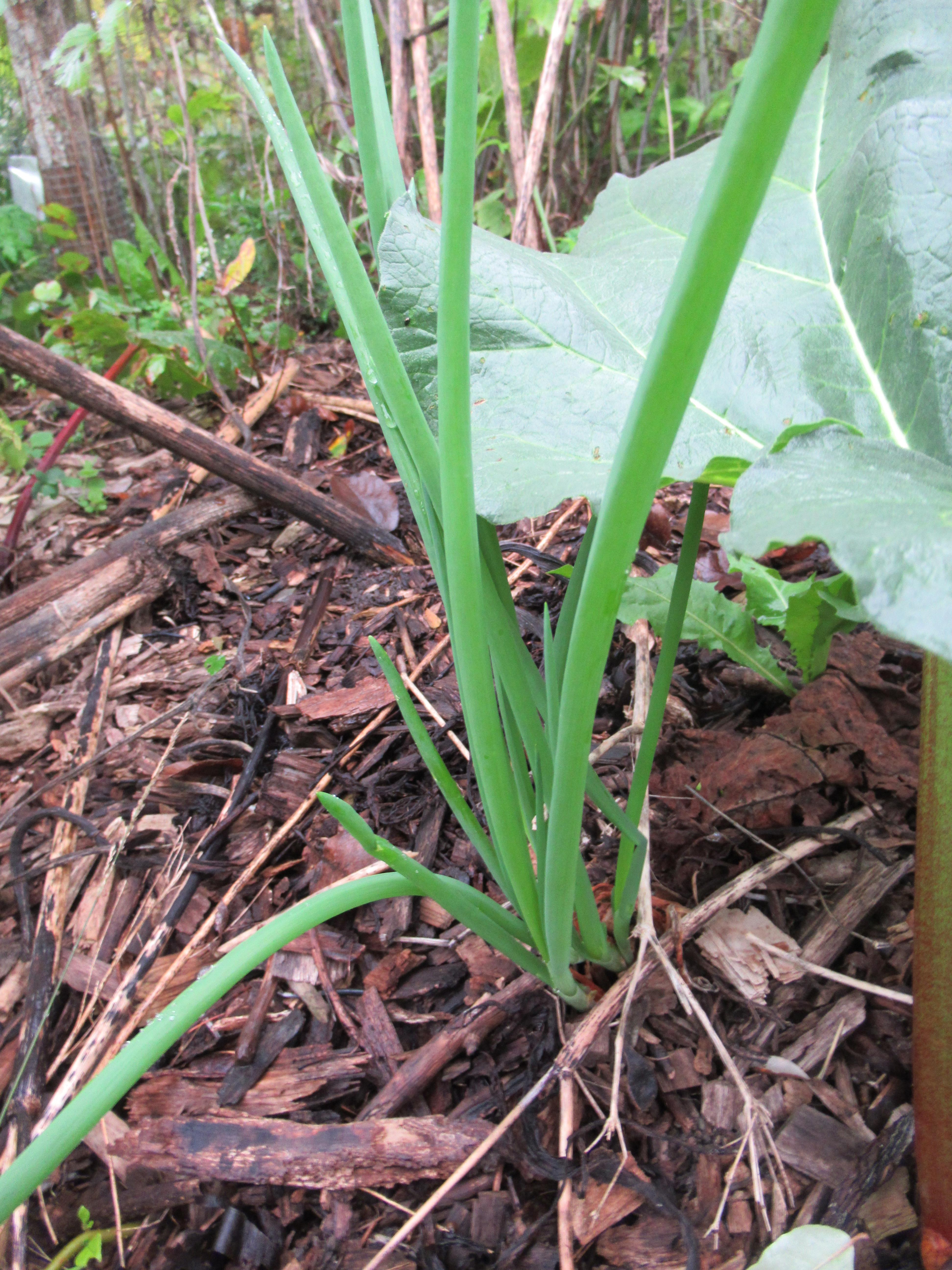
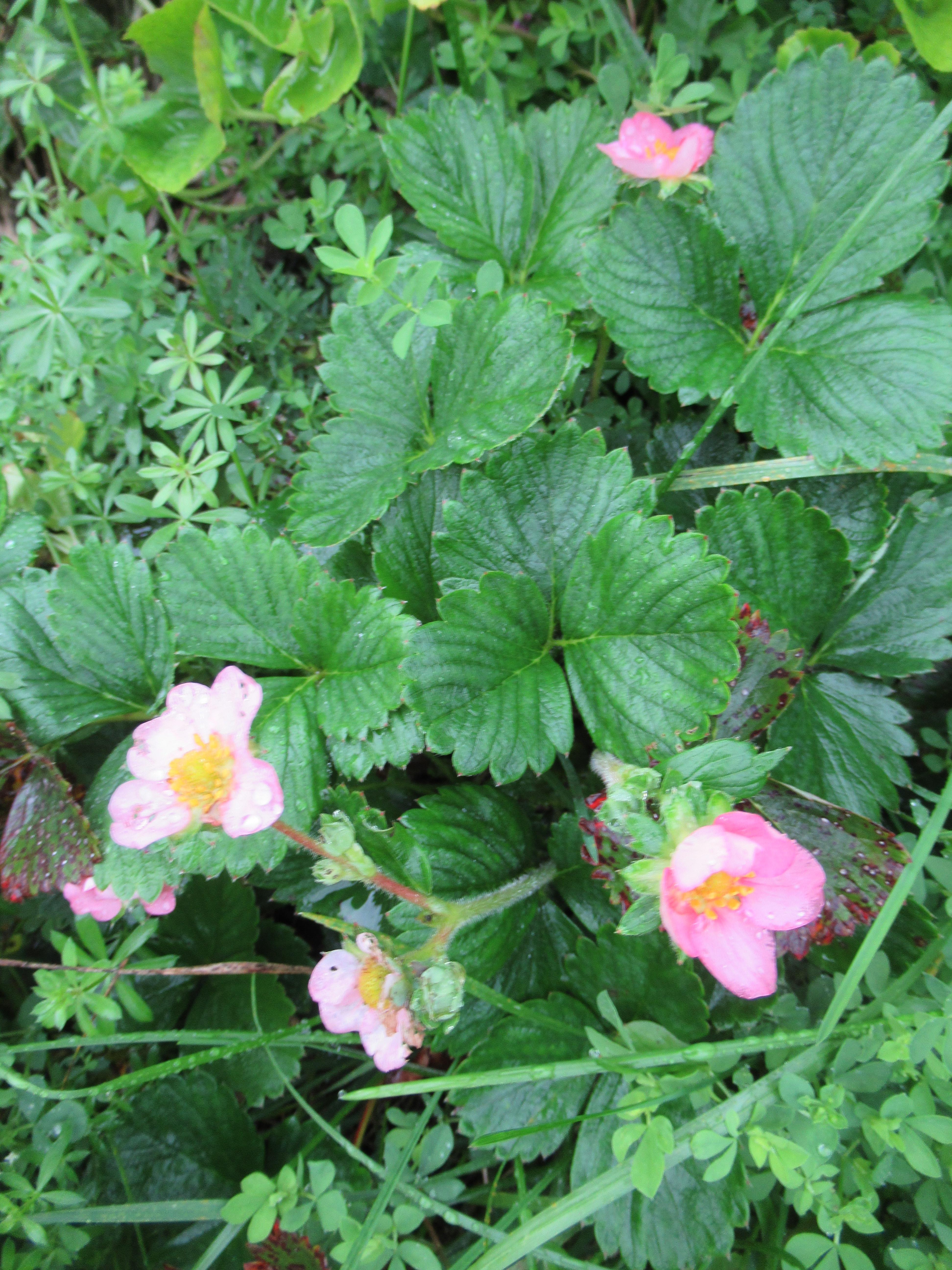
Gasana day neutral strawberries (above) are flowering anew and, providing there are no frosts, will produce ripe fruit in a few weeks. Prelude raspberries (below), delayed by the drought, are now producing their luscious second crop.
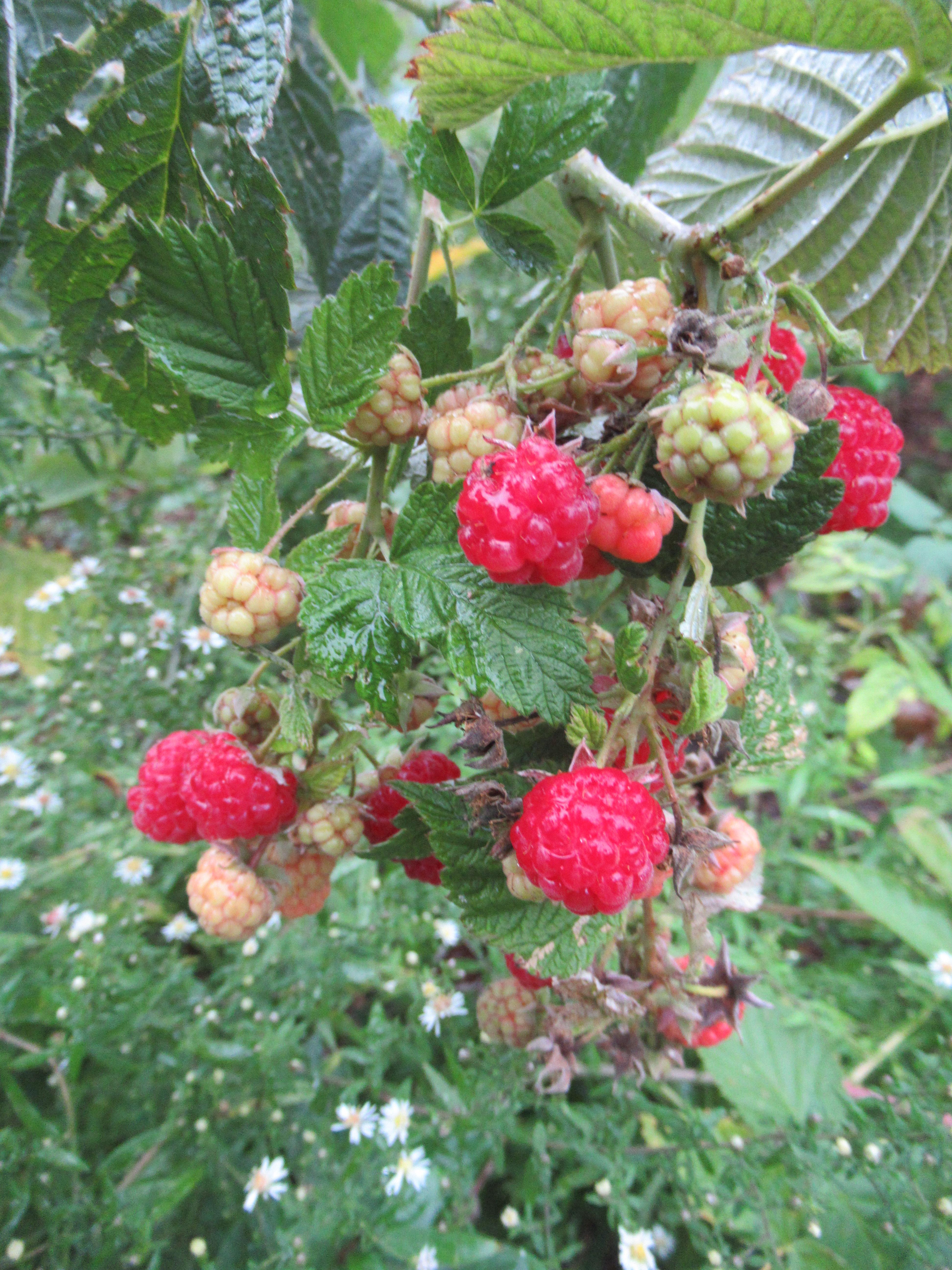
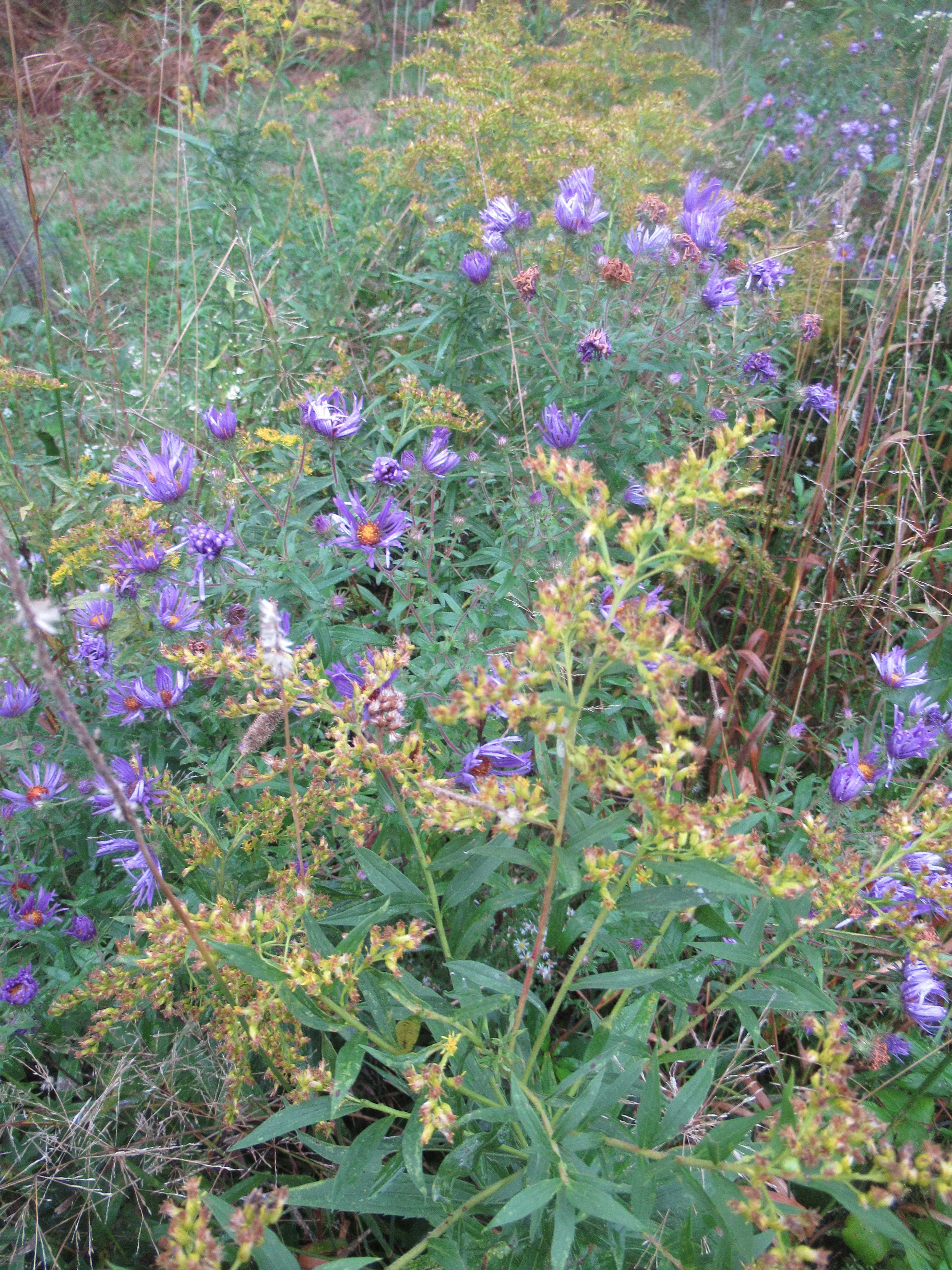
Fresh blooms adorn wild aster (above), golden rod, borage and perennial sweet pea, attracting pollinators, while paw paw and Aronia are beginning to don their fall colors.
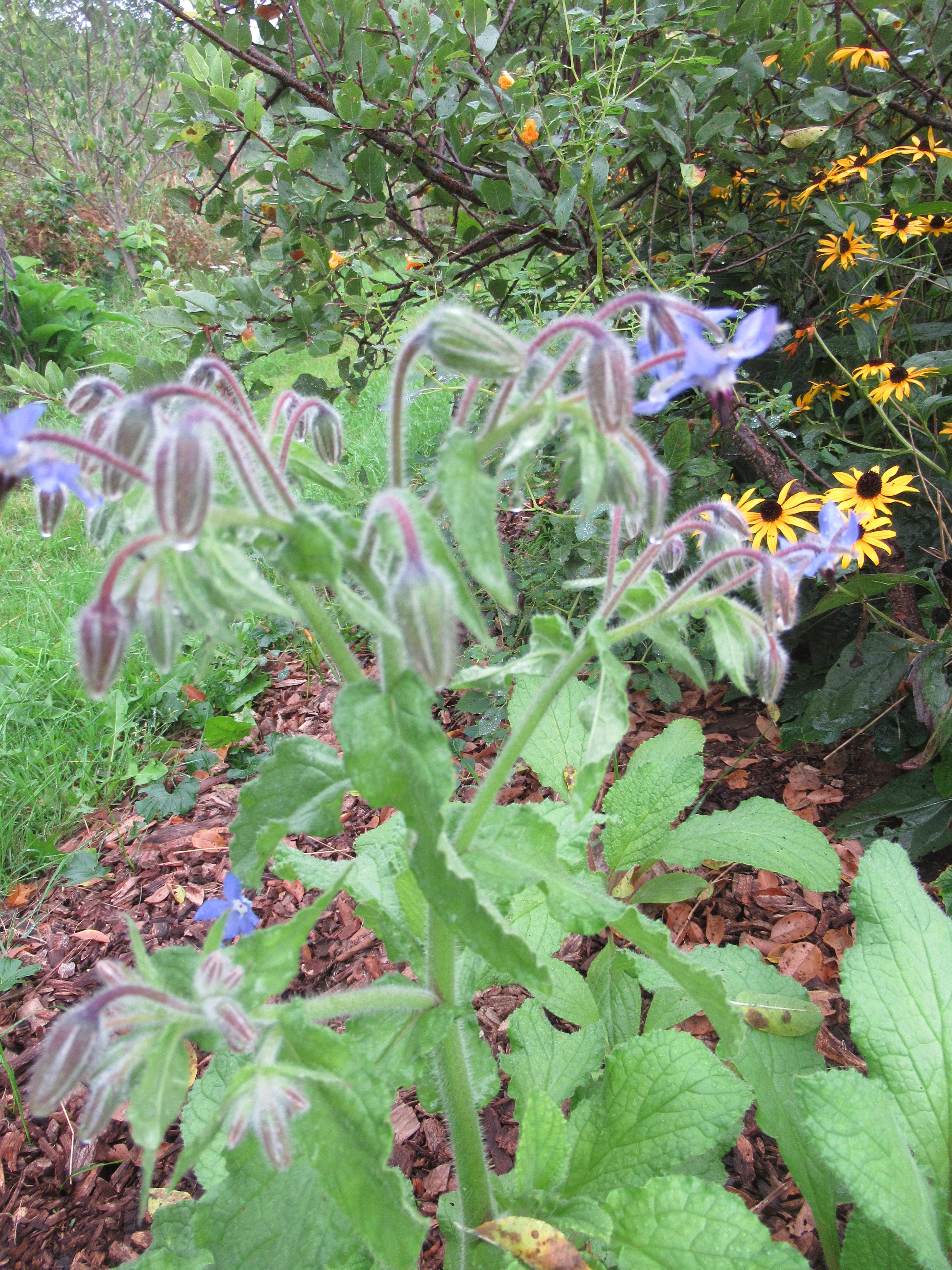
Borage (above) and perennial sweet pea (below)
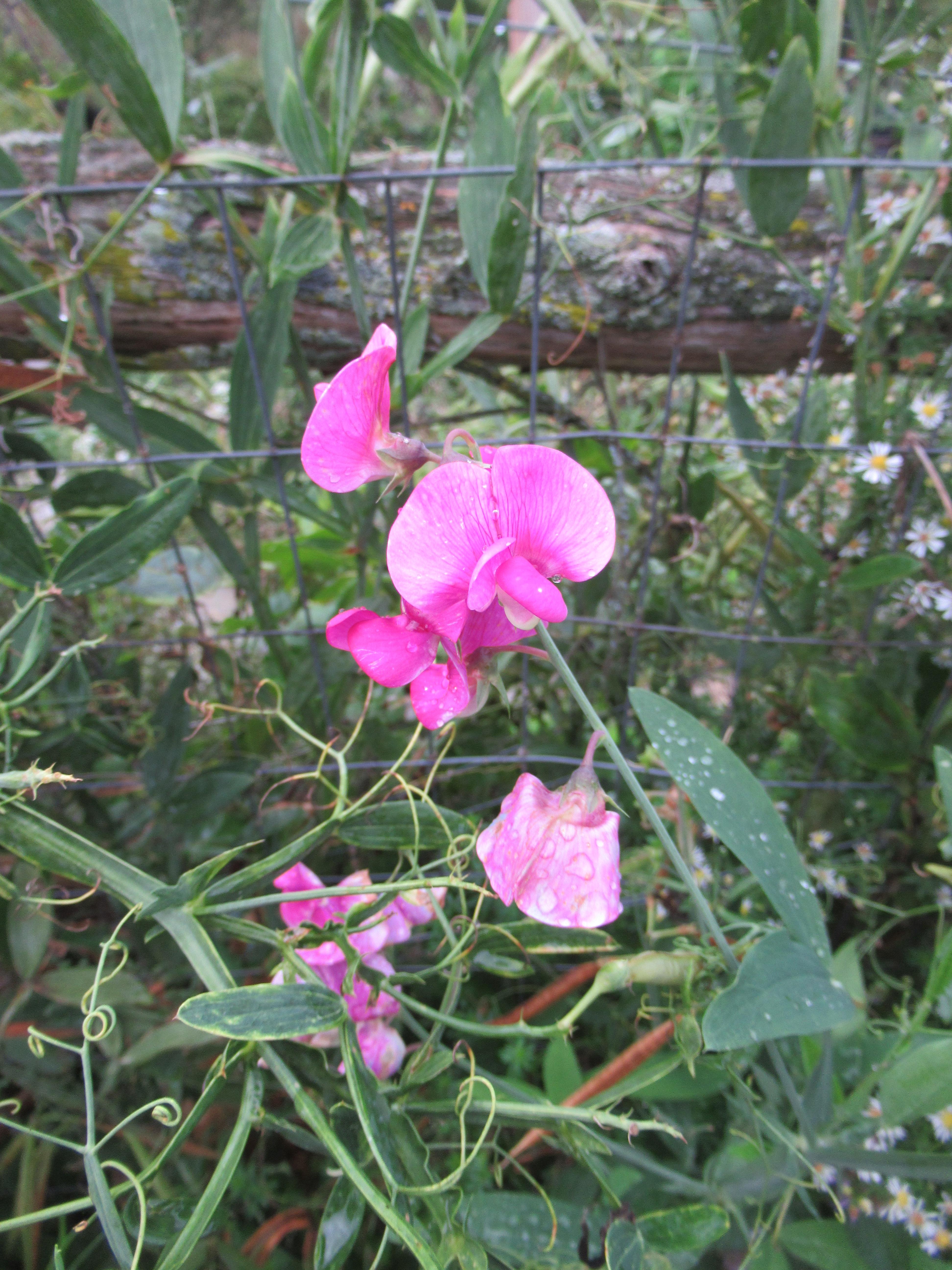
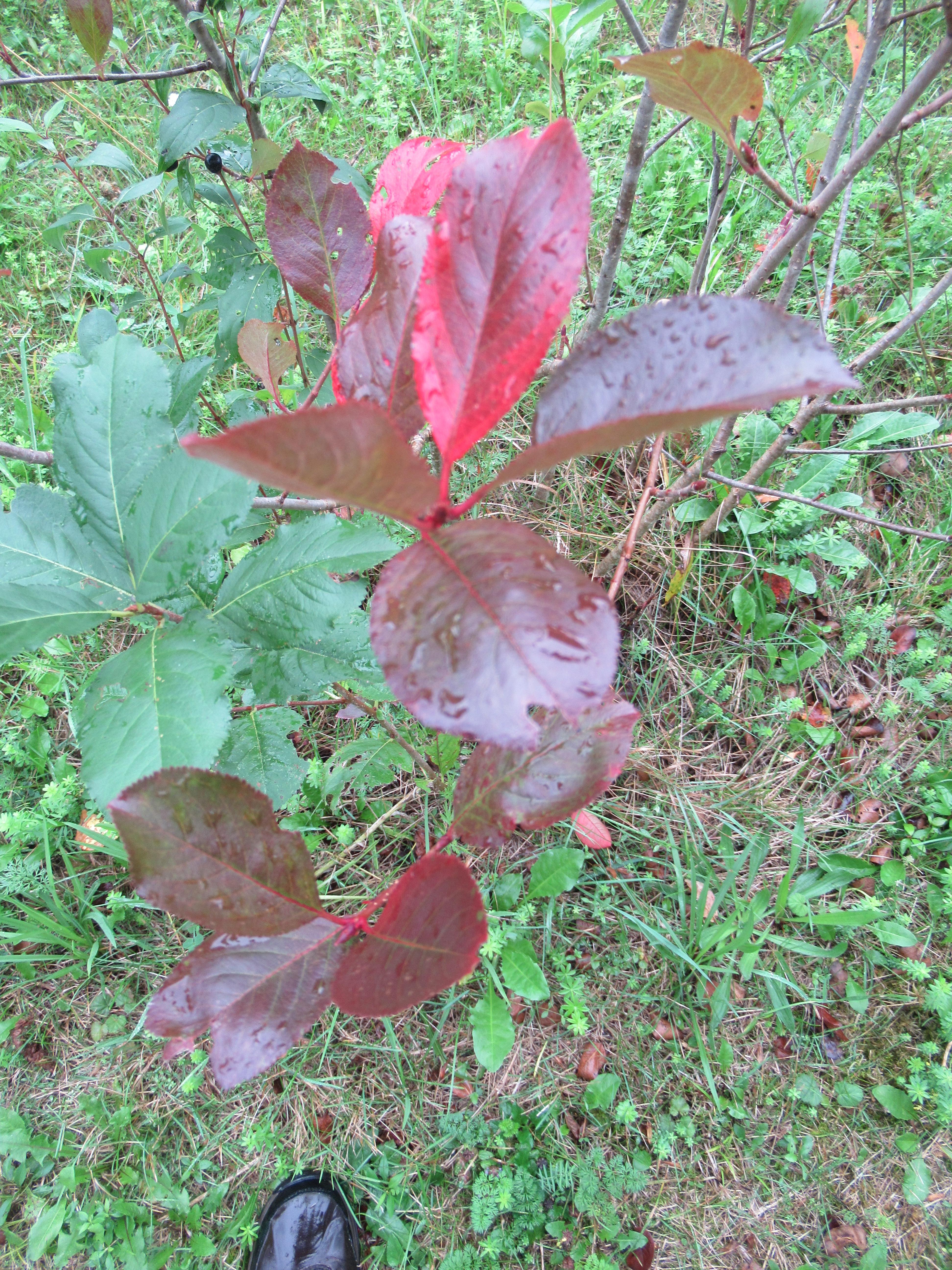
Aronia (above) and paw paw (below)
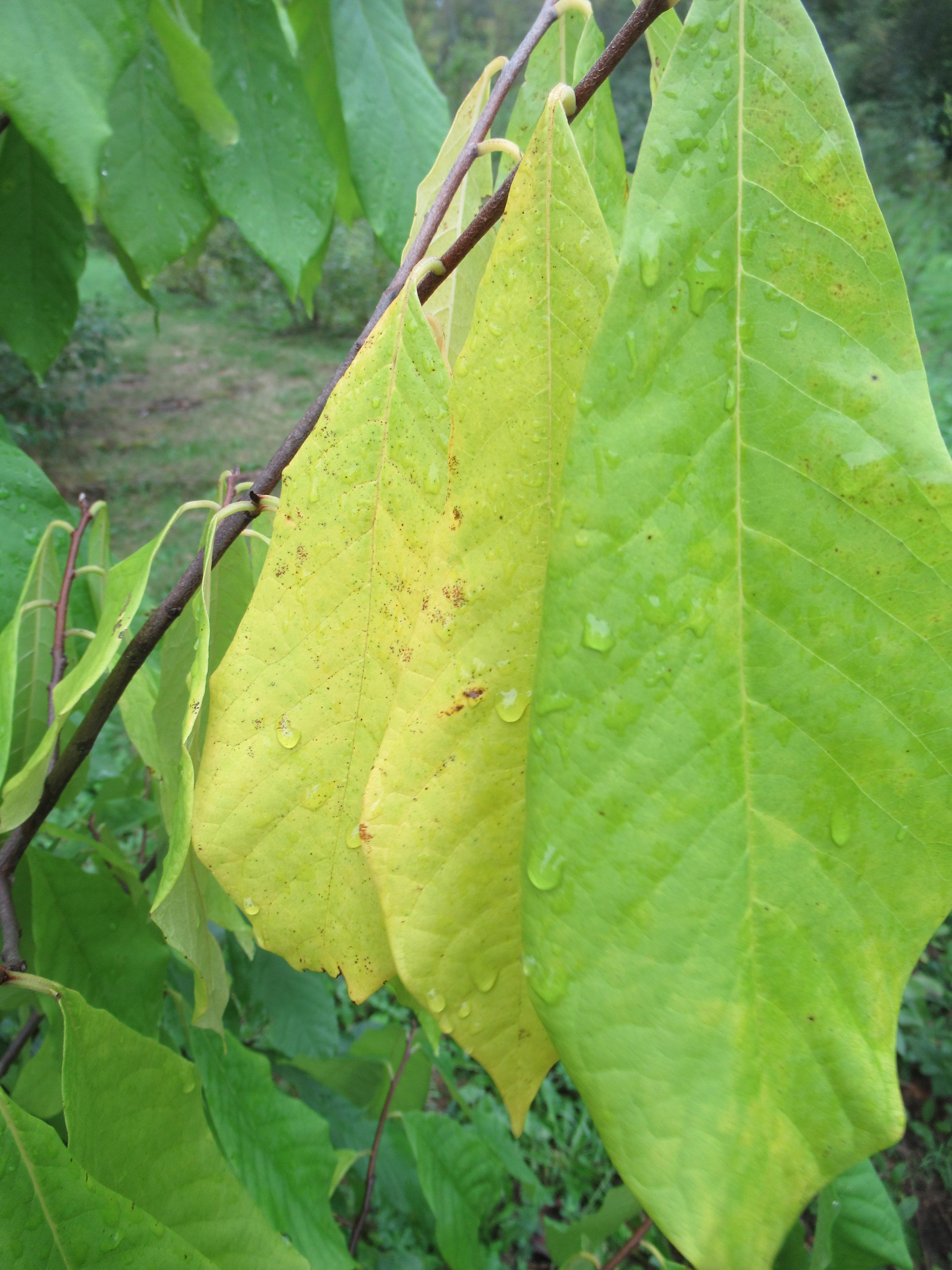
What we’re harvesting in the Enchanted edible Forest second half of August
August 2022
It’s been very dry here on our farm and some crops have suffered, like my second crop of Prelude raspberries. But the edible forest as a whole is so resilient that there are plenty of other foods to reap. This year we have a bumper crop of elderberries which were cascading above one of the ponds before I waded into the water to pick most of them yesterday. Elderberries (below) make great pies and sauces and can be processed into a syrup renowned to have beneficial health effects.
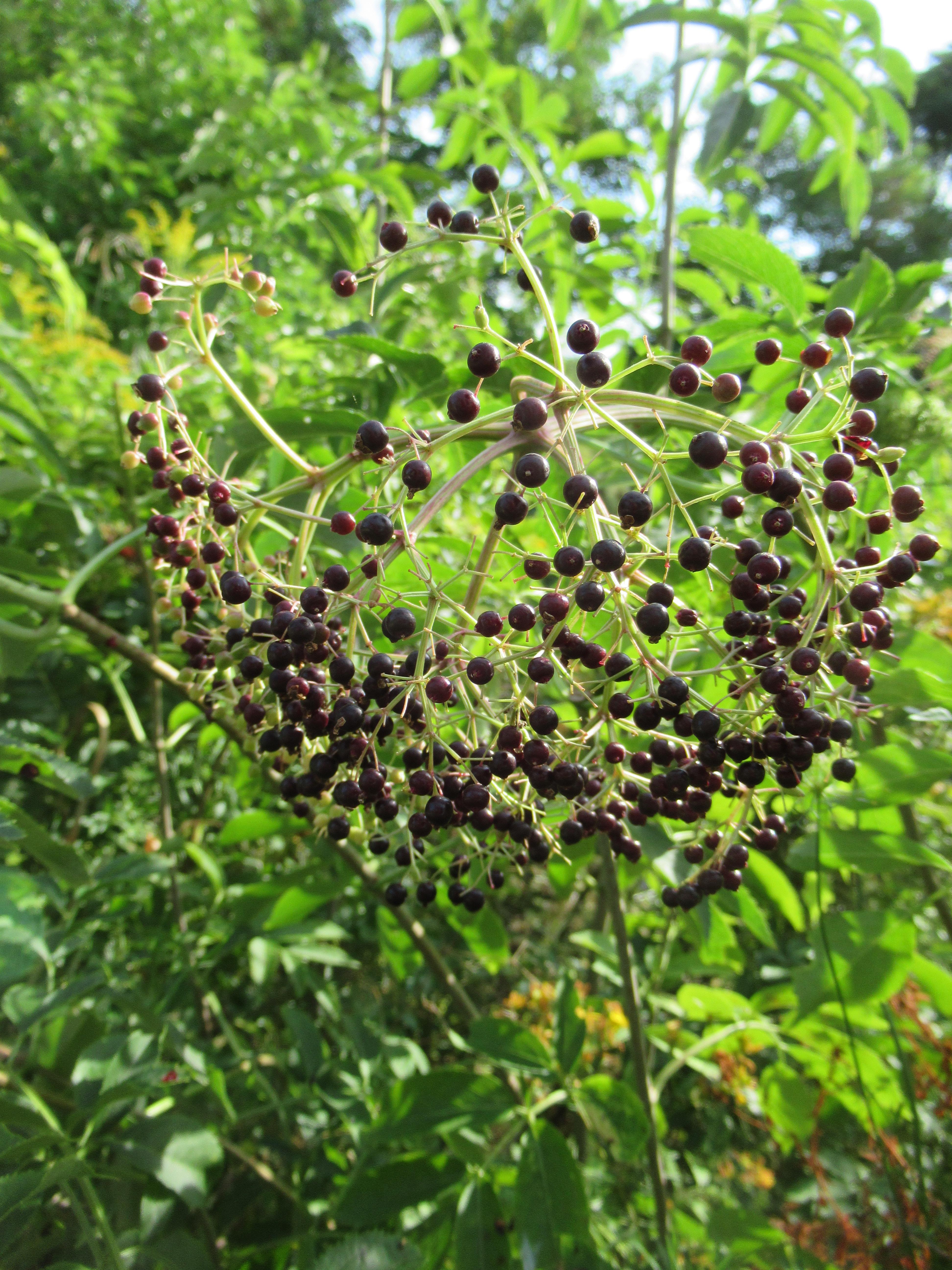
Another plant with herbal attributes are hops, which are also ripe as I write this. Someone suggested filling a cachet with them to put by one’s pillow to induce a sounder sleep. In addition to being a natural sedative, hops (pictured below) have culinary uses and, of course, are in ingredient when brewing beer.
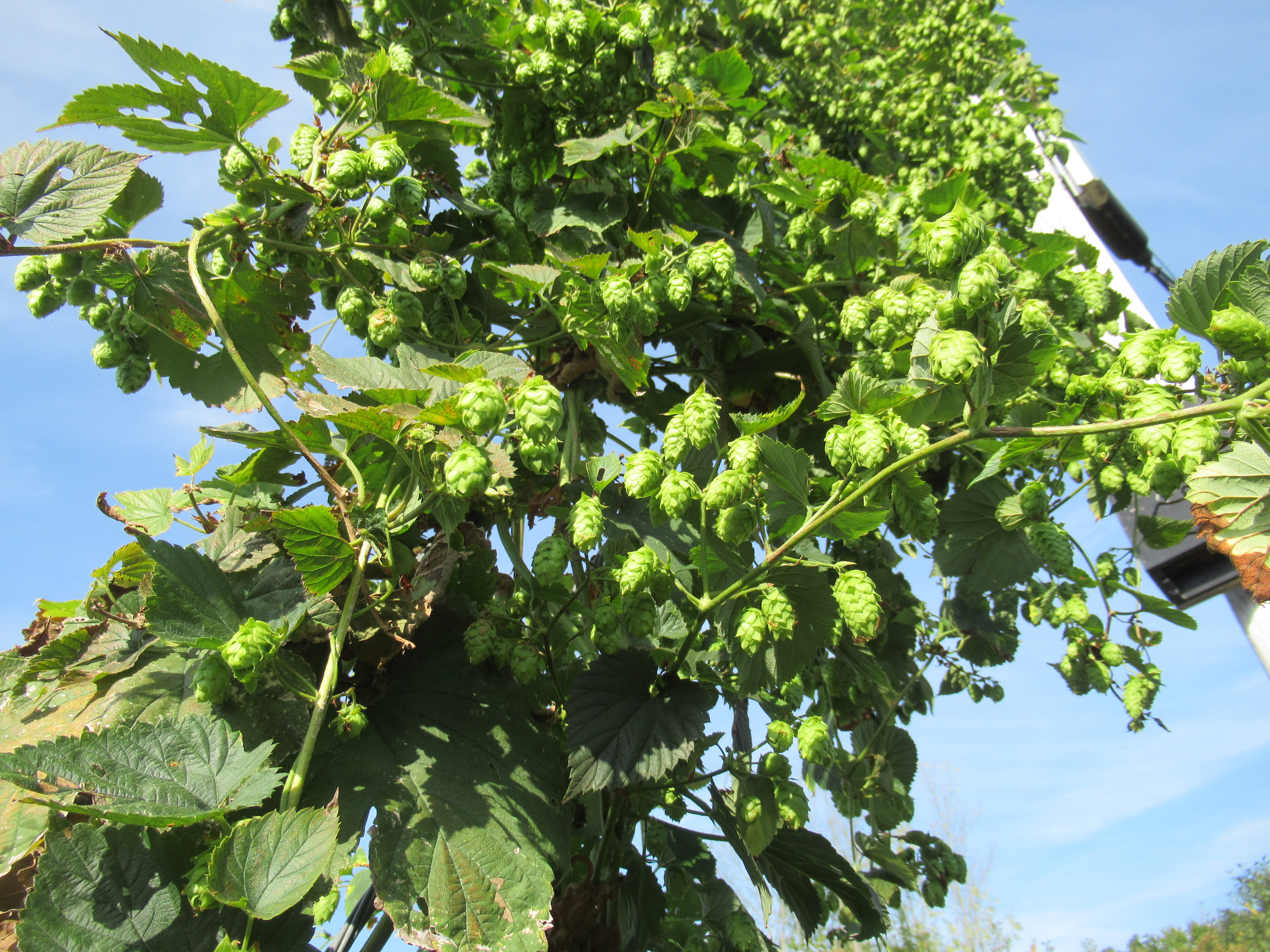
There are a couple of salad ingredients available now: borage, a self-seeding annual whose leaves and dainty flowers are both edible with a distinctive cucumber-like flavor and garden sorrel with its lemony tang.
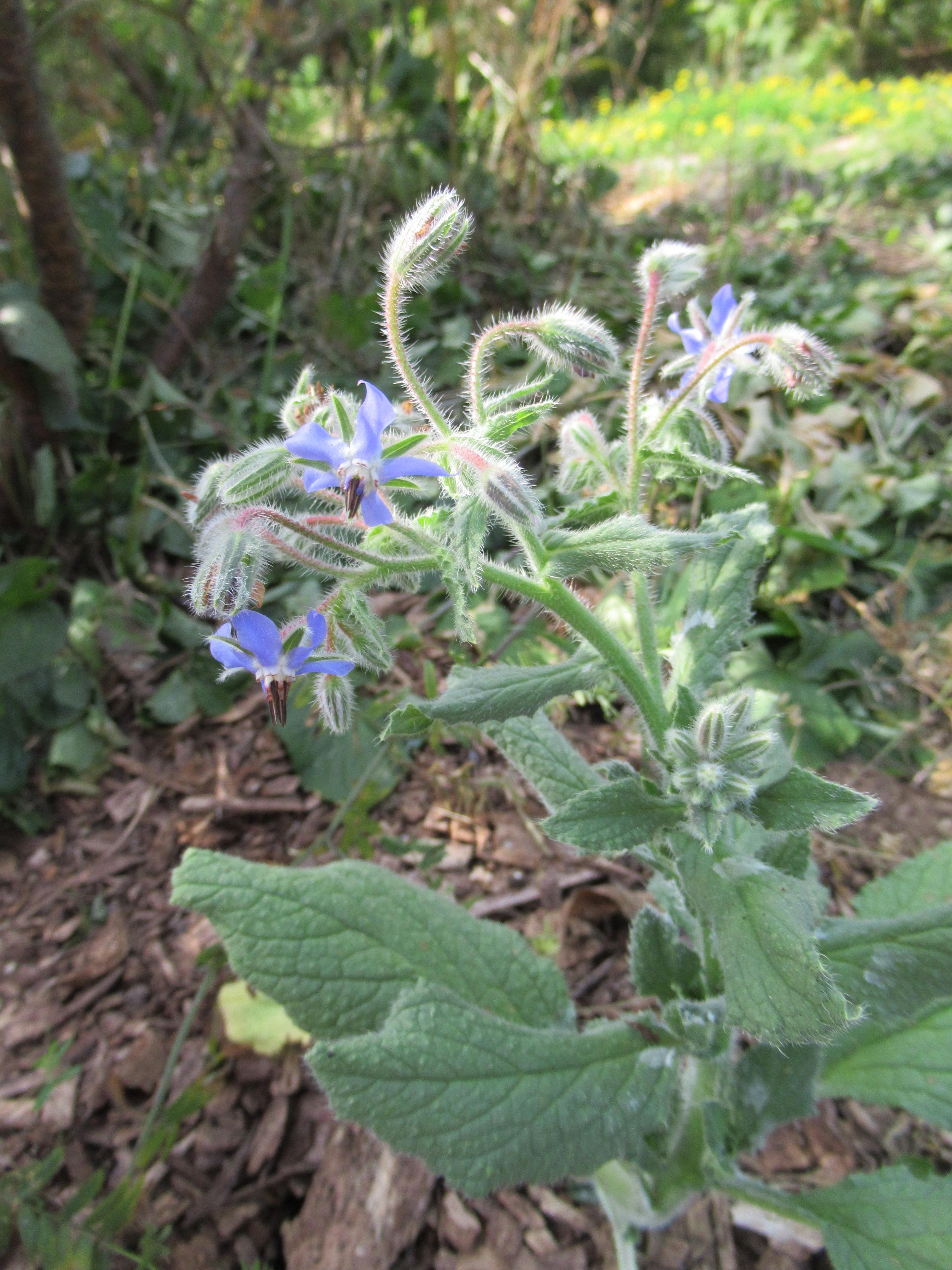
Borage (above) and sorrel (below)
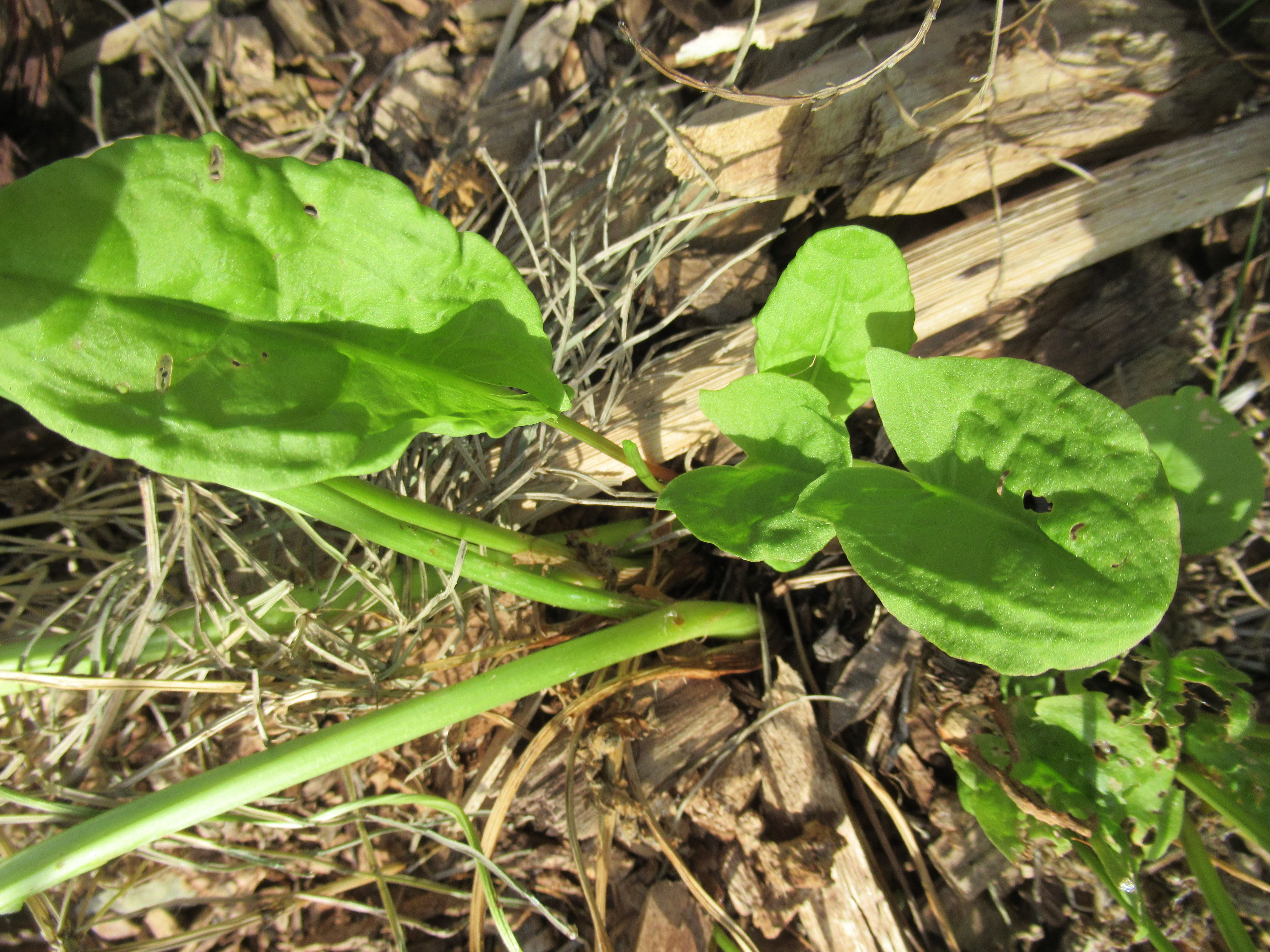
In addition to the herbs and salad ingredients, several fruits are ripening and soon will be ready to pick. Pears look elegant along a branch; grapes are turning blue and are netted to keep birds at bay; ripening plums are being enjoyed by chipmunks who will steal them all if I don’t pick some first!
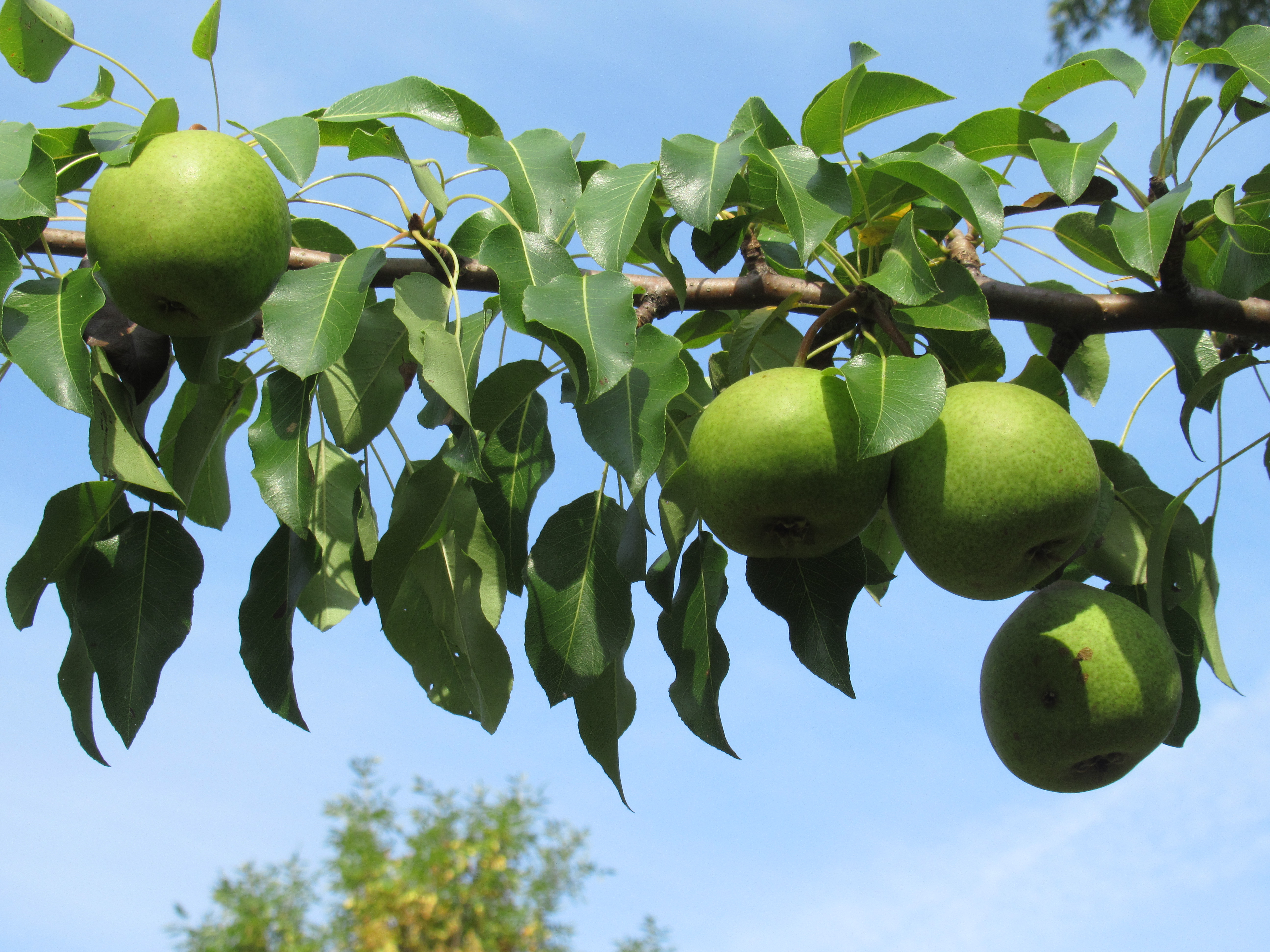
Pears (above) and grapes (below)
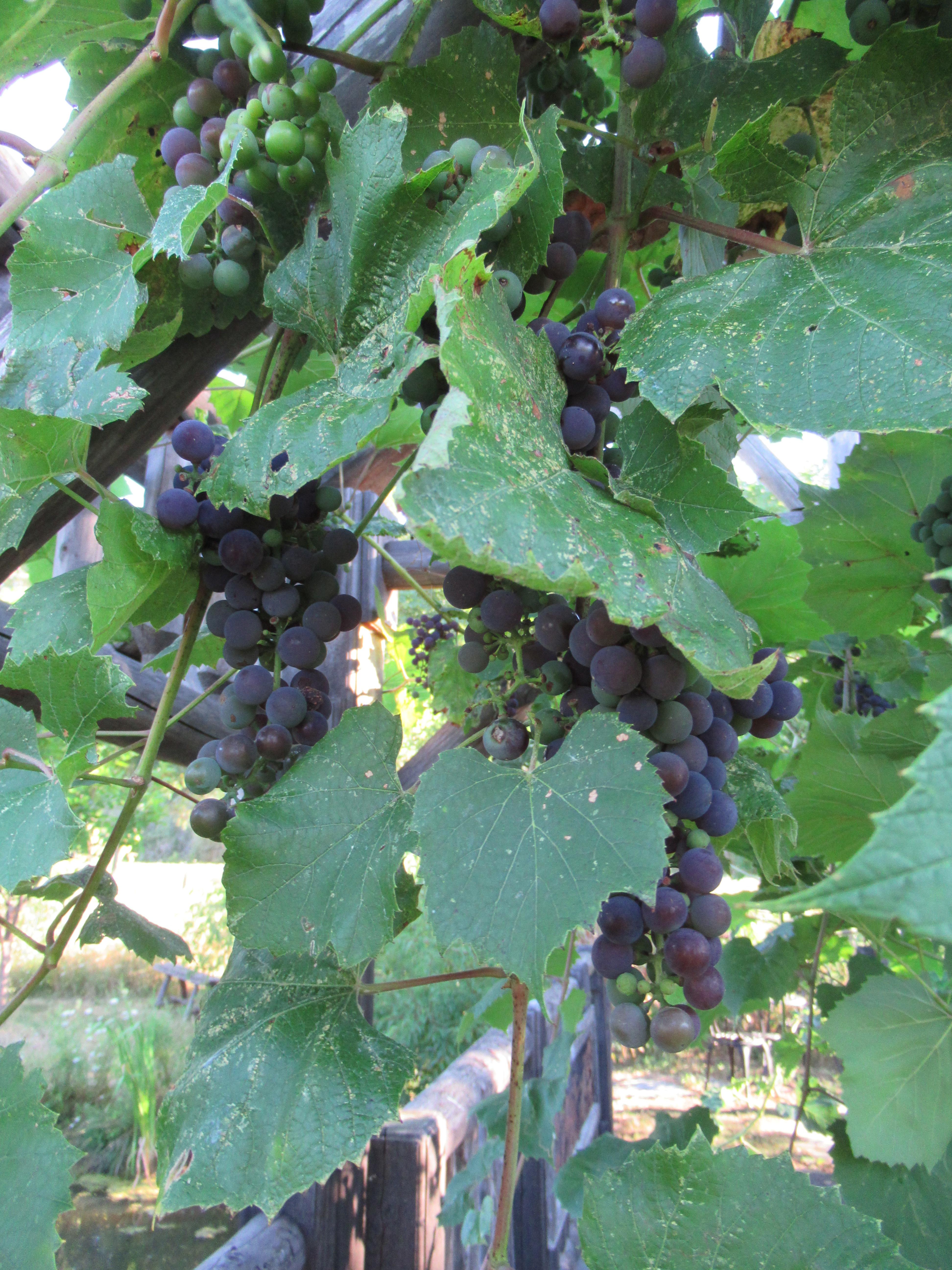
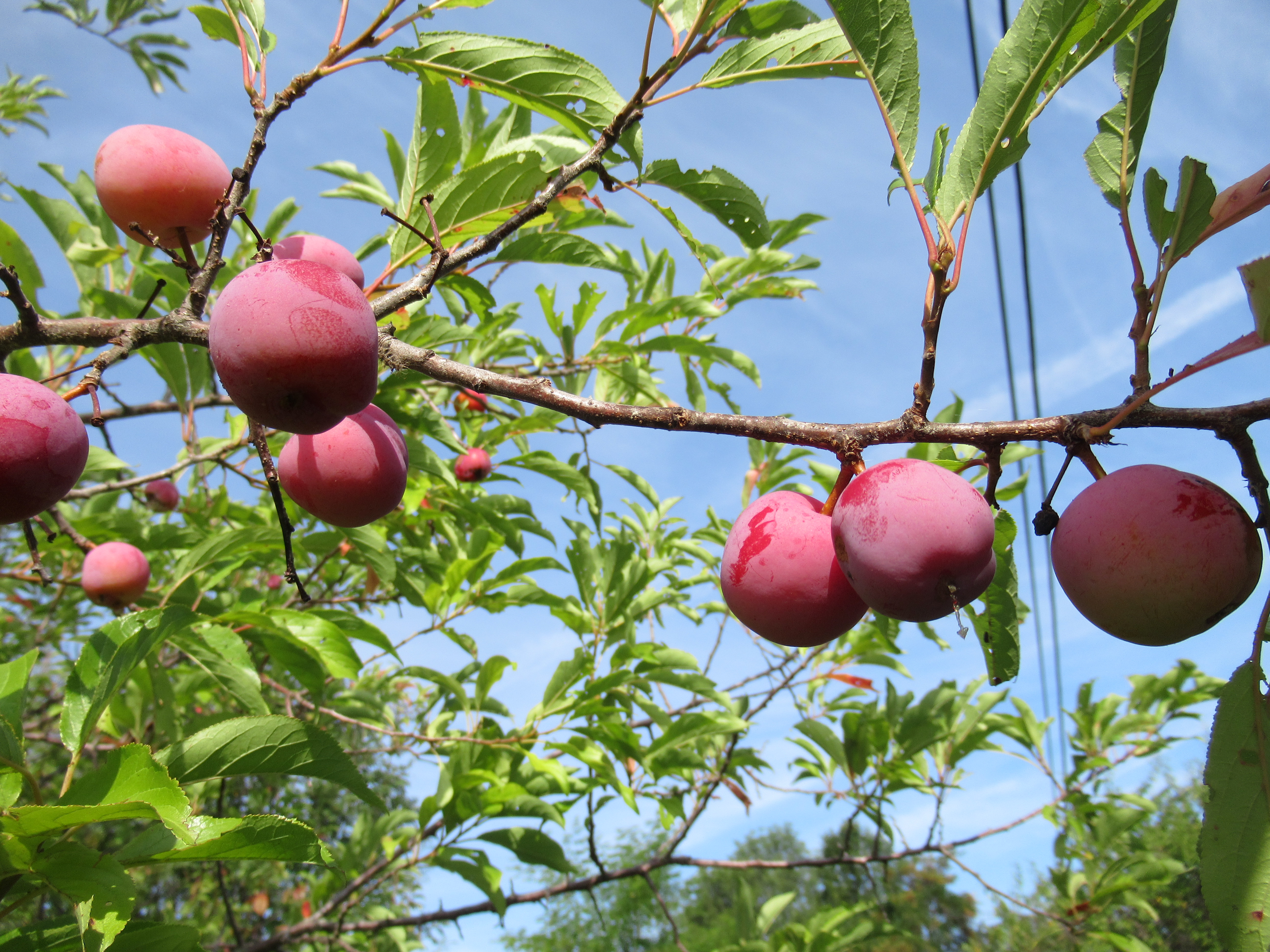
Plums (above) and chipmunk table (below)
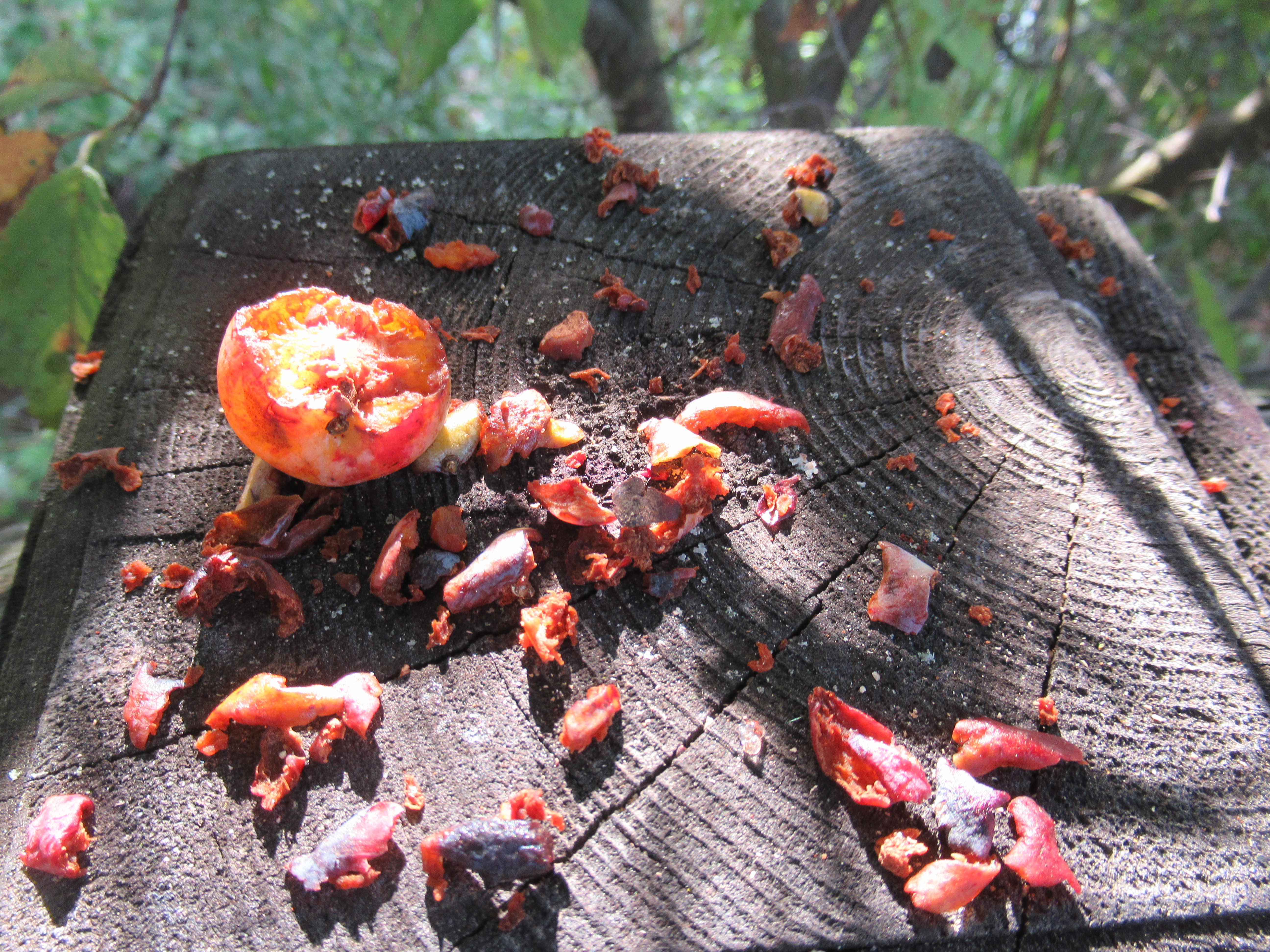
And Aronia berries (below) have turned their classic blackish purple while their leaves have begun to assume the dramatic fall colors characteristic of this decorative native bush.
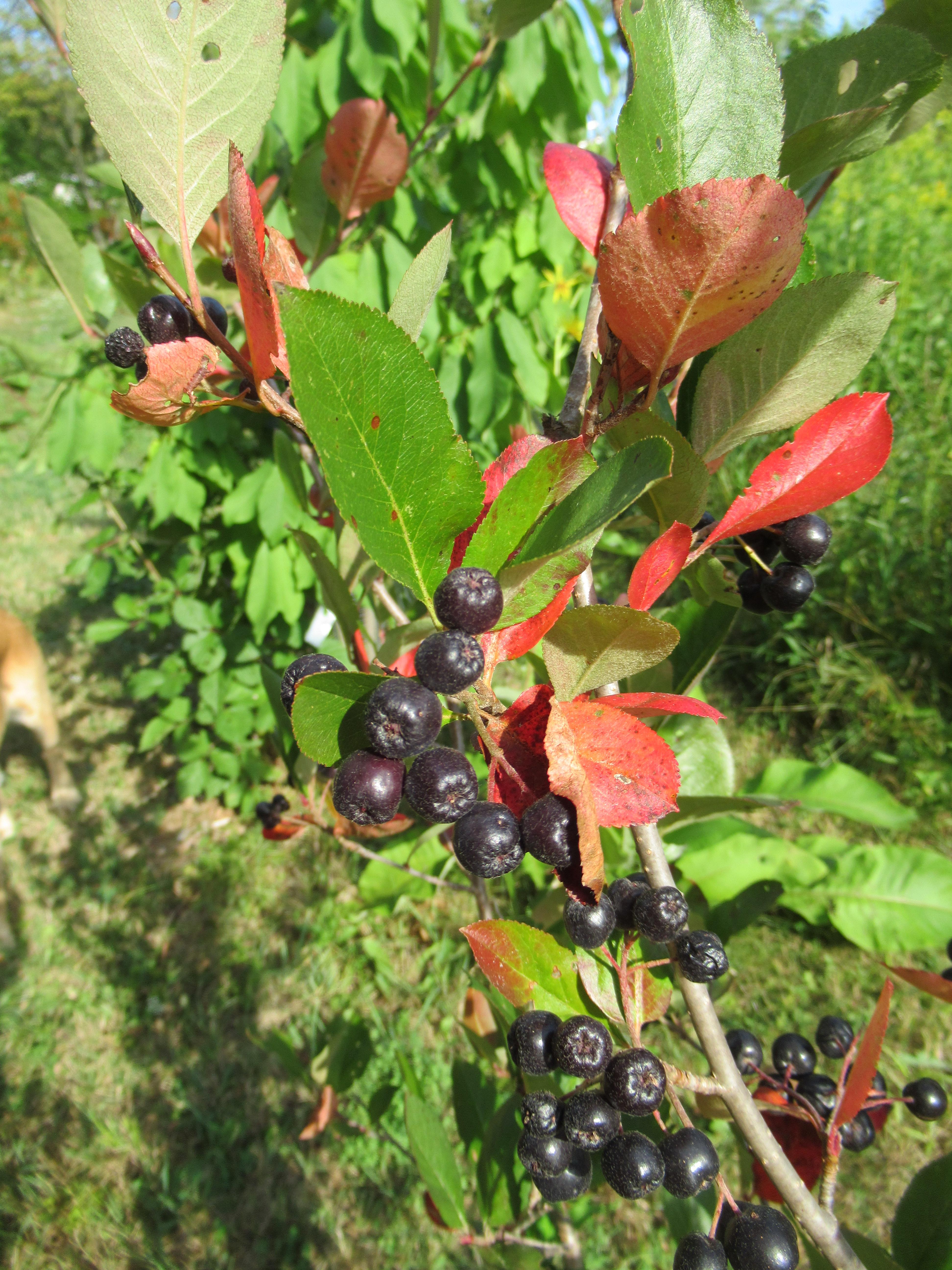
Early Summer in the Enchanted Edible Forest
July 2022
The Enchanted Edible Forest is Bursting with Abundance. Below, edible flowers like rugosa roses (left), elderberry (middle) and day lilies (right) are in full bloom.
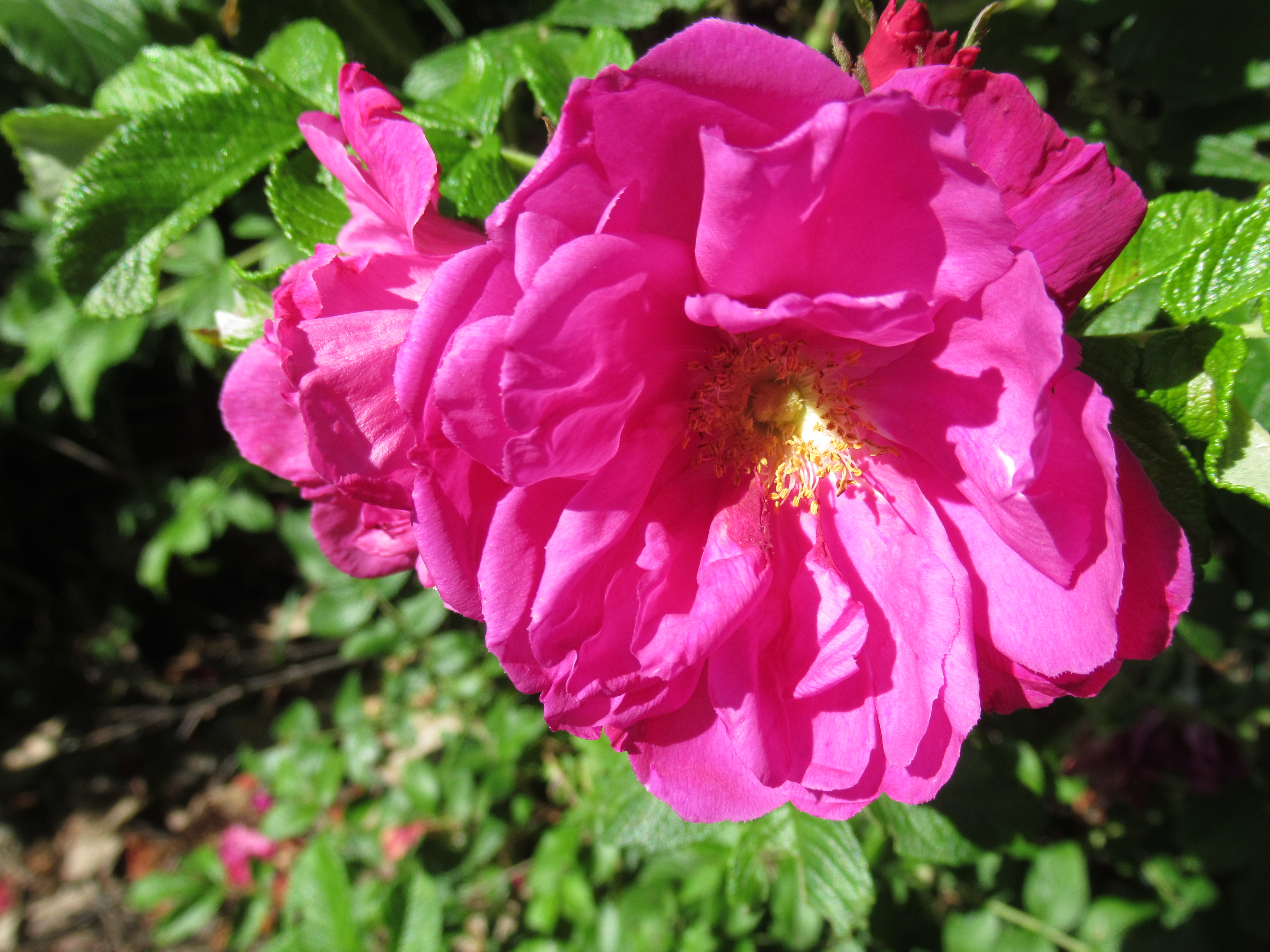
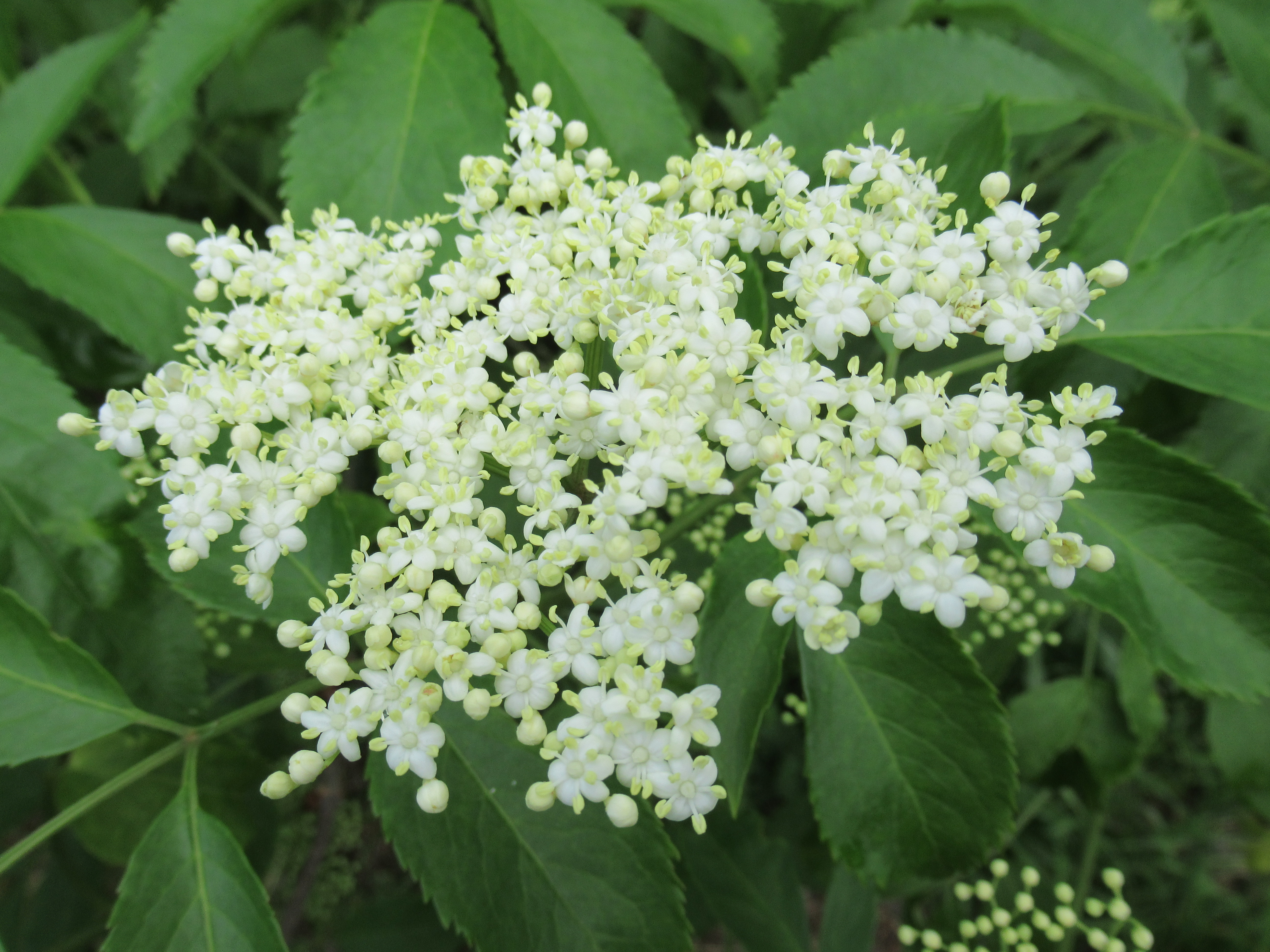
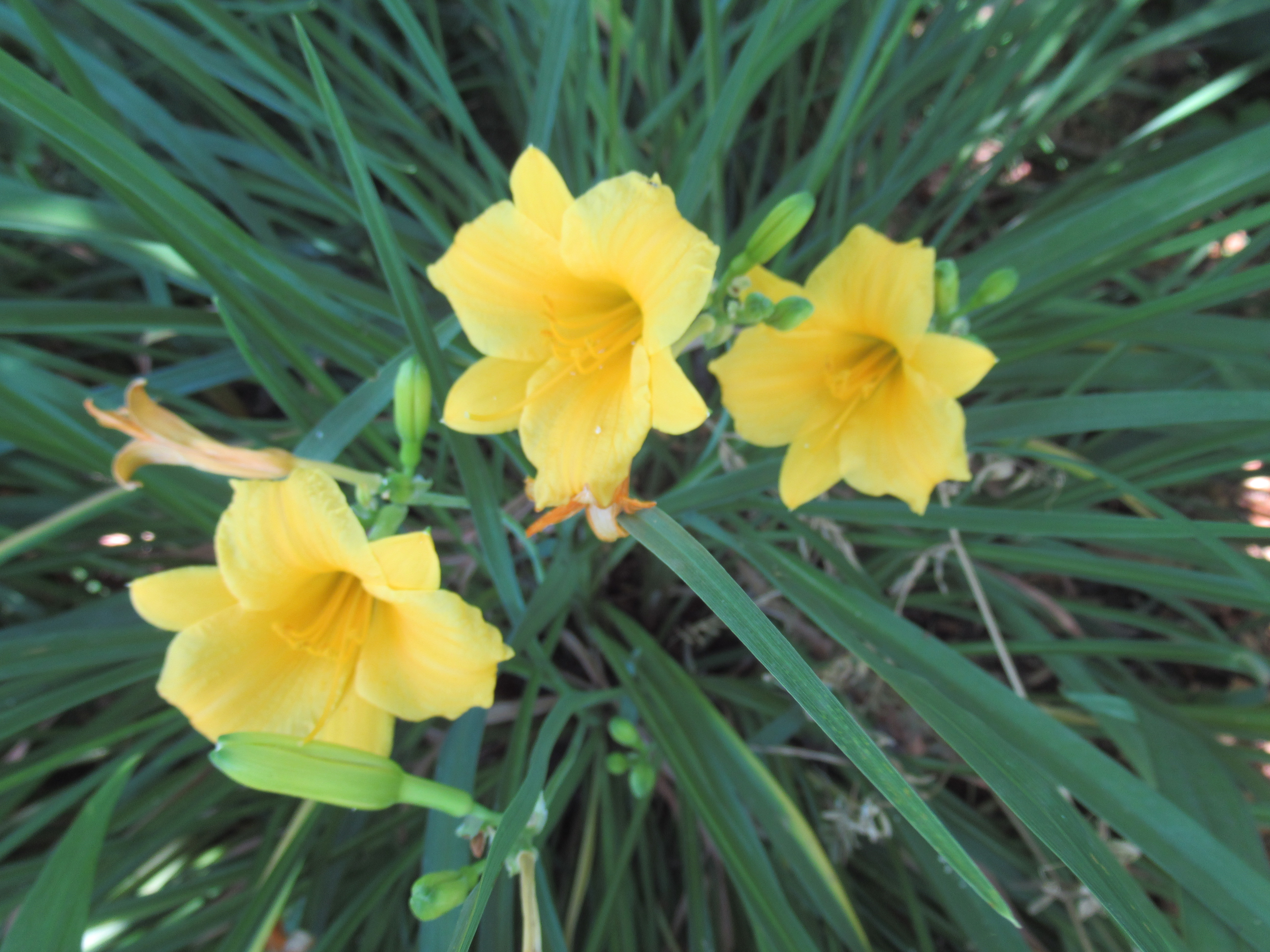
(Below, left to right) Summer Raspberries, red, pink and black currants, gooseberries (bottom left) and jostaberries (bottom right) are ripe and ready to pick! If you are nearby, you can make an appointment to harvest them yourself!
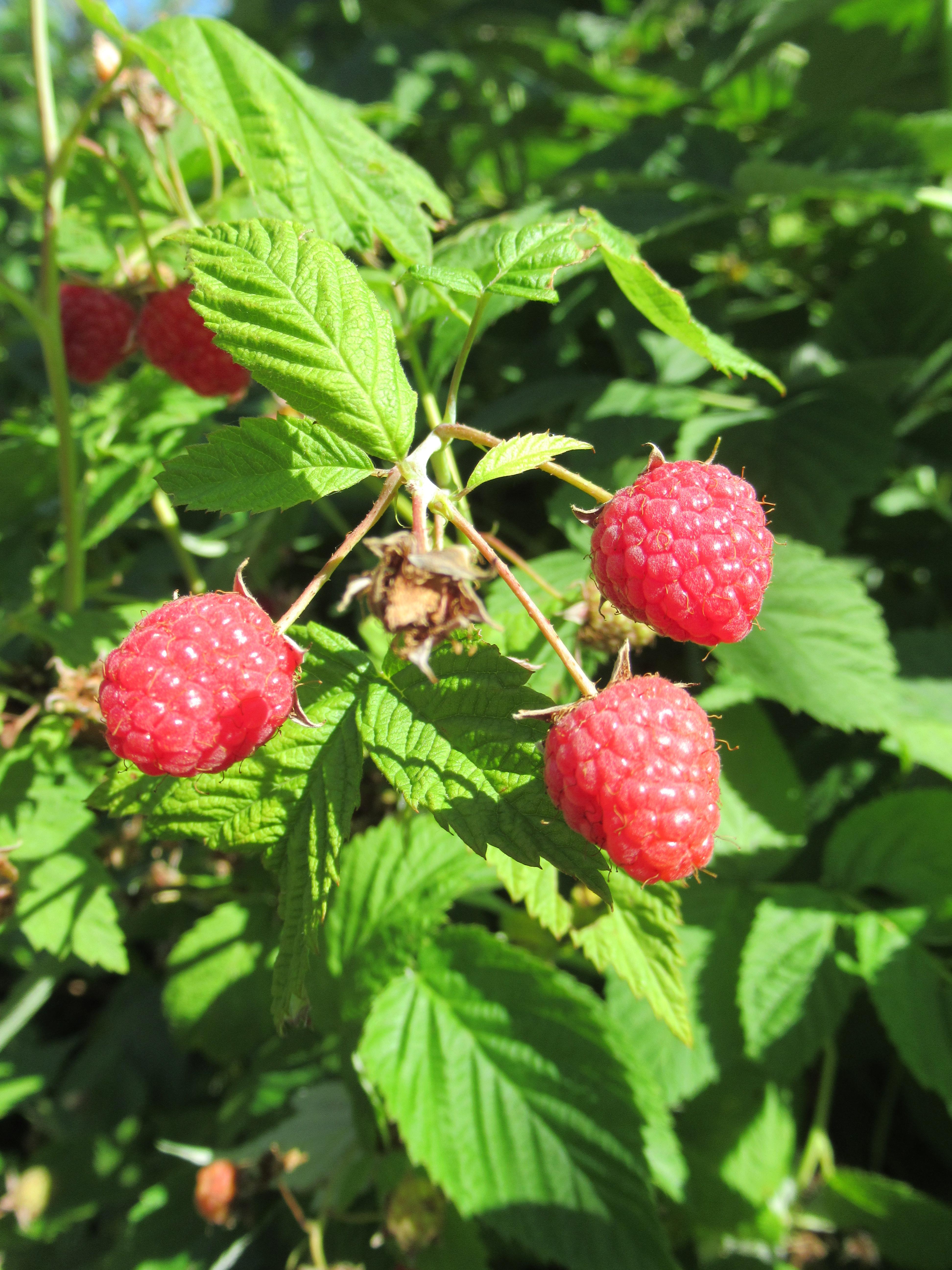
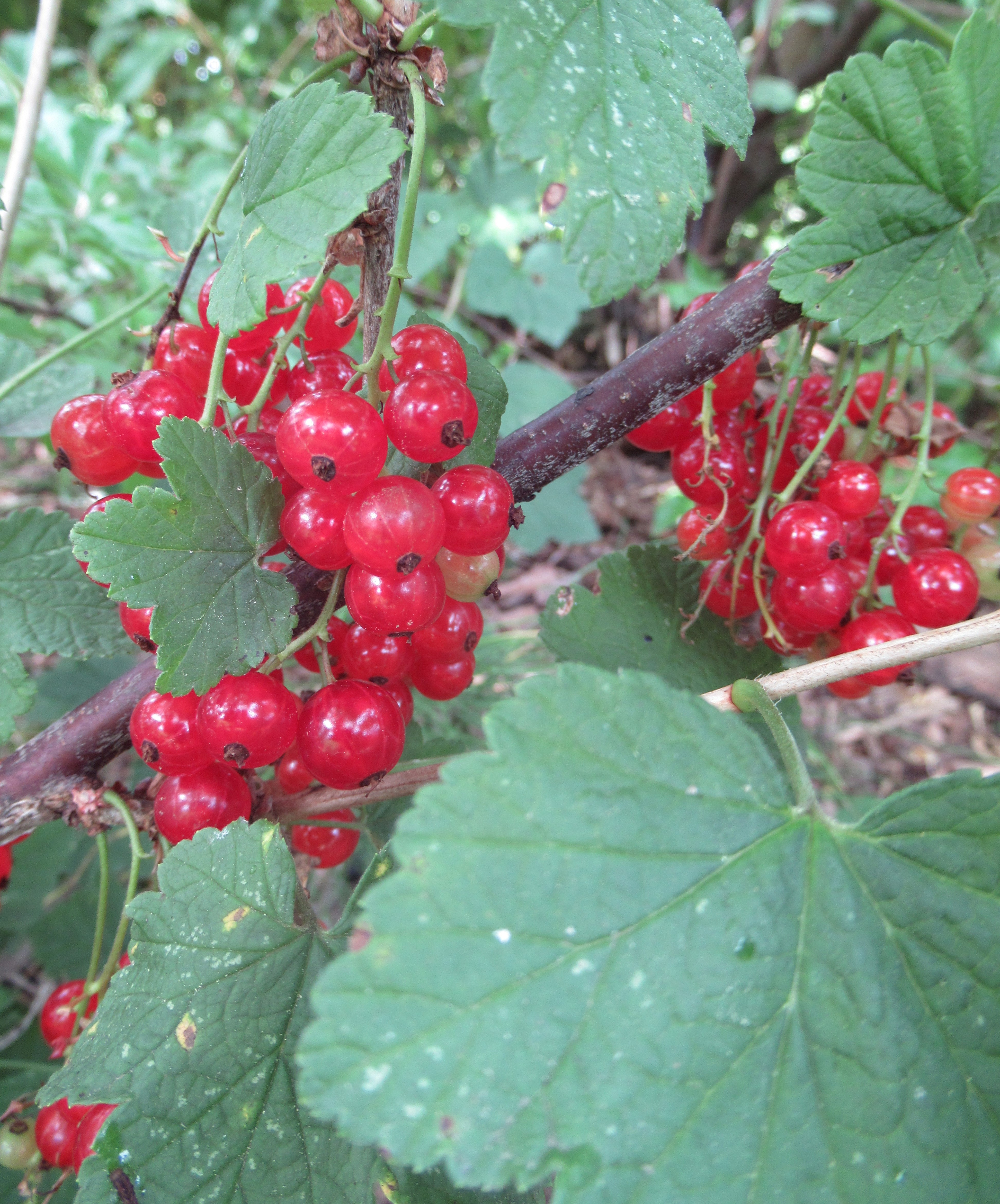
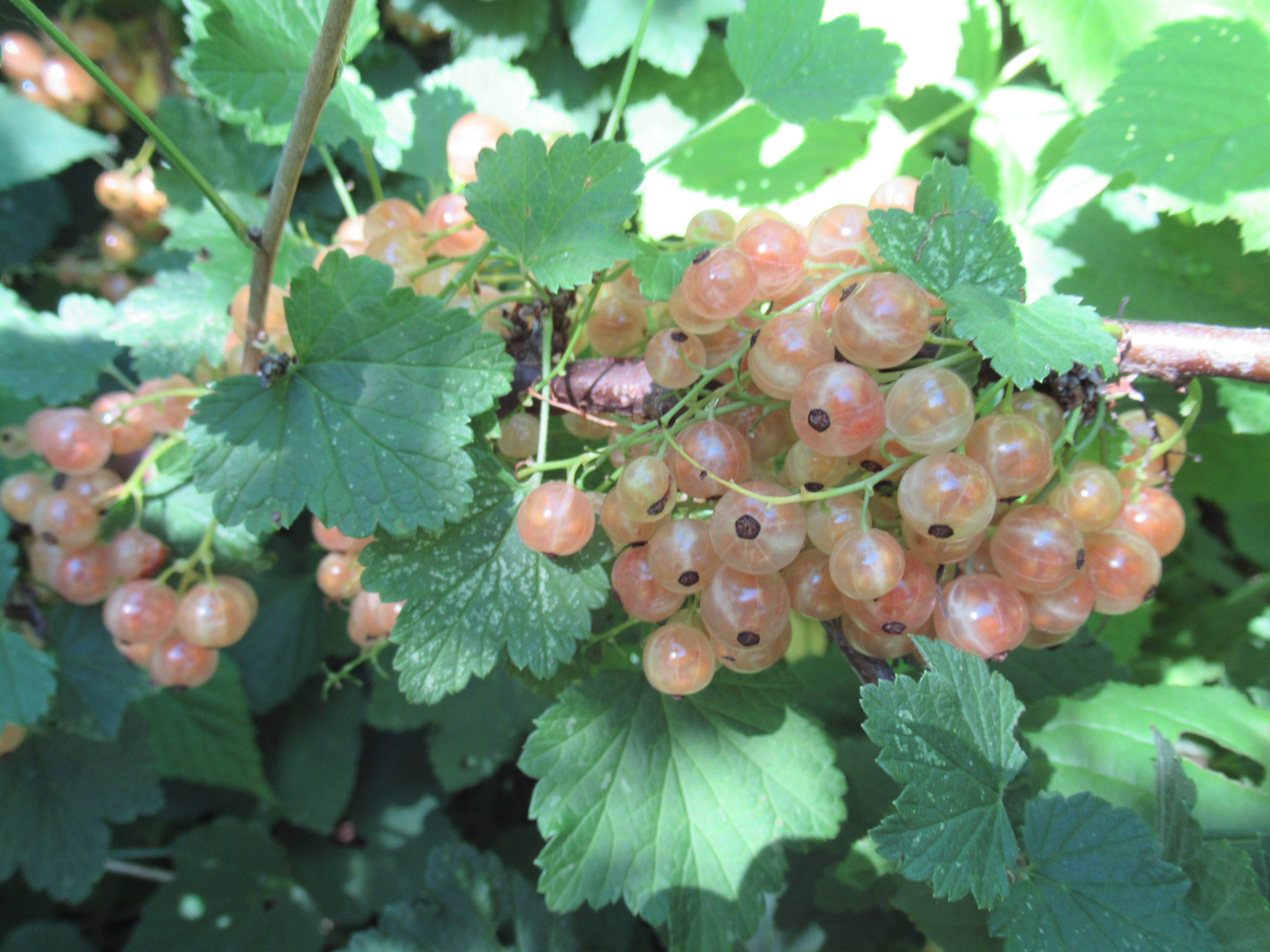
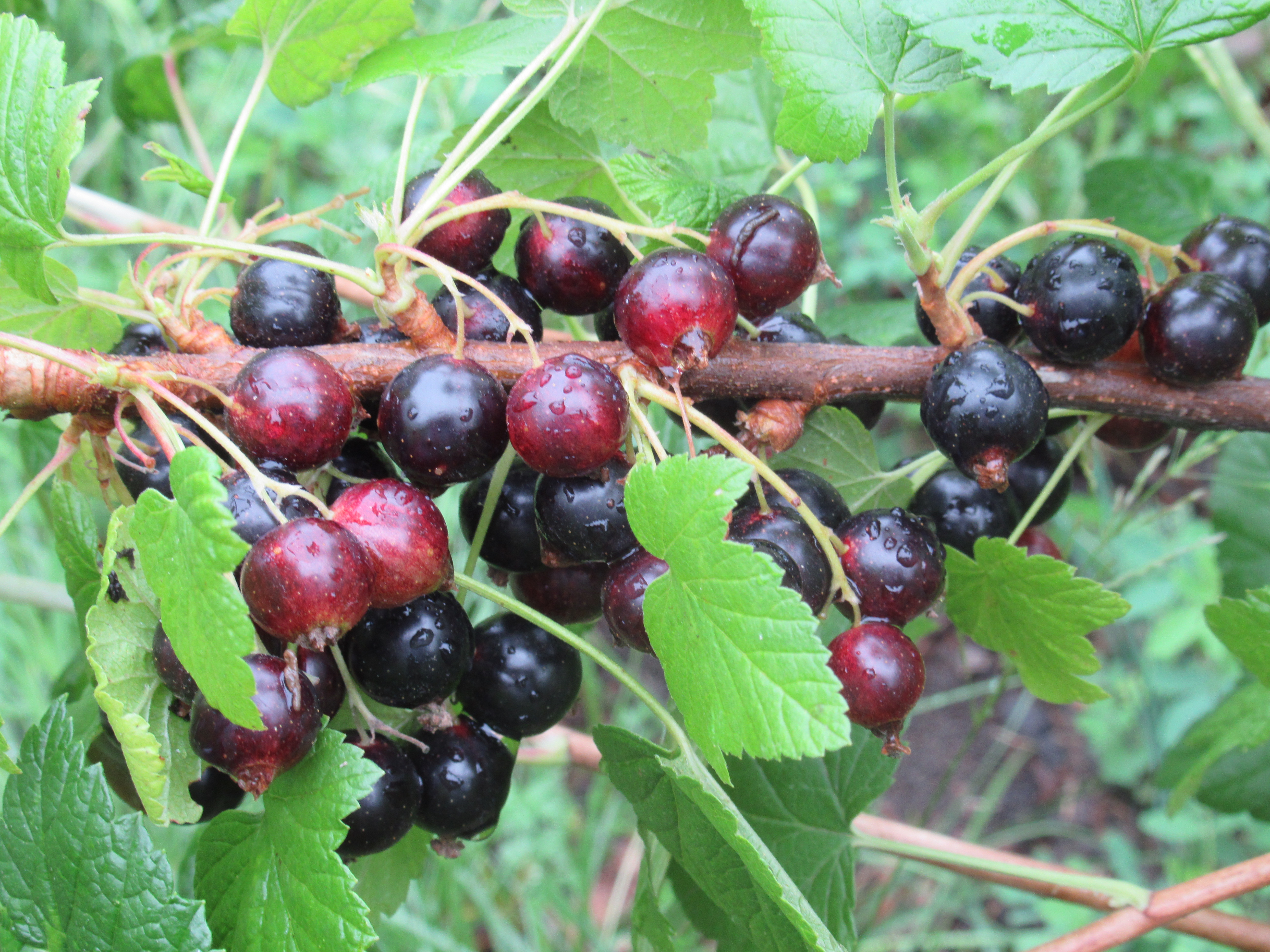
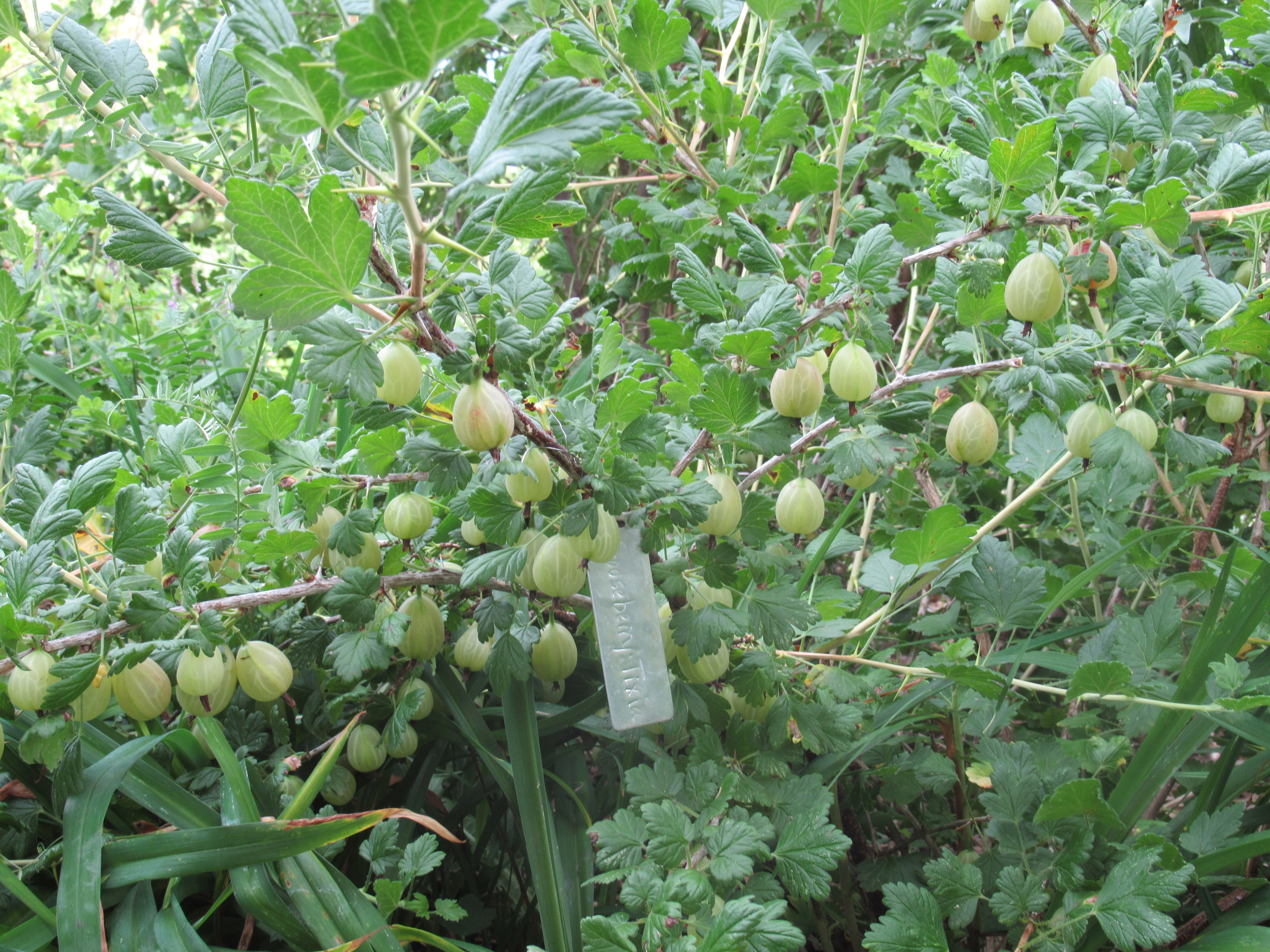
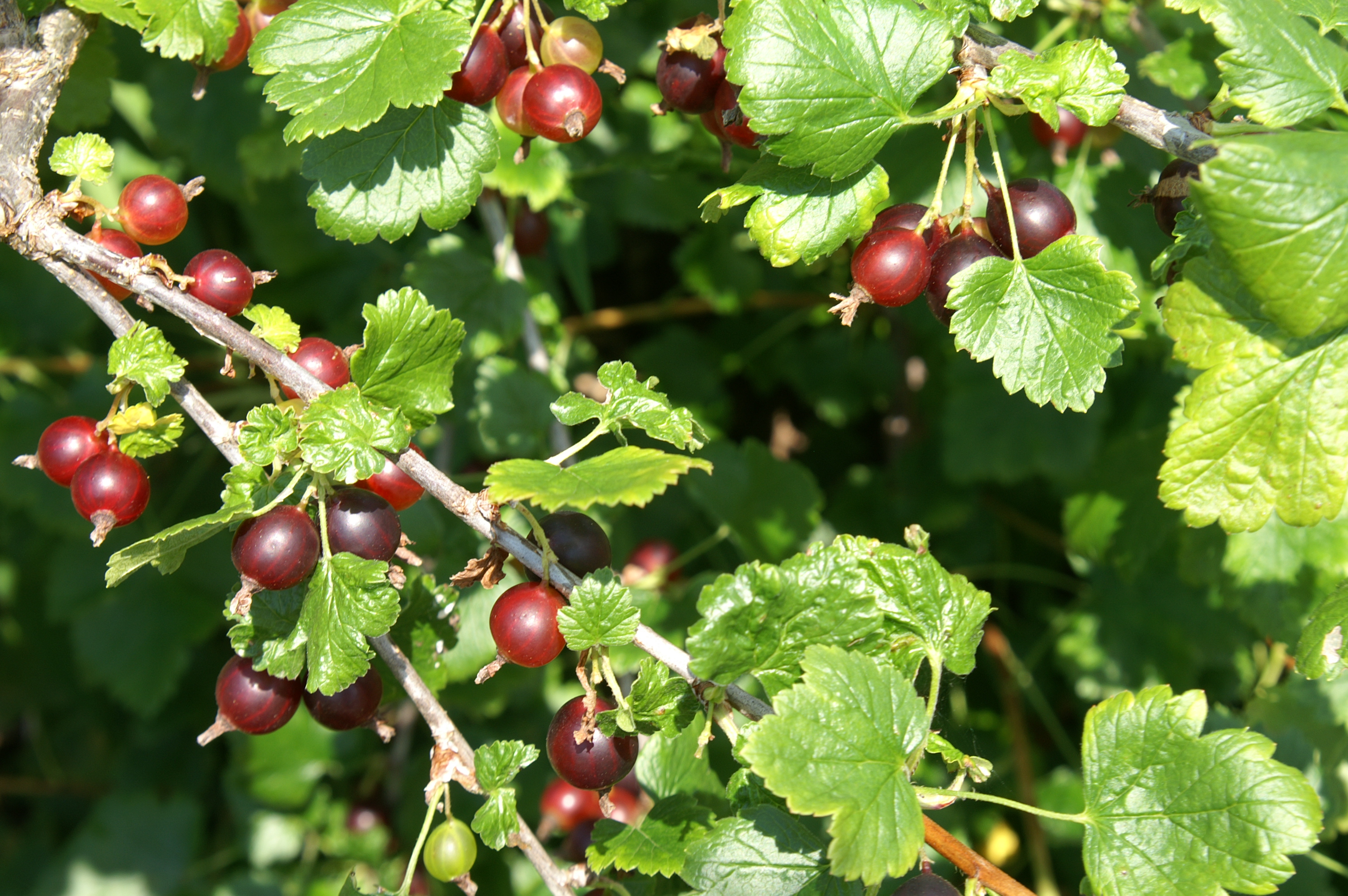
What's in Bloom in the Edible Forest
May 17, 2022
They say April showers bring May flowers, and that is certainly true for the Enchanted Edible Forest. May is the time for many groundcover, shrub and tree fruits to begin blooming. Here is a sample of what’s in bloom this year during the second week of May.
Shrubs
Clove currants, a native bush with black currants that ripen in August delicious fresh and processed into jam.
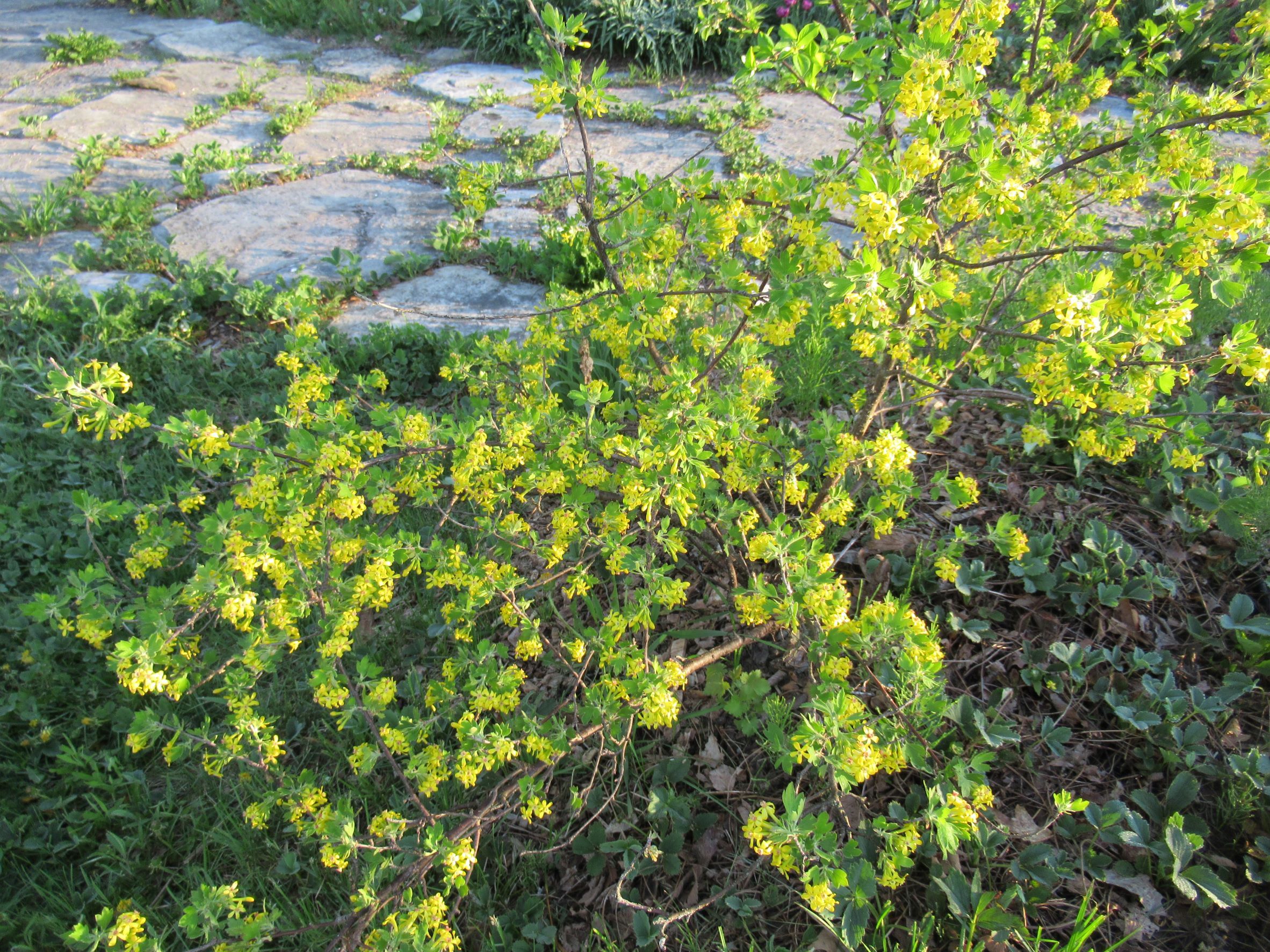
Juneberries: Another native berry bush with fruit very much like blueberries ripening in June and loved by birds.
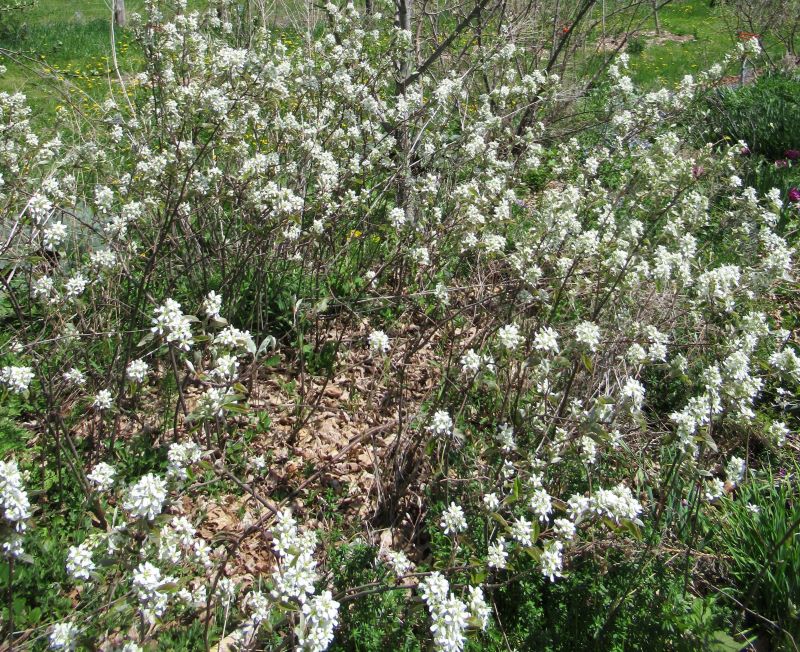
Nanking cherry: Extremely hardy cherry shrub from China with bright red tart cherry fruits ripening in mid-summer.
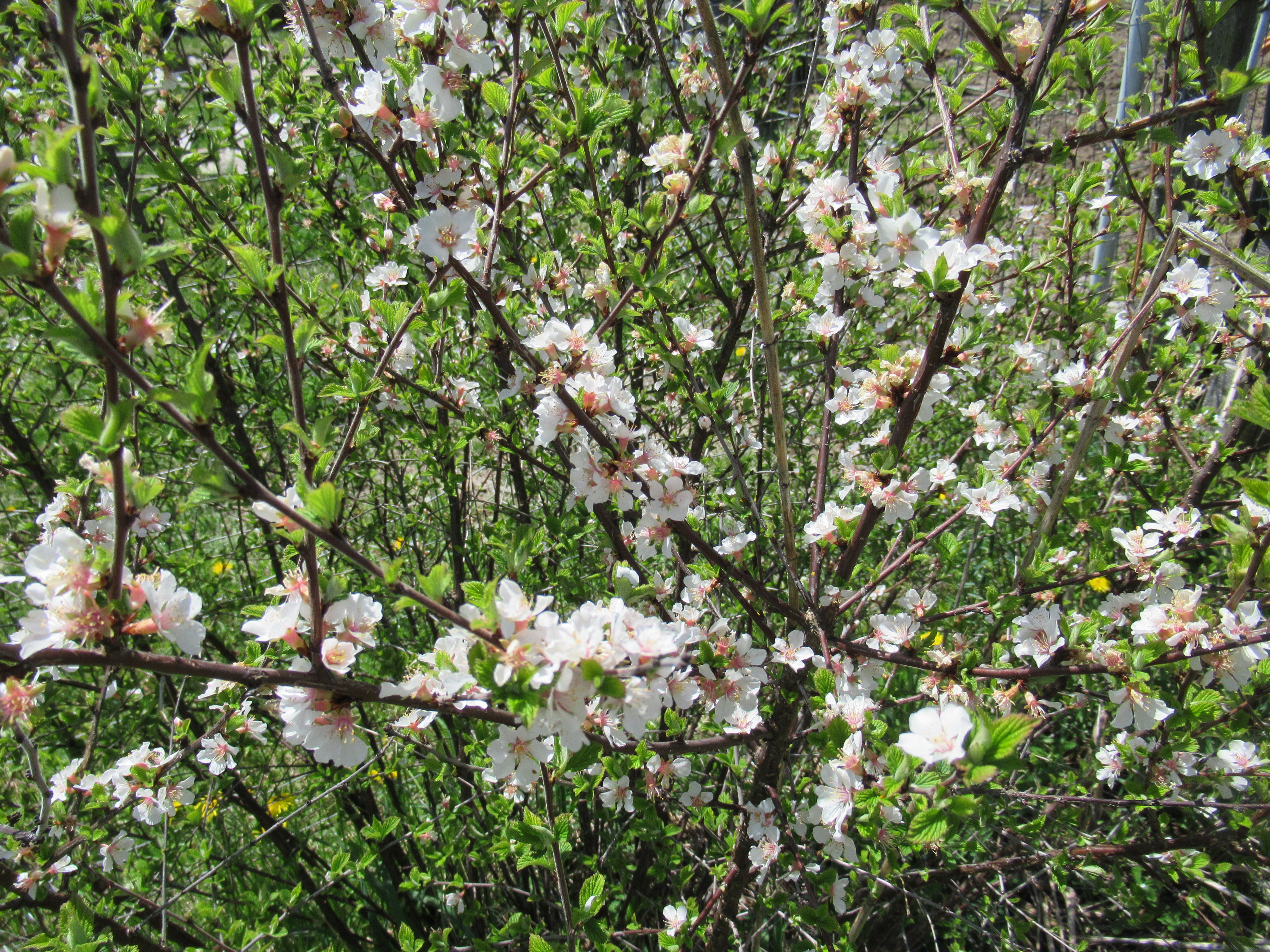
Red currant: a European import with yellow filigree blooms and bright red berries ripening in July, lovely as garnish, in salads, yogurt, and jam.
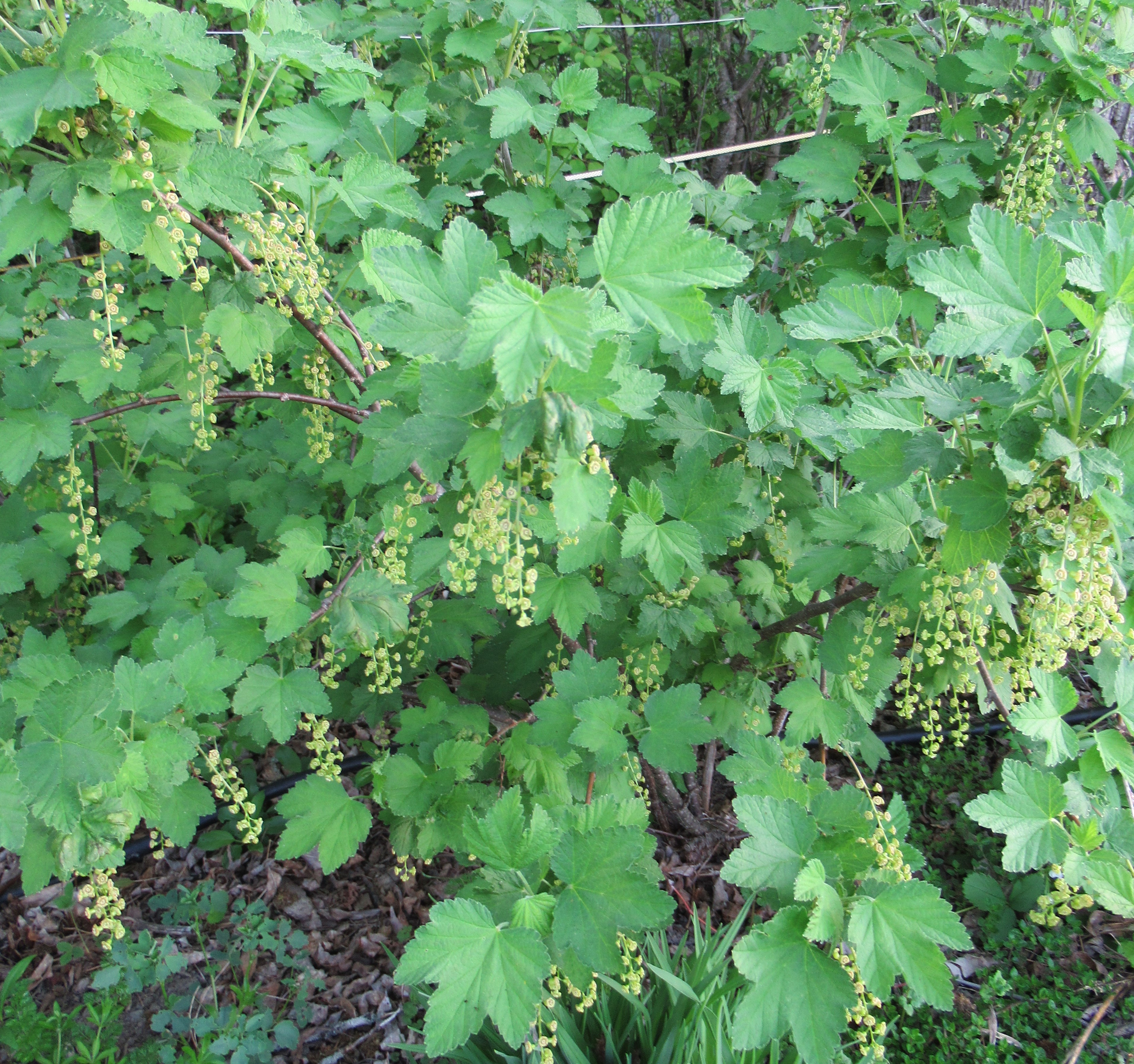
Trees
Asian Pear trees are borderline hardy for my cold climate (USDA Hardiness Zone 4), but by placing some in favorable micro-climates like a well-drained south-facing slope, I have had some success. They ripen in August and September and have a delightful sweet, juicy crunch eaten fresh off the tree.
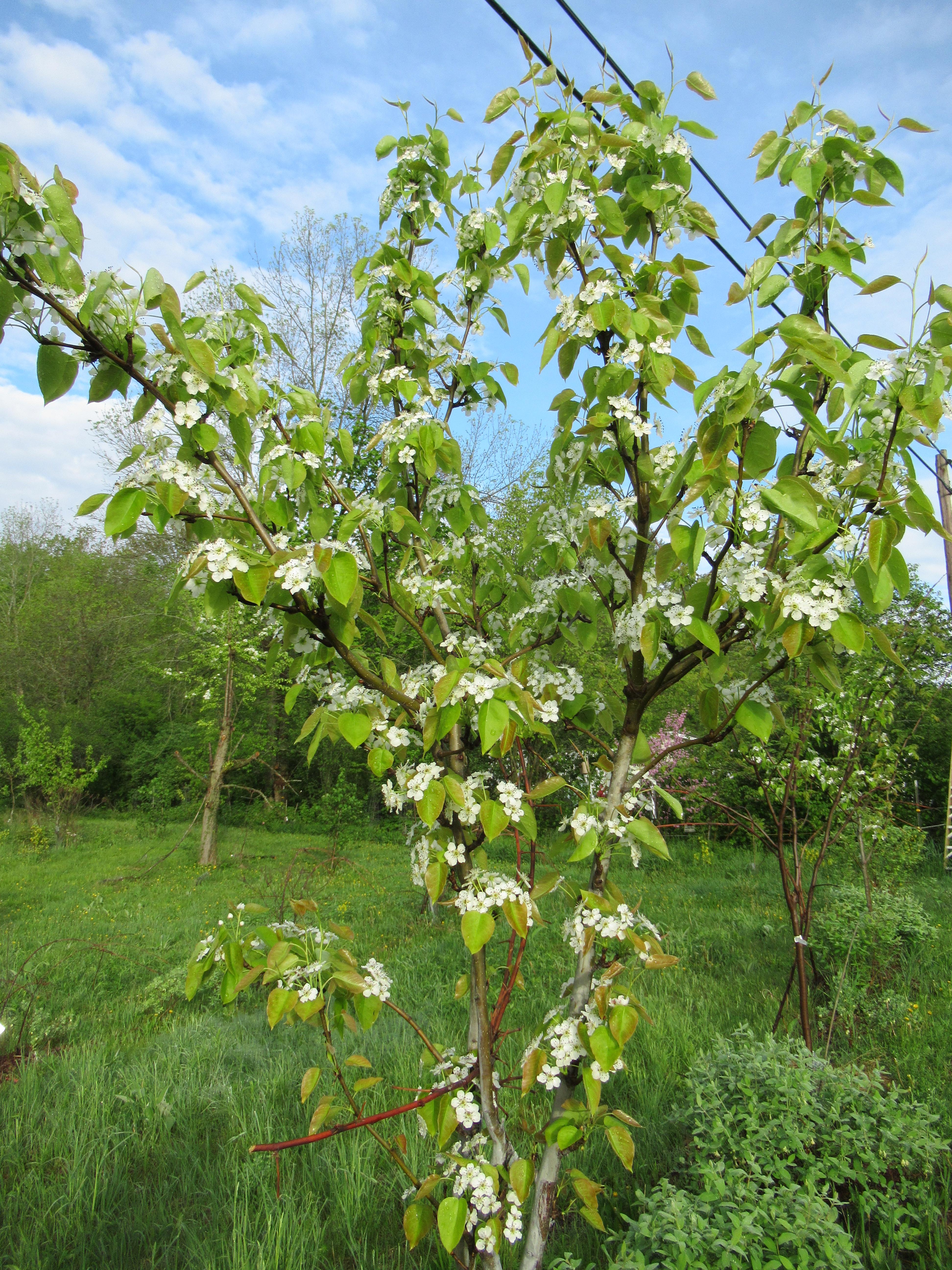
American plum: a hardy native, adaptable plum which ripens in August with sweet flesh and tart skin. Great eaten fresh or processed in preserves.
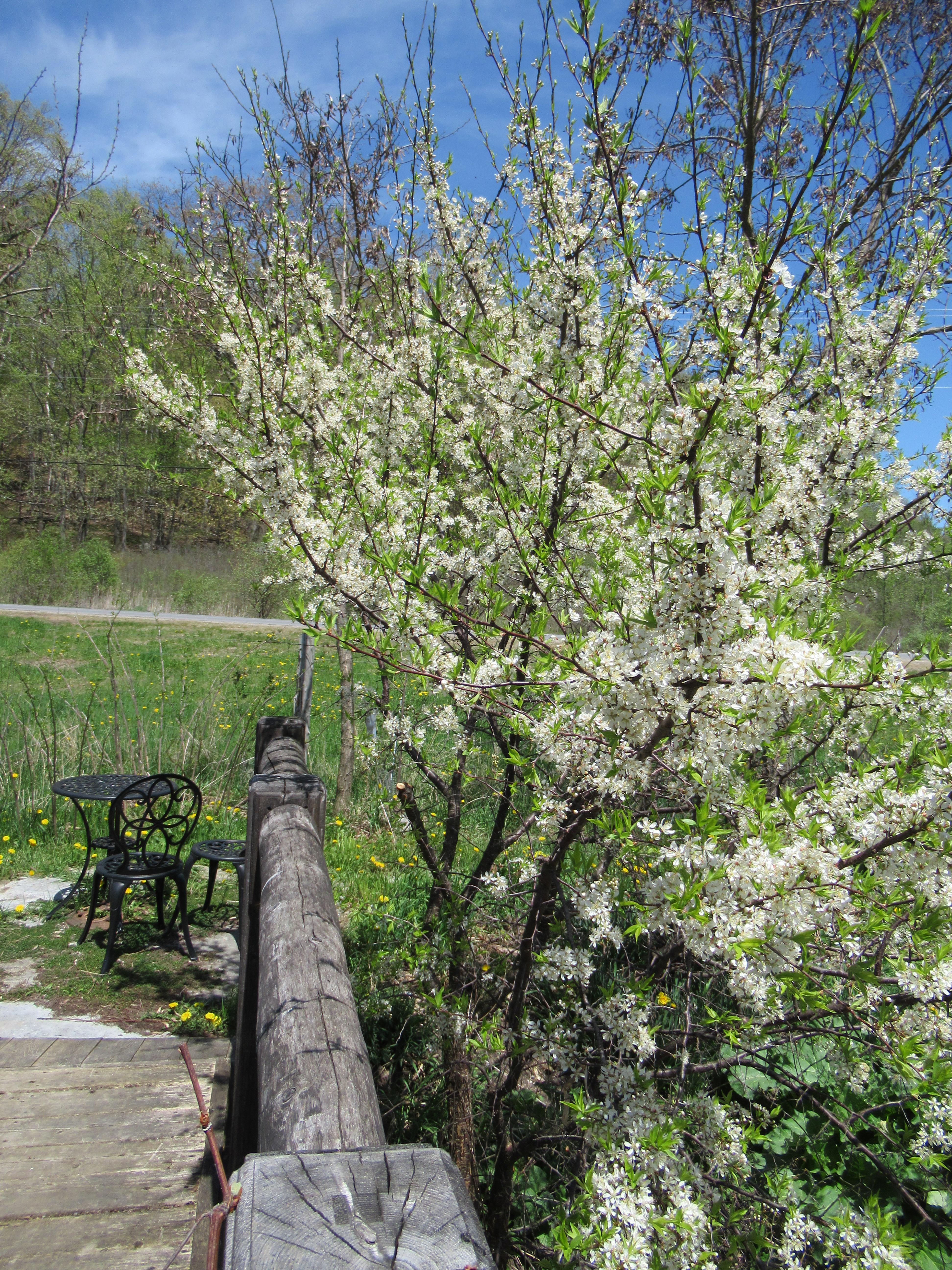
American Redbud: a lovely nitrogen-fixing tree with edible flowers and pods. Today I picked some of the flowers to add to a salad.
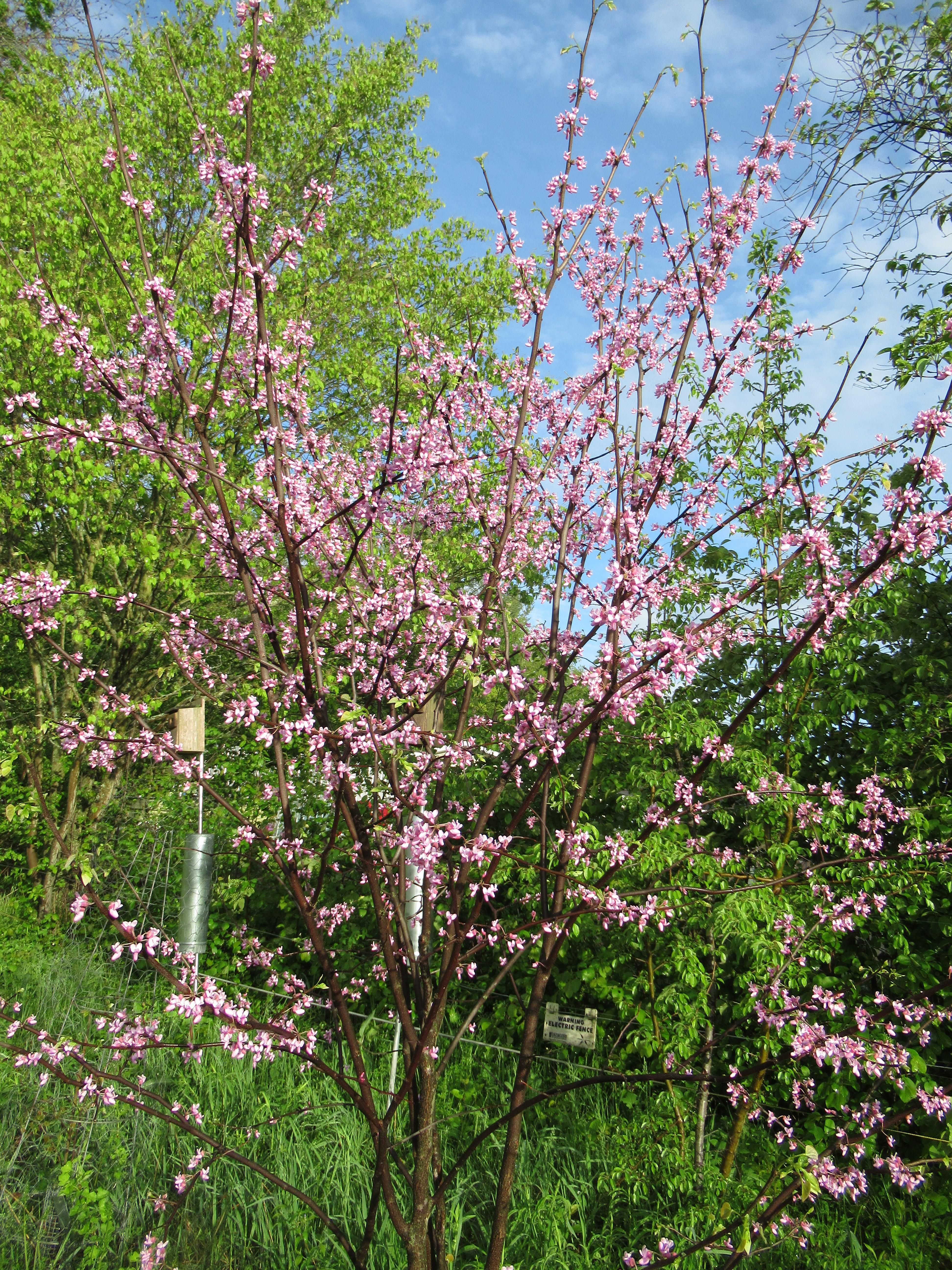
Groundcovers
Tulips are delightful spring flowers, but did you know you can eat the pedals? I enjoy adding them to salads for their flavor and color!
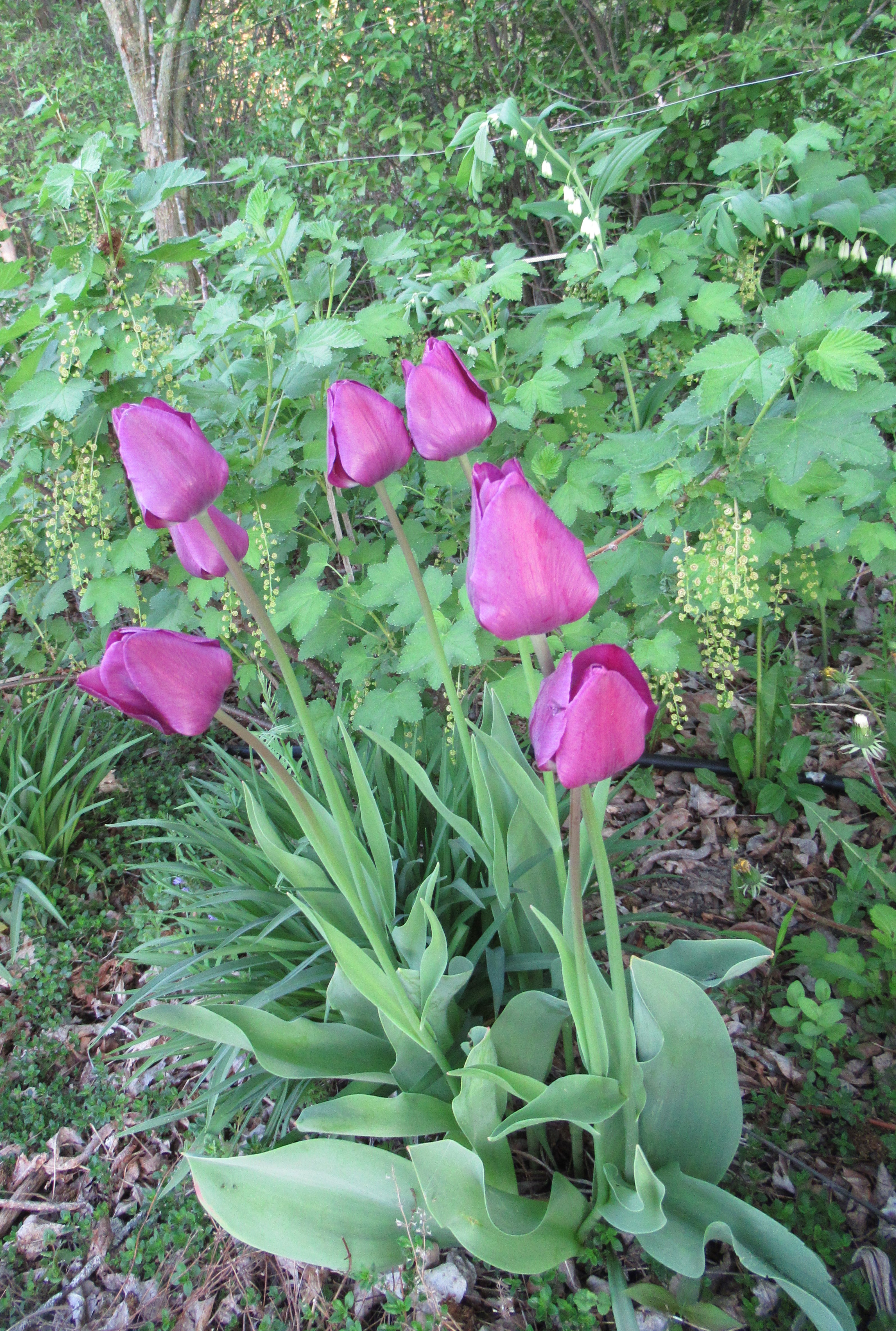
Violets and Dandelions: Violets are self-seeding annuals with edible leaves and flowers. All parts of dandelions are edible, and their tender spring leaves are an excellent addition to salads where they add flavor and nutritional value.
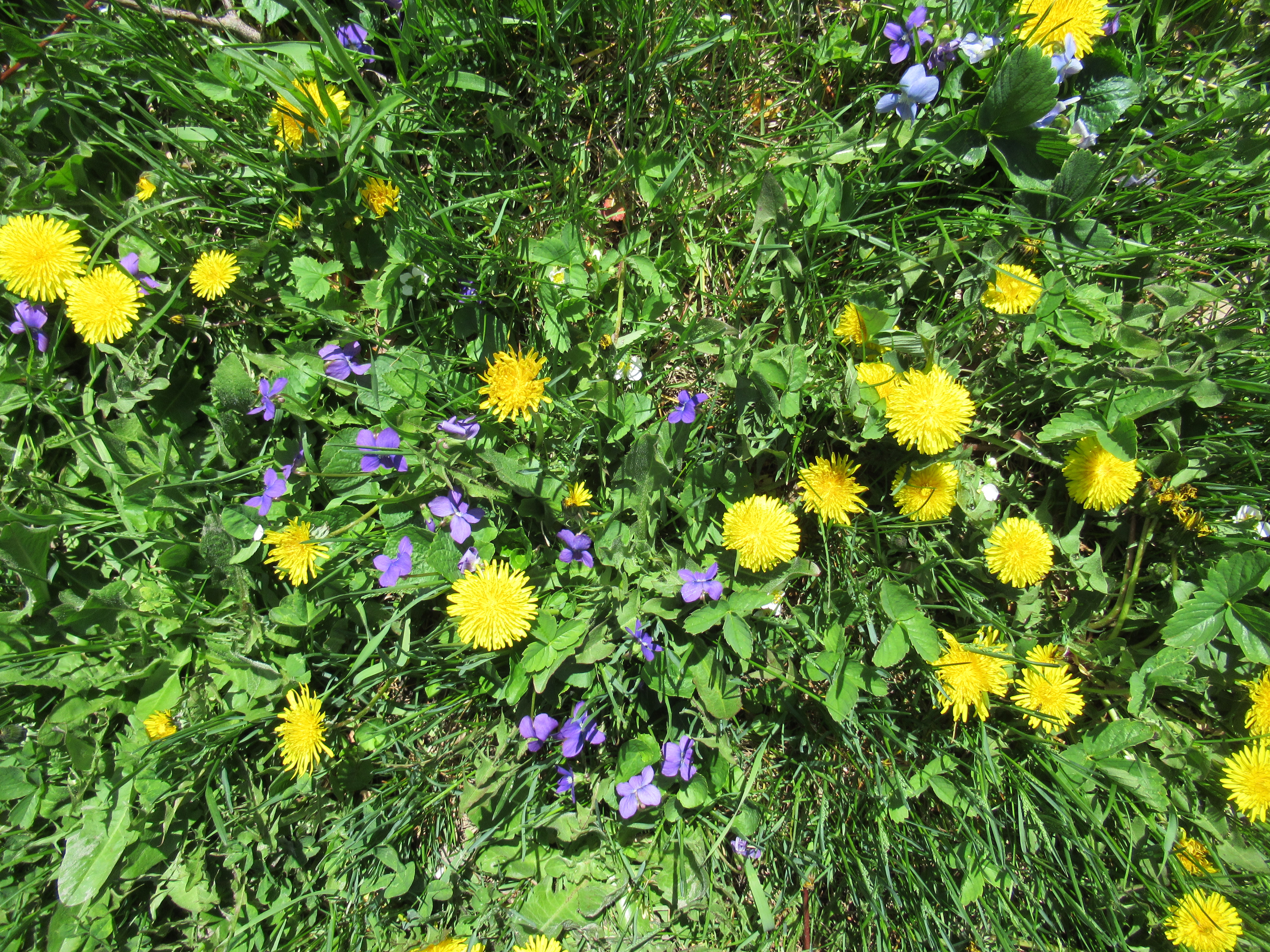
Sweet cicely is a delightful mildly anise-flavored herb which loves moist shade with flowers that are attractive to beneficial insects. It’s fern-like leaves make a lovely garnish, and add flavor to raw and cooked dishes.
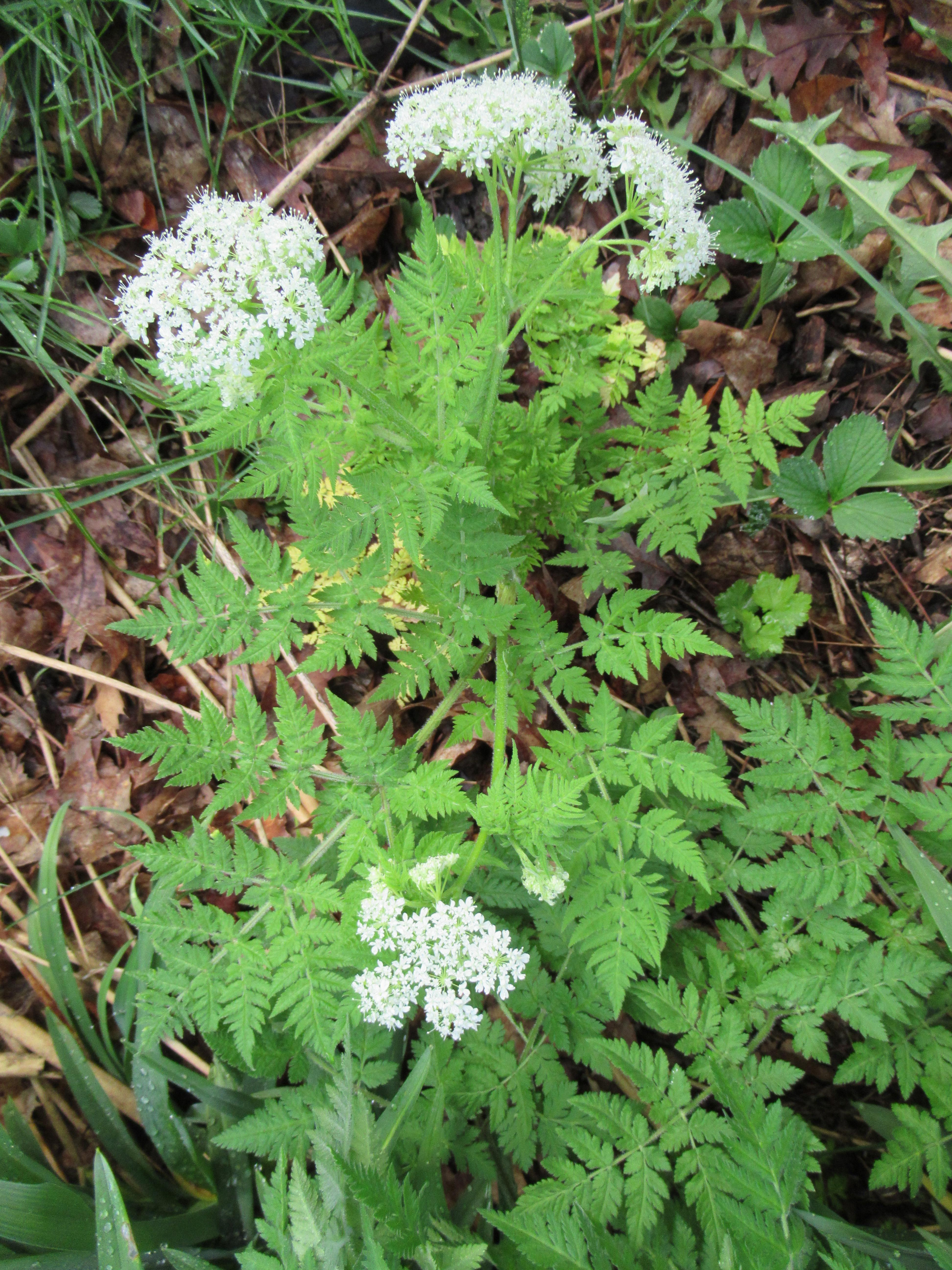
Ground-cover raspberry has raspberry-like leaves and fruits, but grows low to the ground with no thorns. In a suitable habitat, it forms a dense mat with delicate pink flowers and raspberry-like fruits which ripen in August.
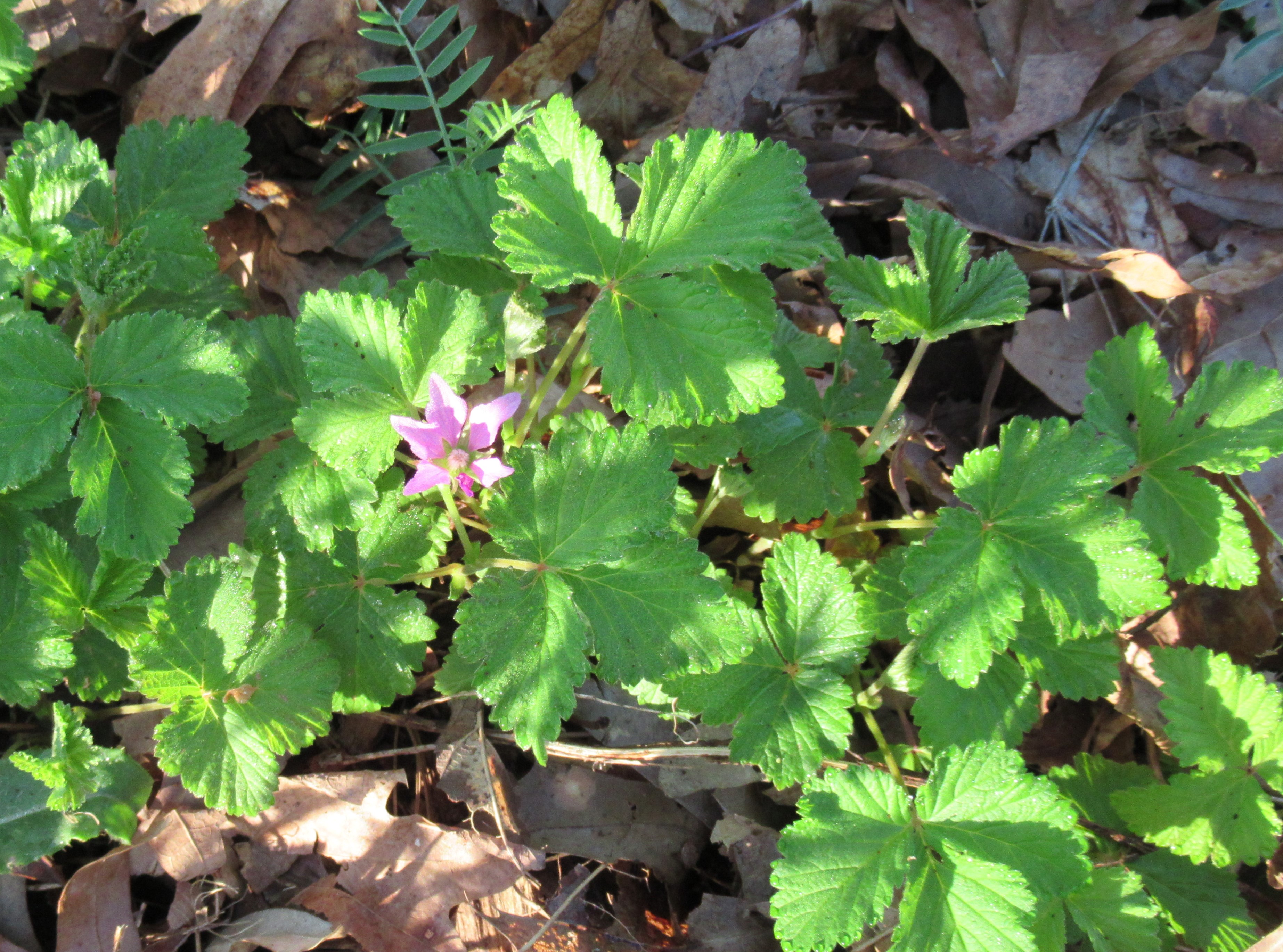
These are just a few of the edible flowering plants in the Enchanted Edible Forest. Read about them all in my book, The Home-Scale Forest Garden: How to Plan, Plant and Tend a Resilient Edible Landscape and book a tour of the garden to see and sample them in person.
Publishing my book, The Home-Scale Forest Garden
May 13, 2022
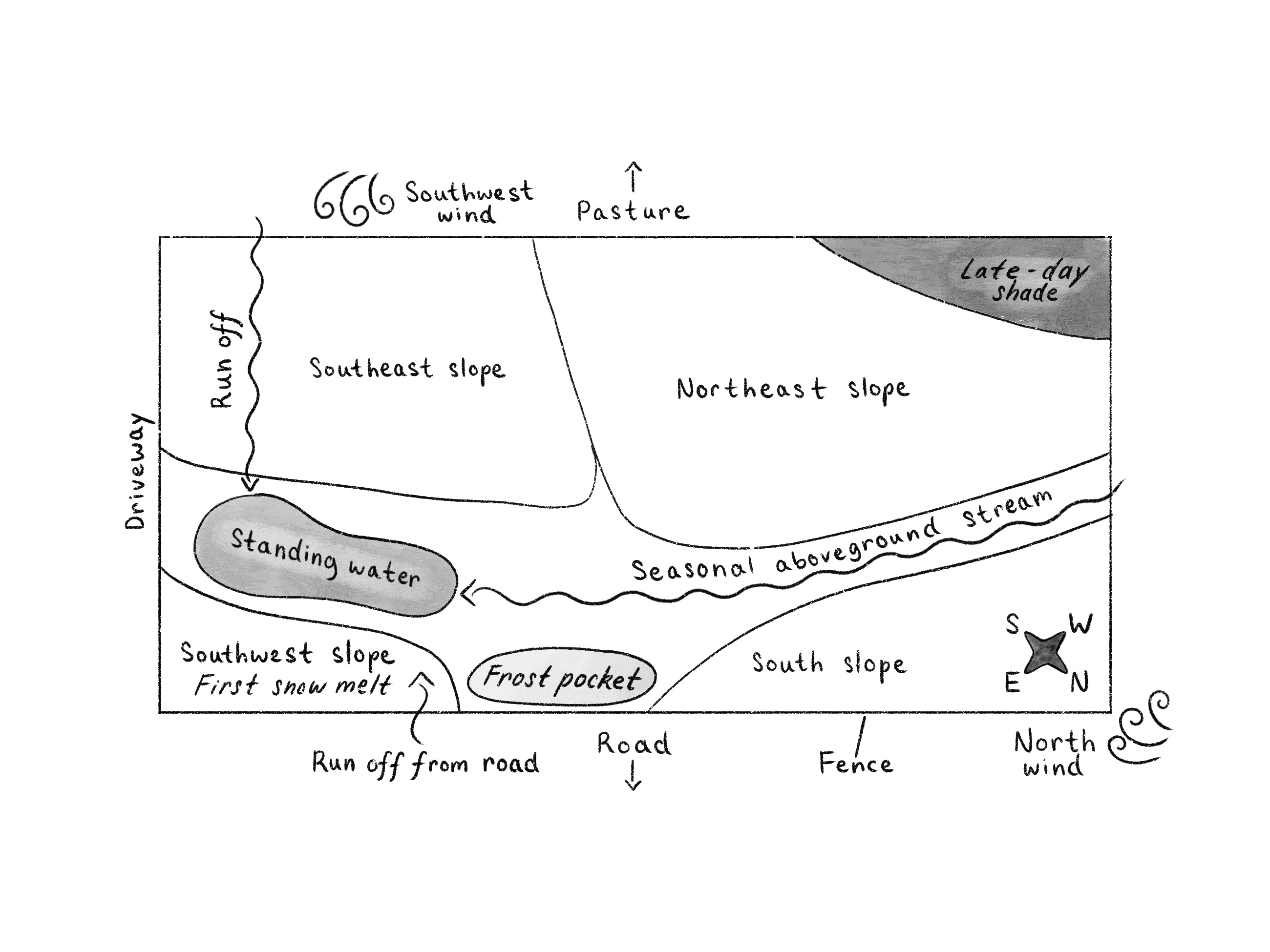
The official publication date for my book, The Home-Scale forest Garden: How to Plan, Plant and Tend a Resilient Edible Landscape, is May 20. I wanted to create a work that is packed with information based on my 10 years’ experience creating The Enchanted Edible Forest, to inspire you to create your own edible landscape.
Below: The native, adaptable, and delicious honeyberry ripens in June.
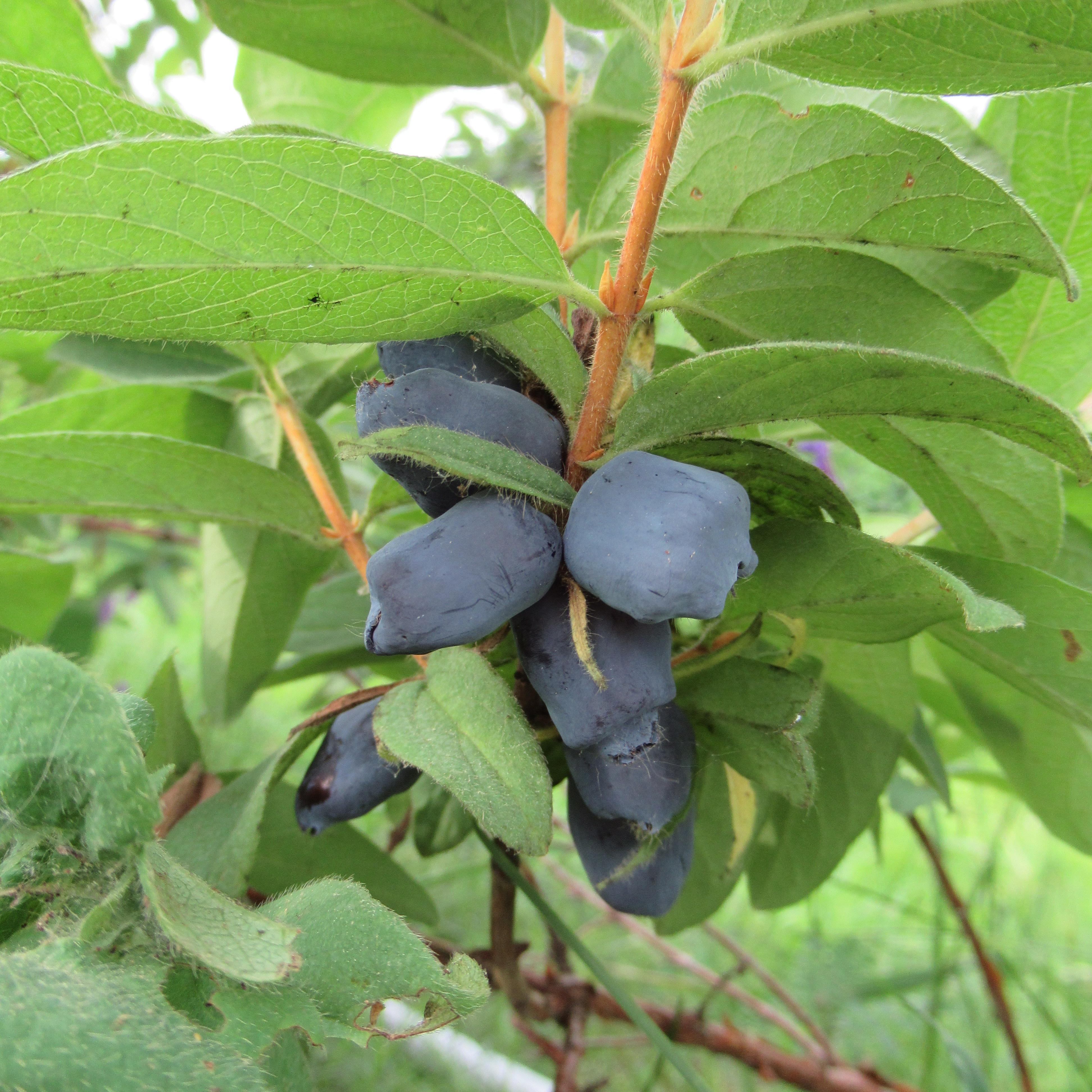
In it you will learn everything you need to know about how to embark on your own edible forest adventure: How to map and prepare your plot for planting; how to use all your vertical space, how to attract beneficial animals and insects to help you control pests; how to match your plants with habitats that will help them flourish and how to provide your food producing plants with all the nutrients they need though other plants. The book includes over 100 food producing herbs, perennial vegetables, berry bushes, fruit and nut trees from which to choose. You needn’t have a large plot: a foundation planting, a small bed or an edible hedge can each provide beauty and an edible feast for your table.
Below: Attracting birds to eat bugs (left) | Lanscape with blooming black locust (right)
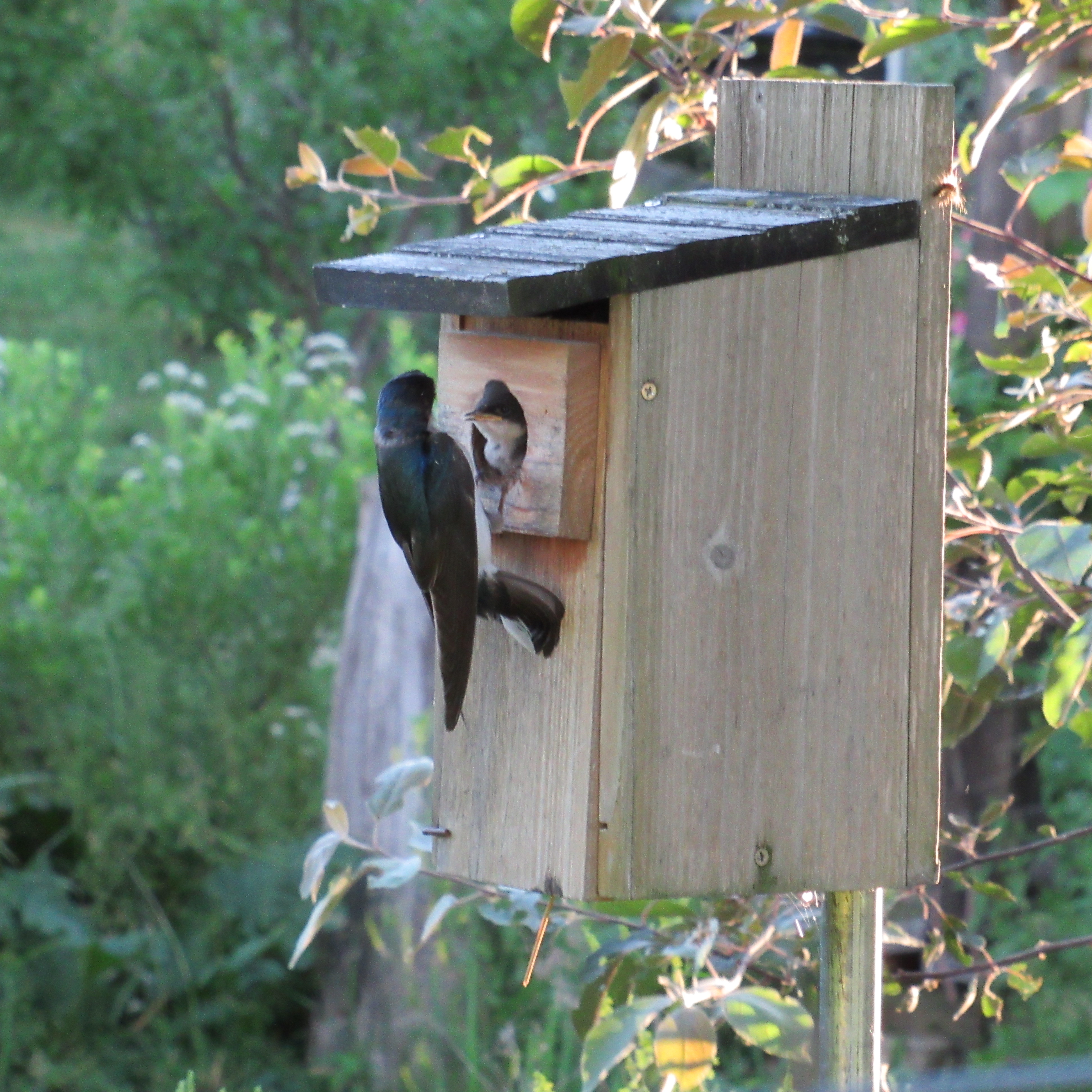
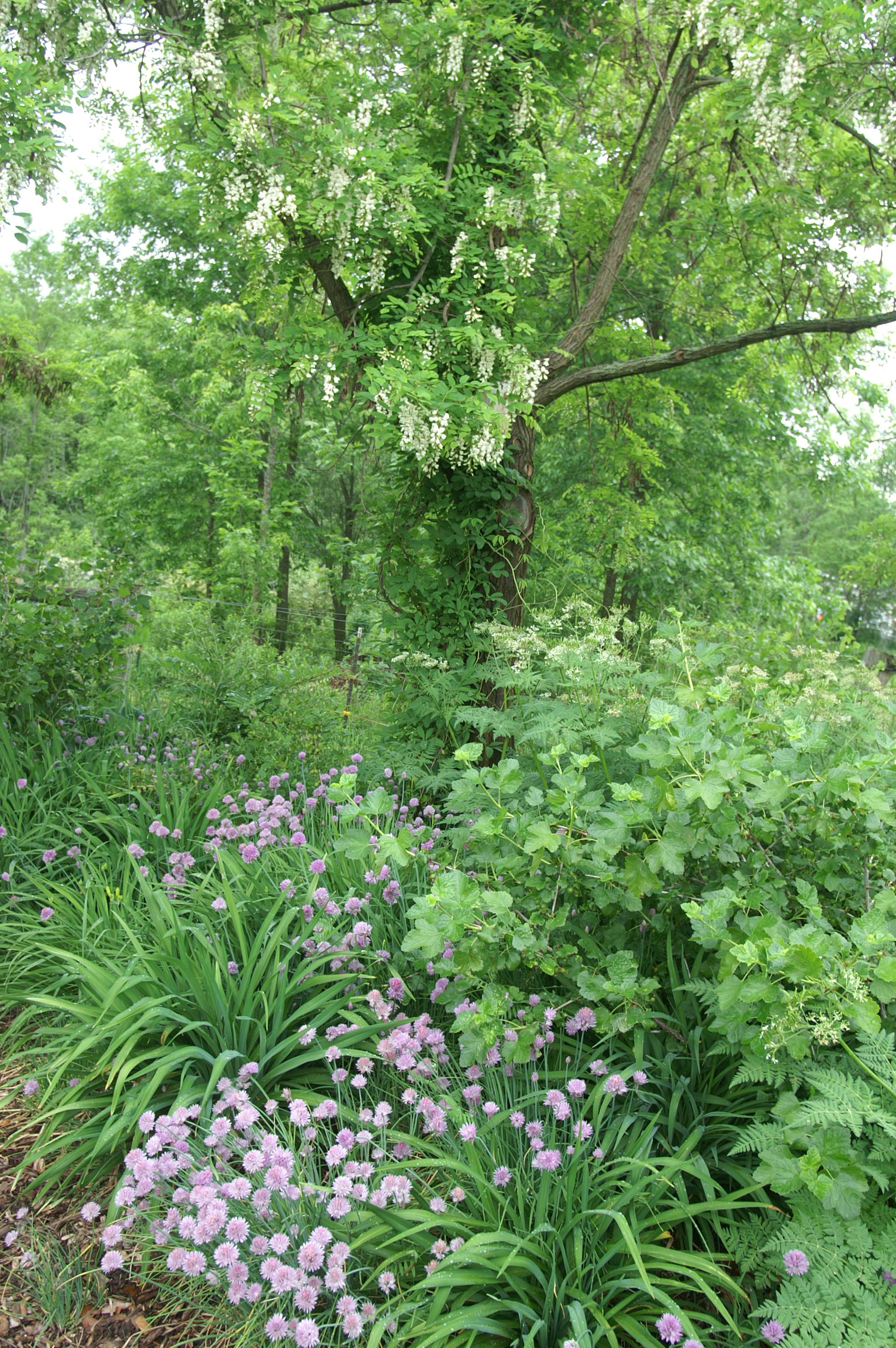
A Spring Stir-fry from the Edible Forest
April 30, 2022
Today I decided to create a spring stir-fry exclusively with items harvested from the Enchanted Edible Forest.
Last month I had harvested some Jerusalem artichokes (or sunchokes), a native perennial tuber which is high in low-glycemic sugars and adds a crunch similar to bamboo shoots.
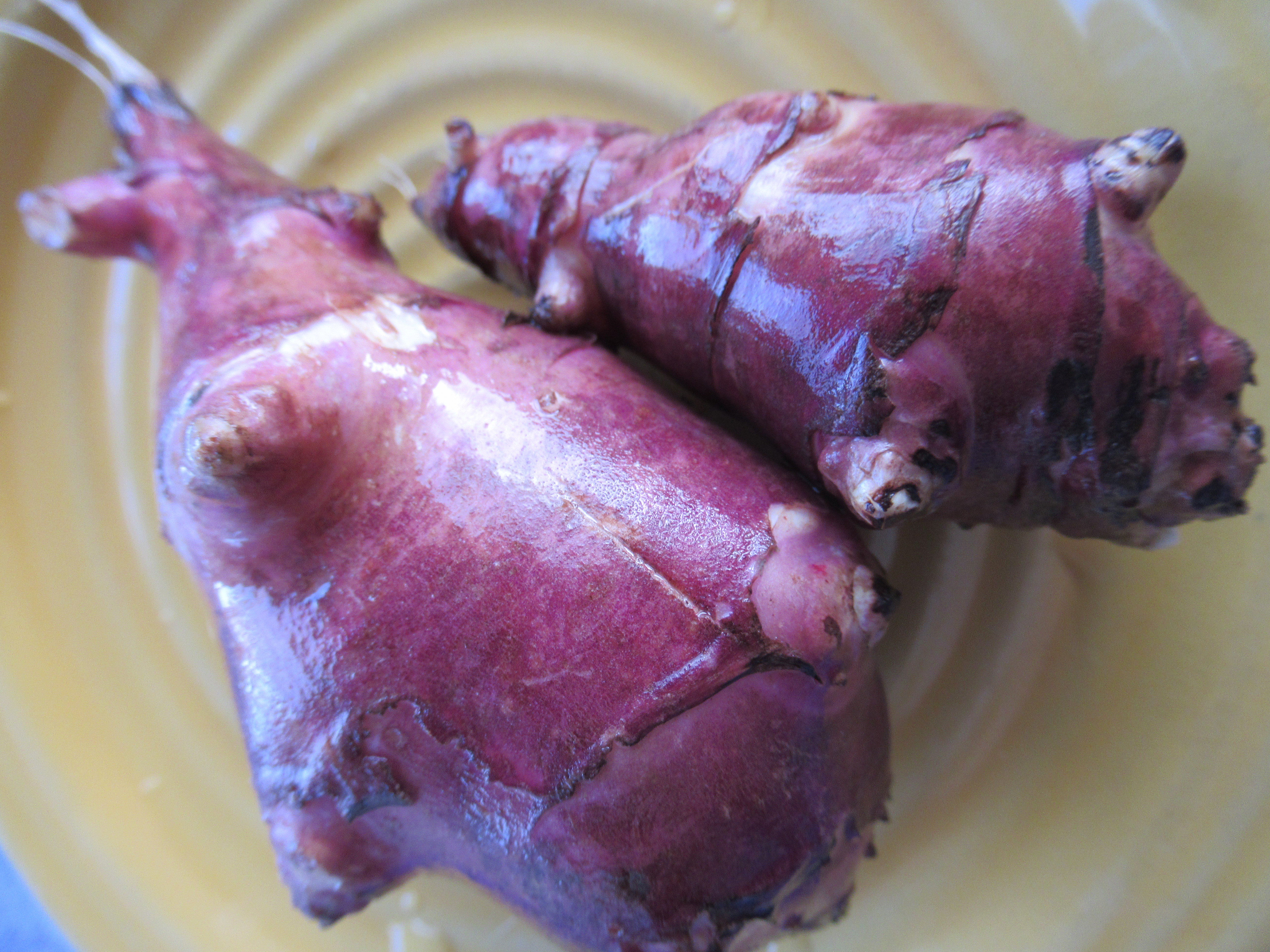
I sliced them thin along with the bottom parts of three Egyptian Walking onion cuttings, a perennial onion which appears like large scallions at this time of year.
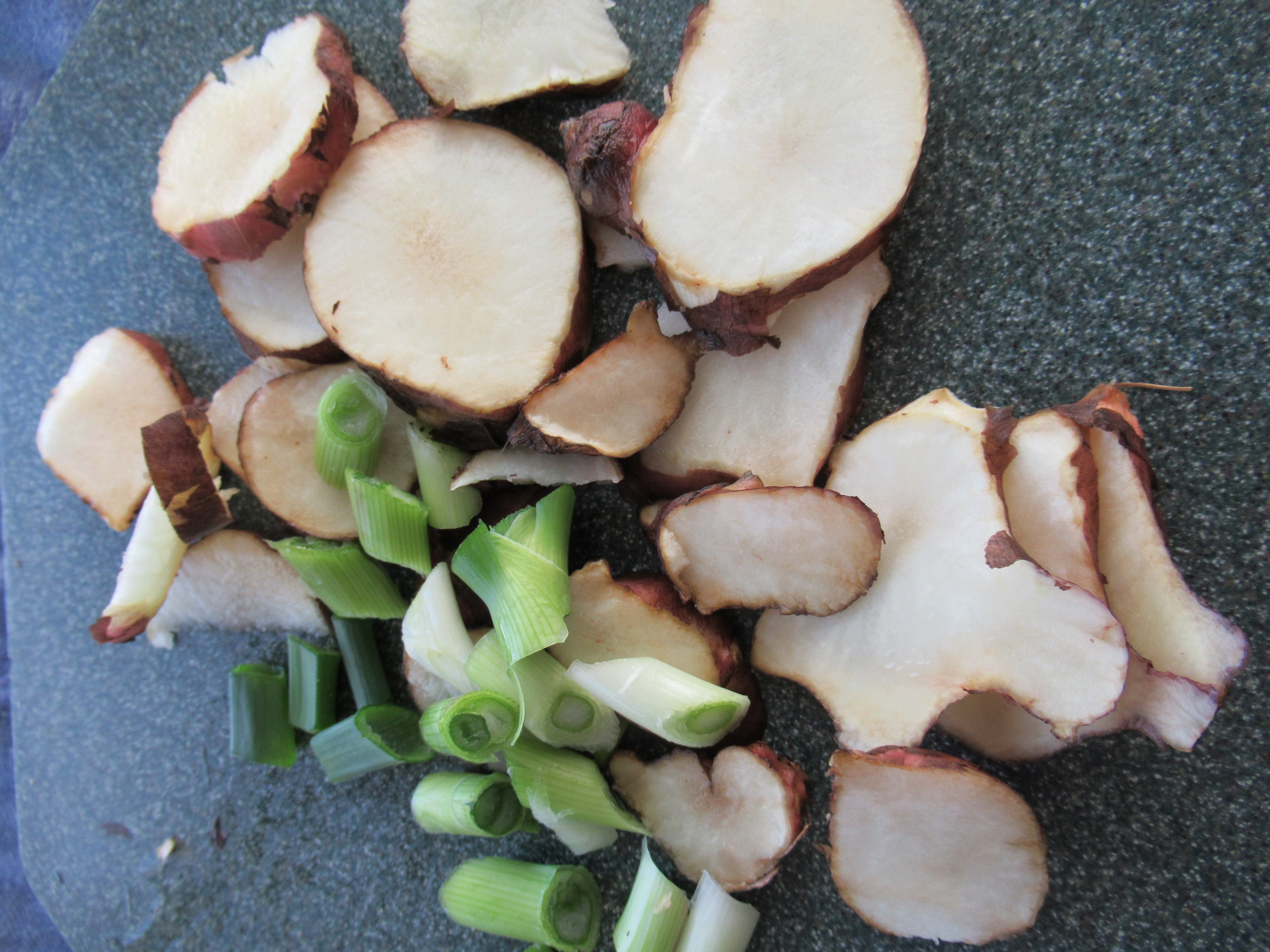
I added a bowl full of petit shitake mushrooms harvested this morning from the log totems I set out several years ago.
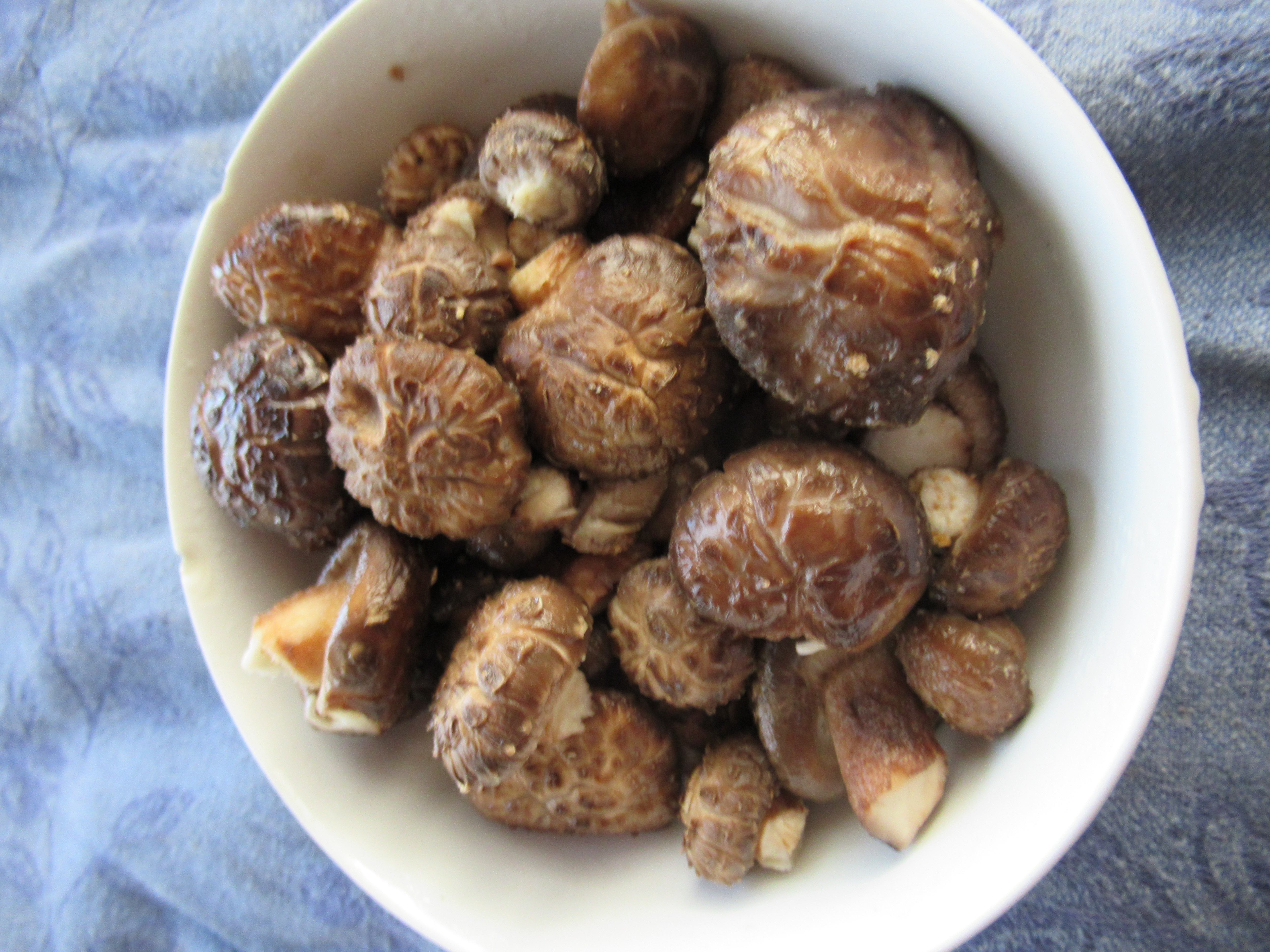
Then I added some just harvested nutritious greens: water celery, Good King Henry, and Turkish Rocket leaves. The first is a water-loving leafy perennial groundcover whose leaves taste just like those of celery; Good King Henry is a perennial leafy green which resembles spinach in shape and flavor; Turkish rocket is a perennial crucifer with this season’s young leaves tasting very much like those of broccoli.
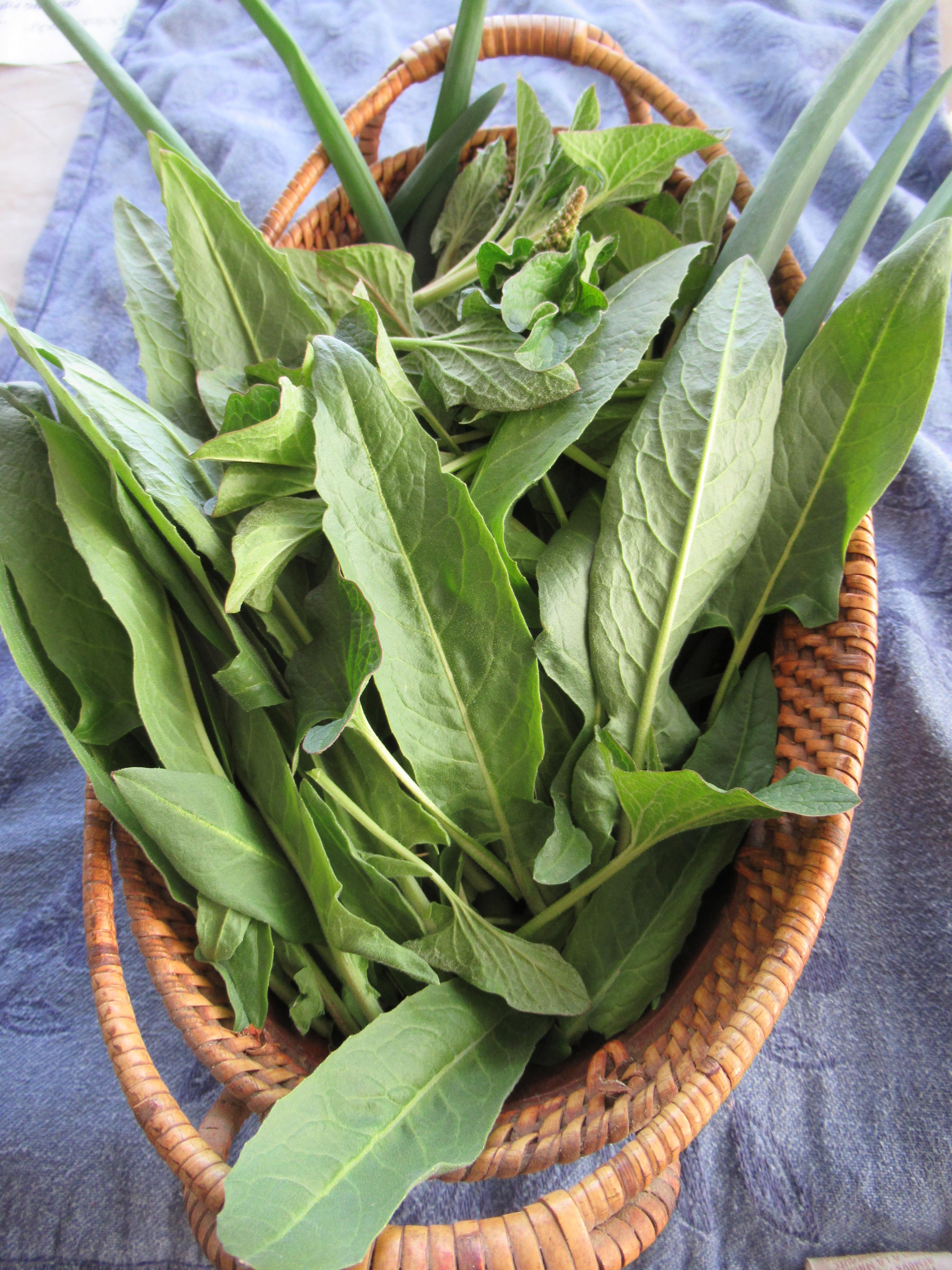
Finally, I added some garlic chives, which resemble the familiar perennial chive but have flat leaves and a garlic flavor.
I stir fried them all together in a little olive oil, added a spurt of soy sauce, and a few drops of sesame oil to finish. And, Voila! A nutritious and delicious perennial harvest to celebrate the end of April.
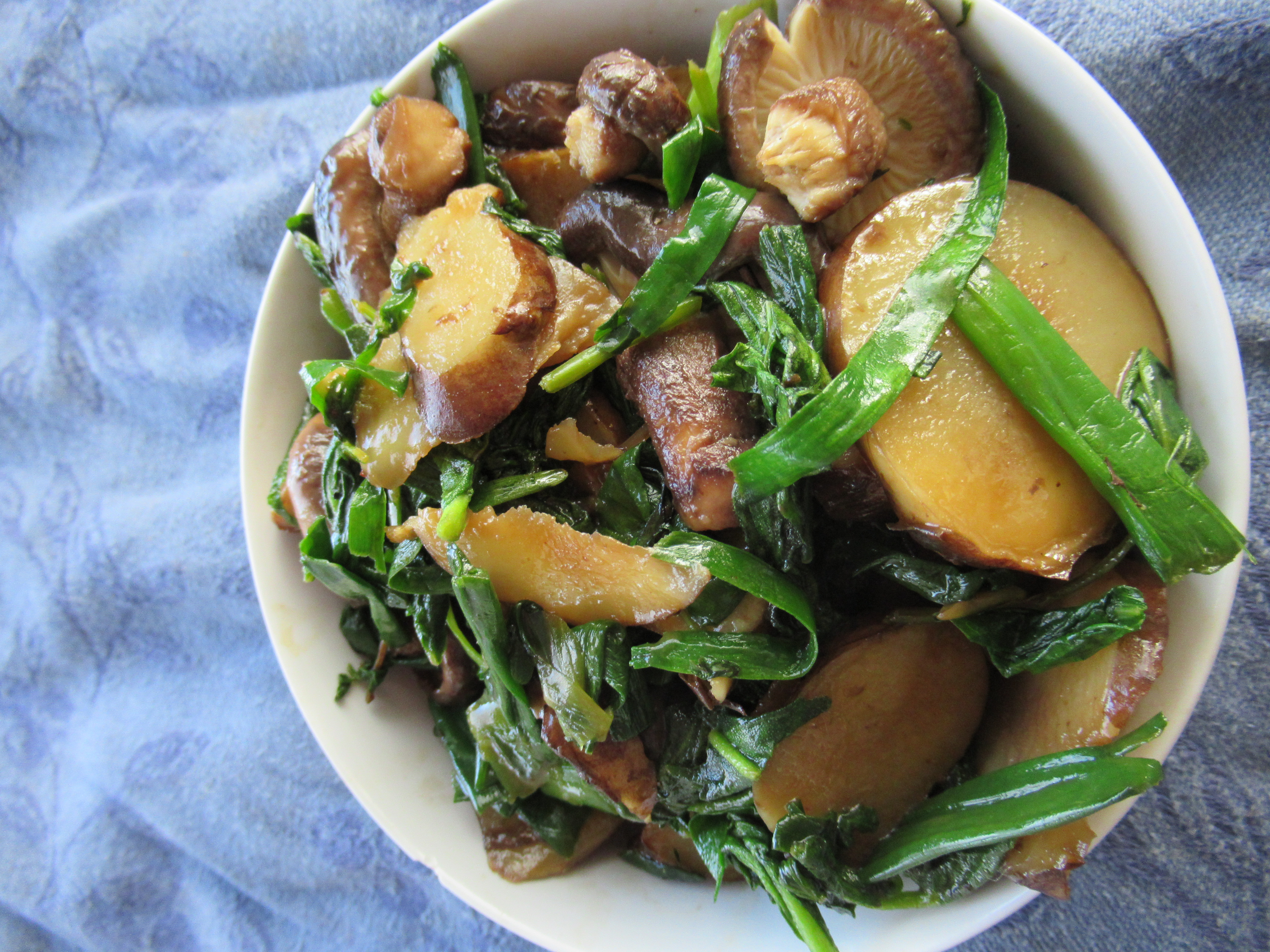
Signs of Spring: Part II
April 15, 2022
There are other changes heralding the coming of spring today: The catkins adorning the branches of the hazelnut shrubs have elongated and morphed from brown to yellowish in color (below).
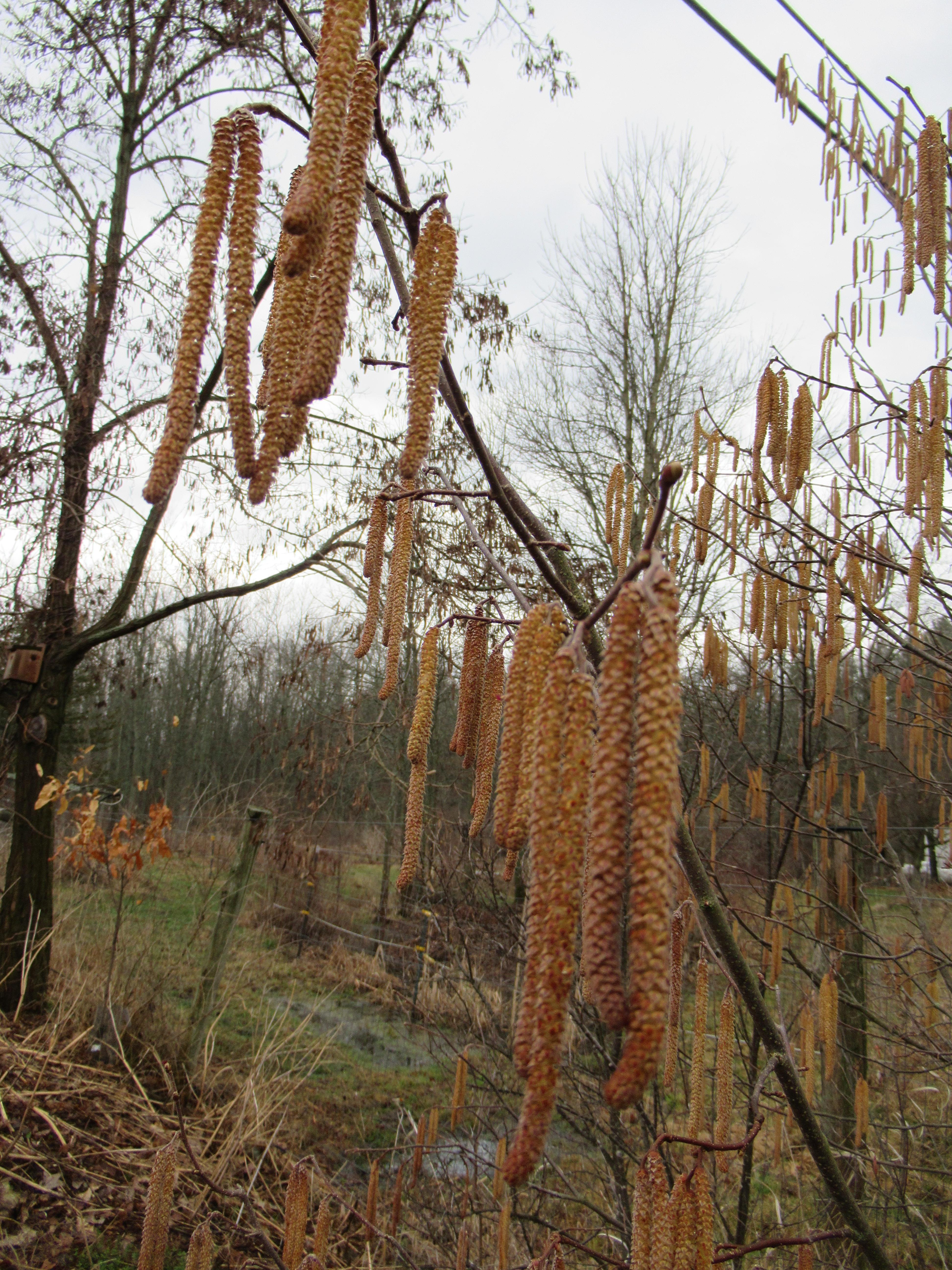
With the arrival of warmer, moist weather, oyster and shitake mushrooms are beginning to fruit on trunks and totems.
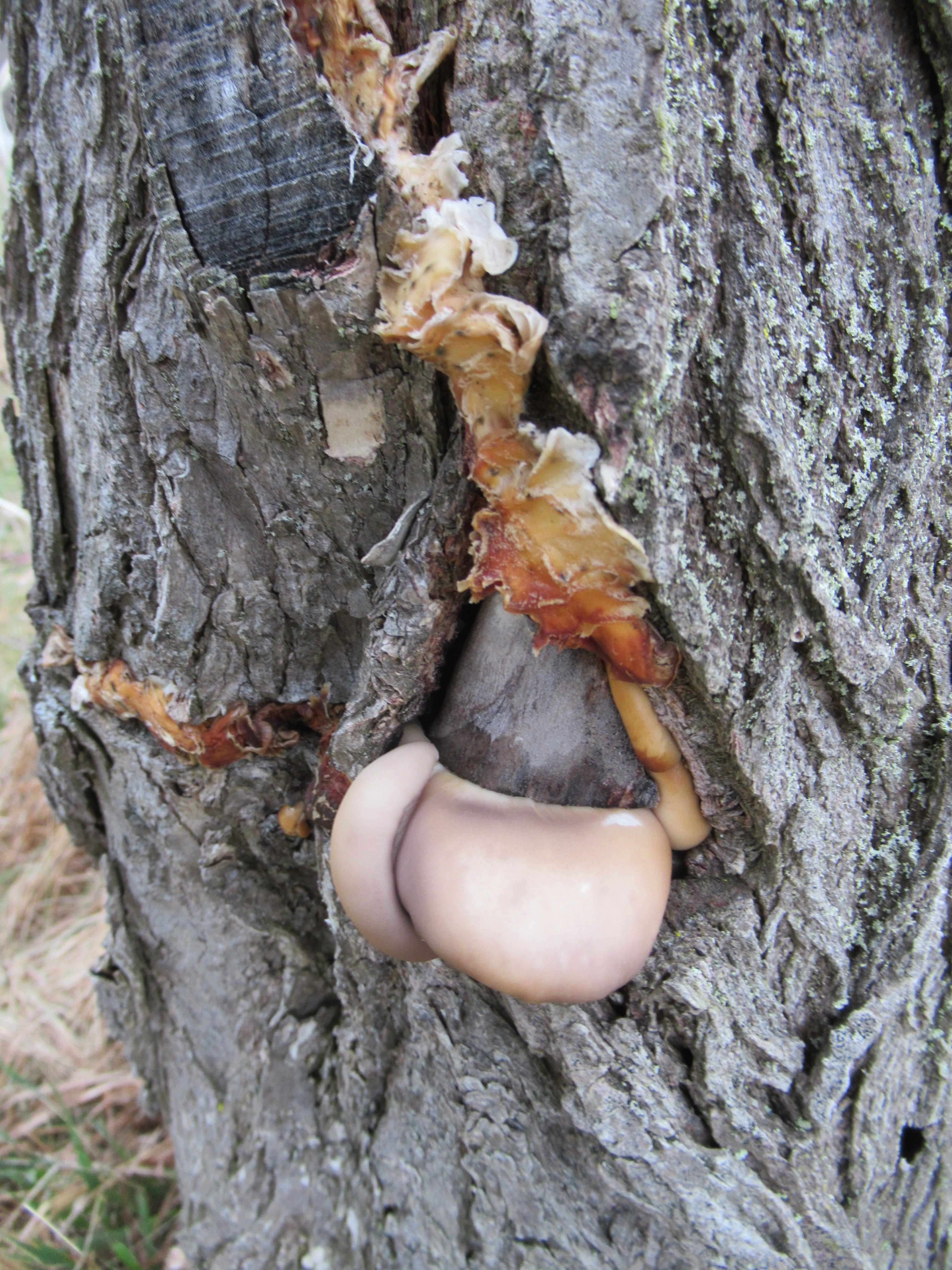
Above: oyster mushroom| Below: shitake mushroom
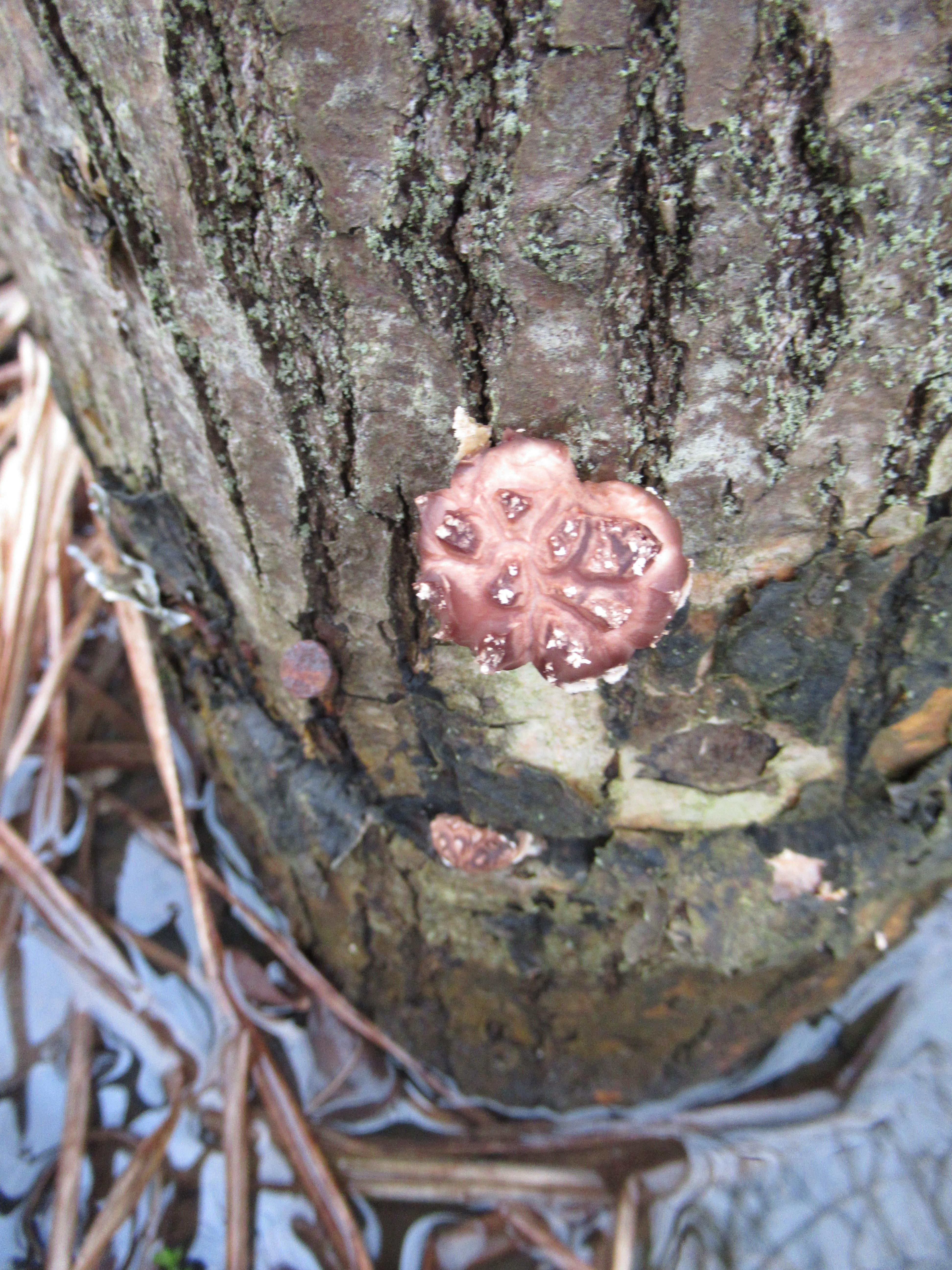
It’s important to scout for these growths regularly this time of year or else it’s easy to miss the mushrooms when they are at their prime.
Birds have begun to build their nests in birdhouses scattered around the garden. Here a wren and chickadee have chosen spots to rear their young:
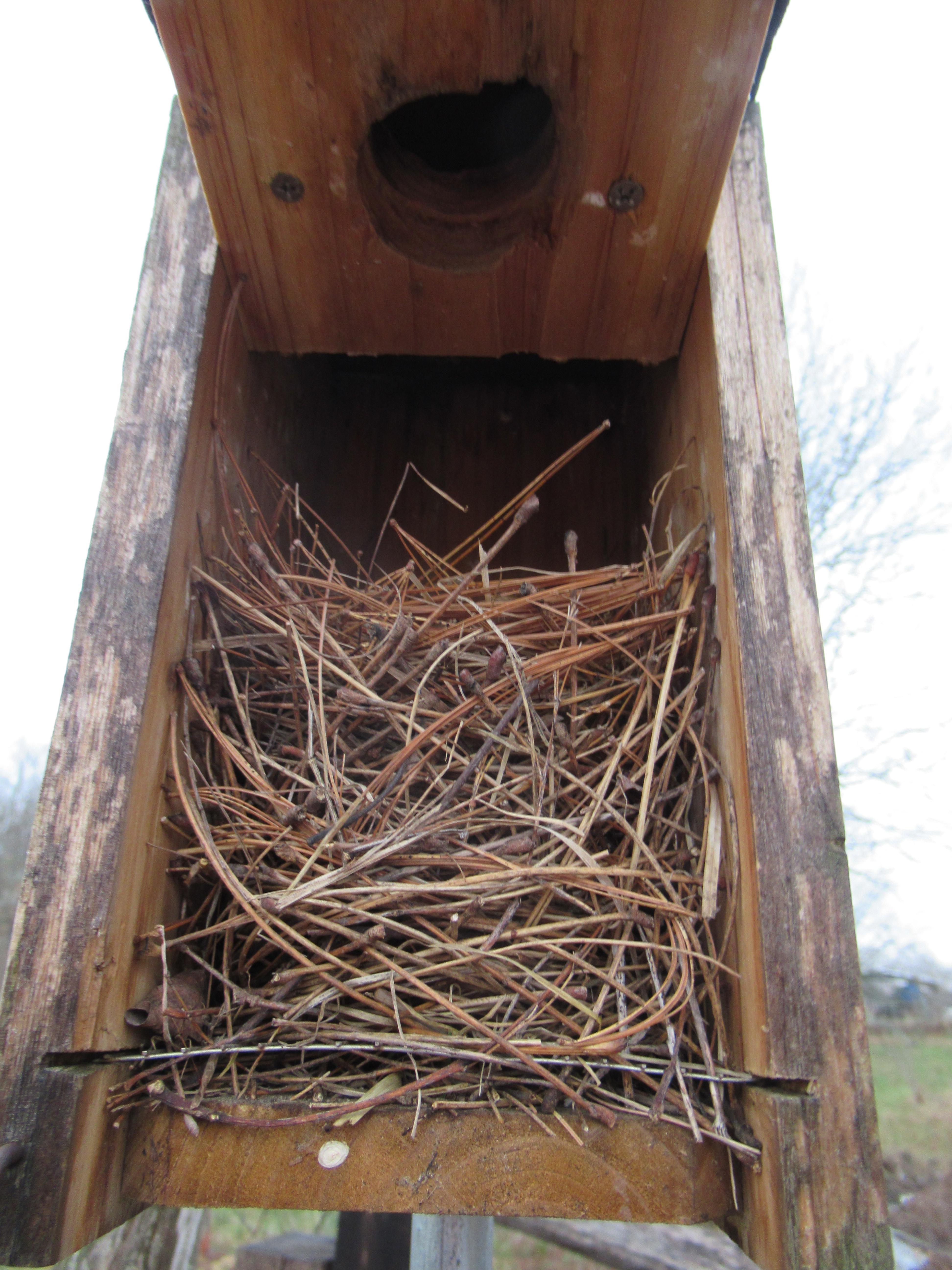
Above: wren nest | Below: chickadee nest
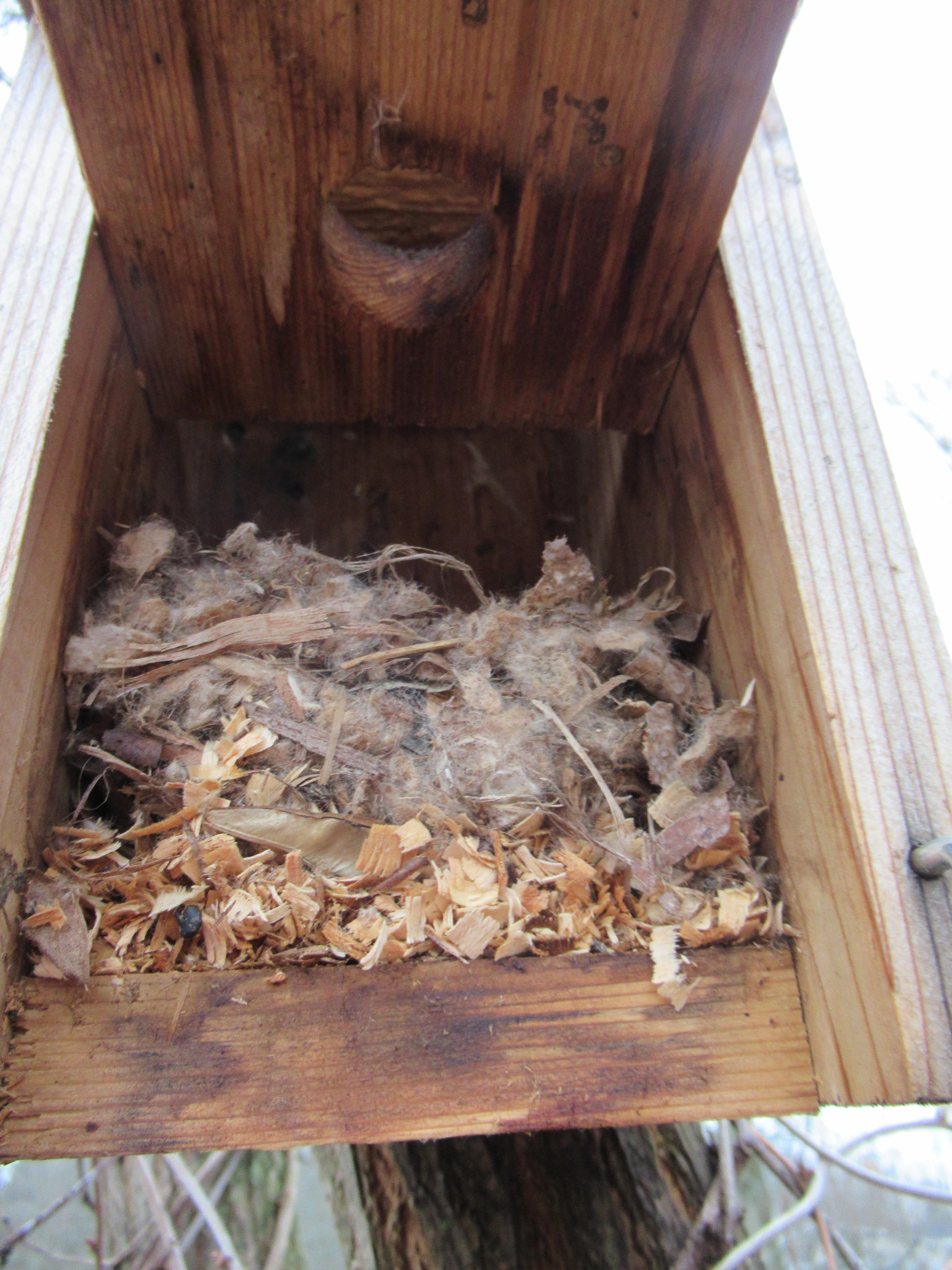
Later this spring both birds will collect bugs from the garden to feed their hatchlings, protecting garden plants from insect pests naturally.
Finally, gooseberries, some of the earliest bushes to flower and fruit, are opening their buds, beginning to grow anew (below).
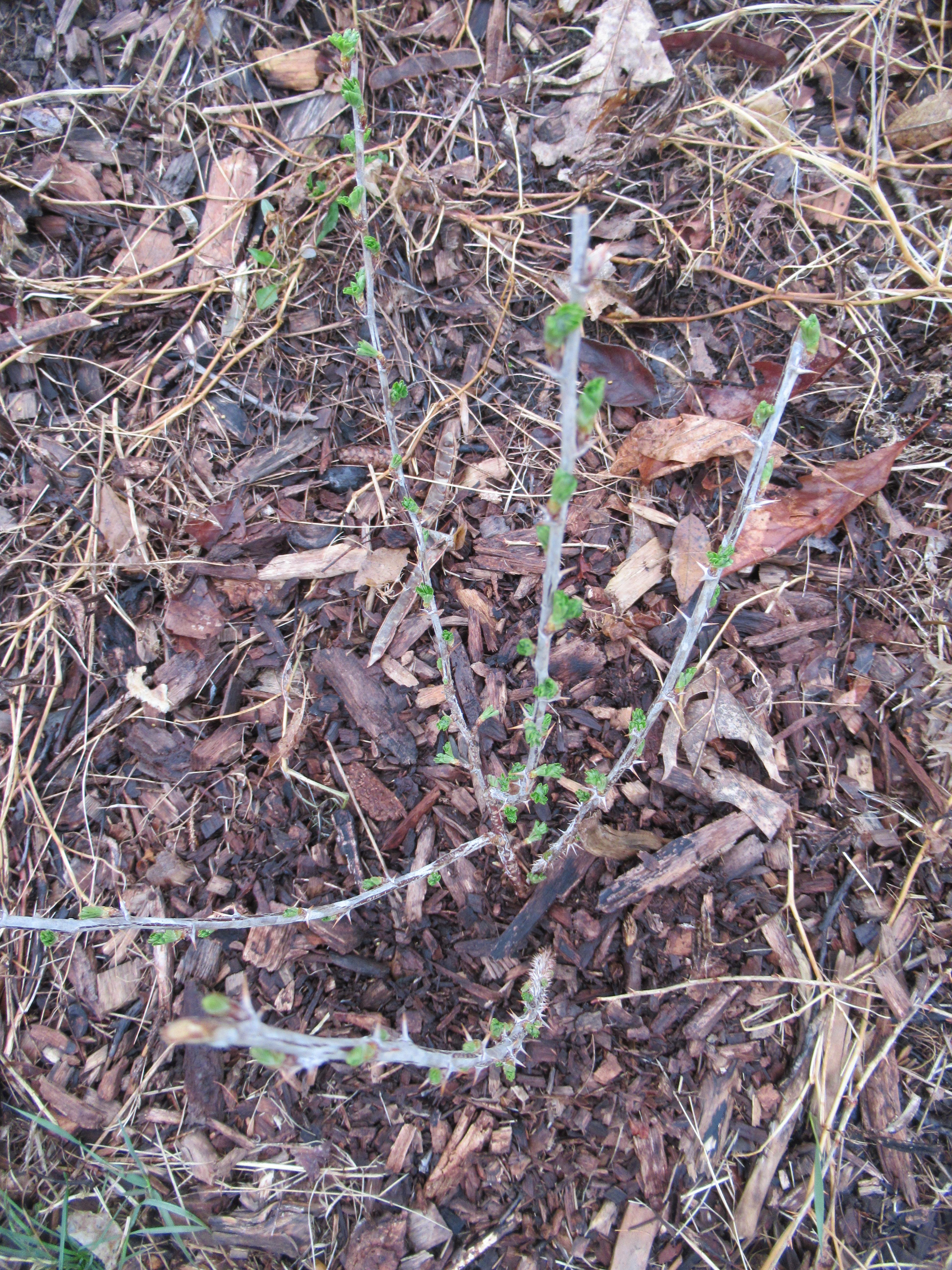
Take a walk outdoors to explore and discover the signs of spring in your neighborhood.
Signs of Spring in the Enchanted Edible Forest
April 14, 2022
Just over three weeks in to Spring the Edible Forest is waking up. One of the first signs of the season are crocuses beginning to bloom (below). They survive here surrounded by daffodils which are poisonous and deter hungry mice and voles from consuming the crocus bulbs.
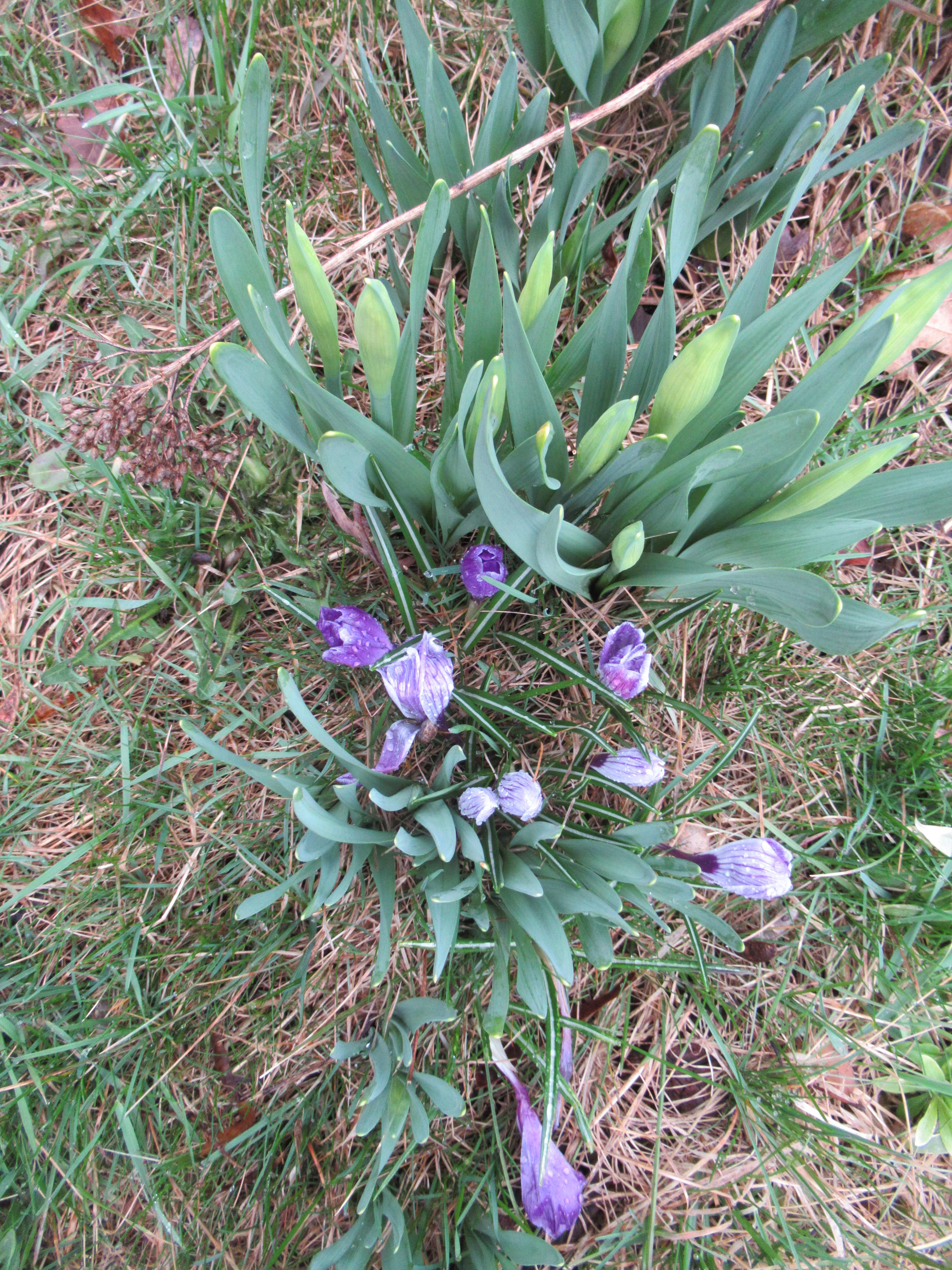
Other early signs are several edible groundcover plants beginning to green up. First are chives and daylilies (below) which together form a formidable groundcover once full grown.
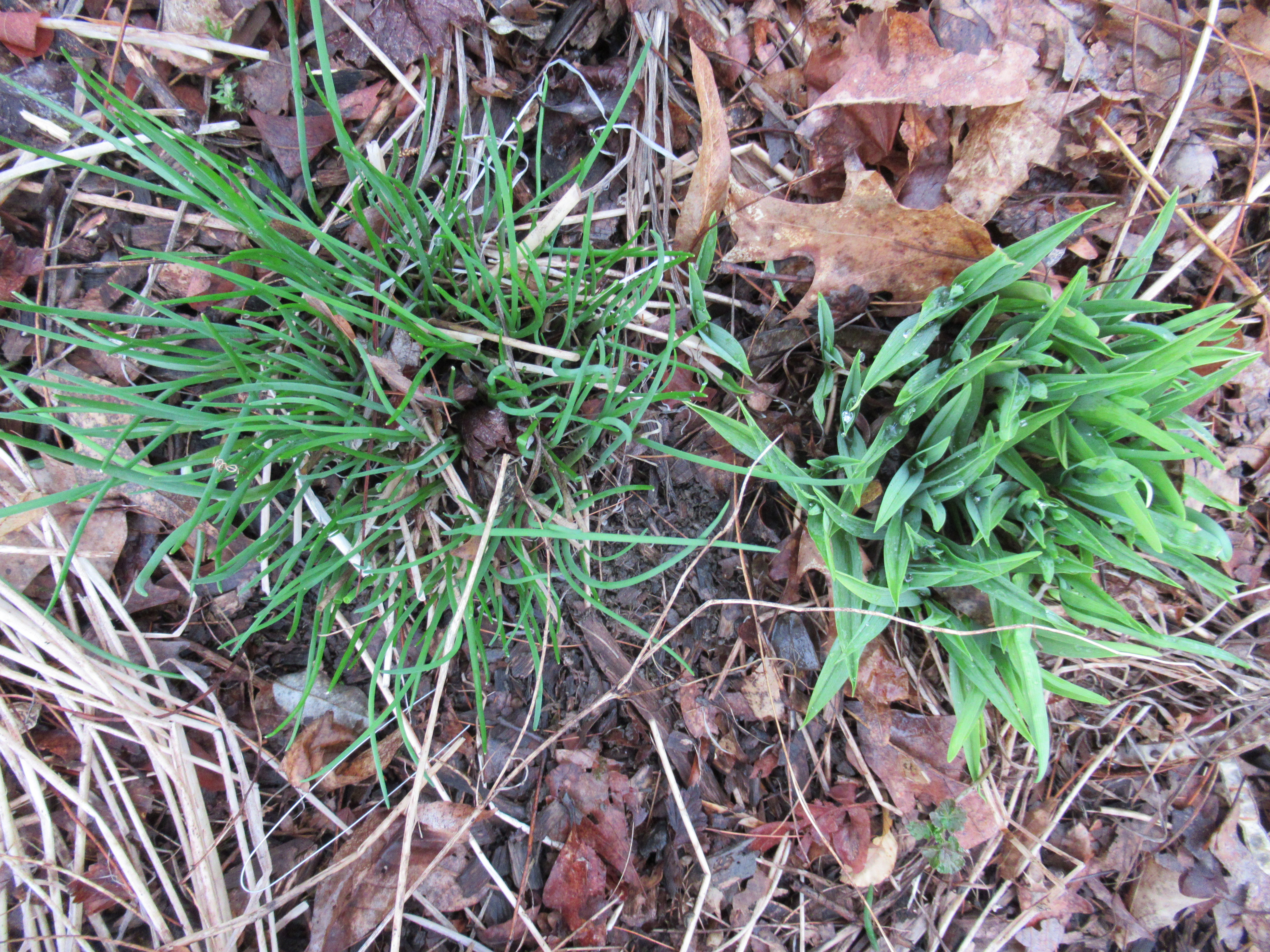
Rhubarb and garden sorrel are early emergers as well.
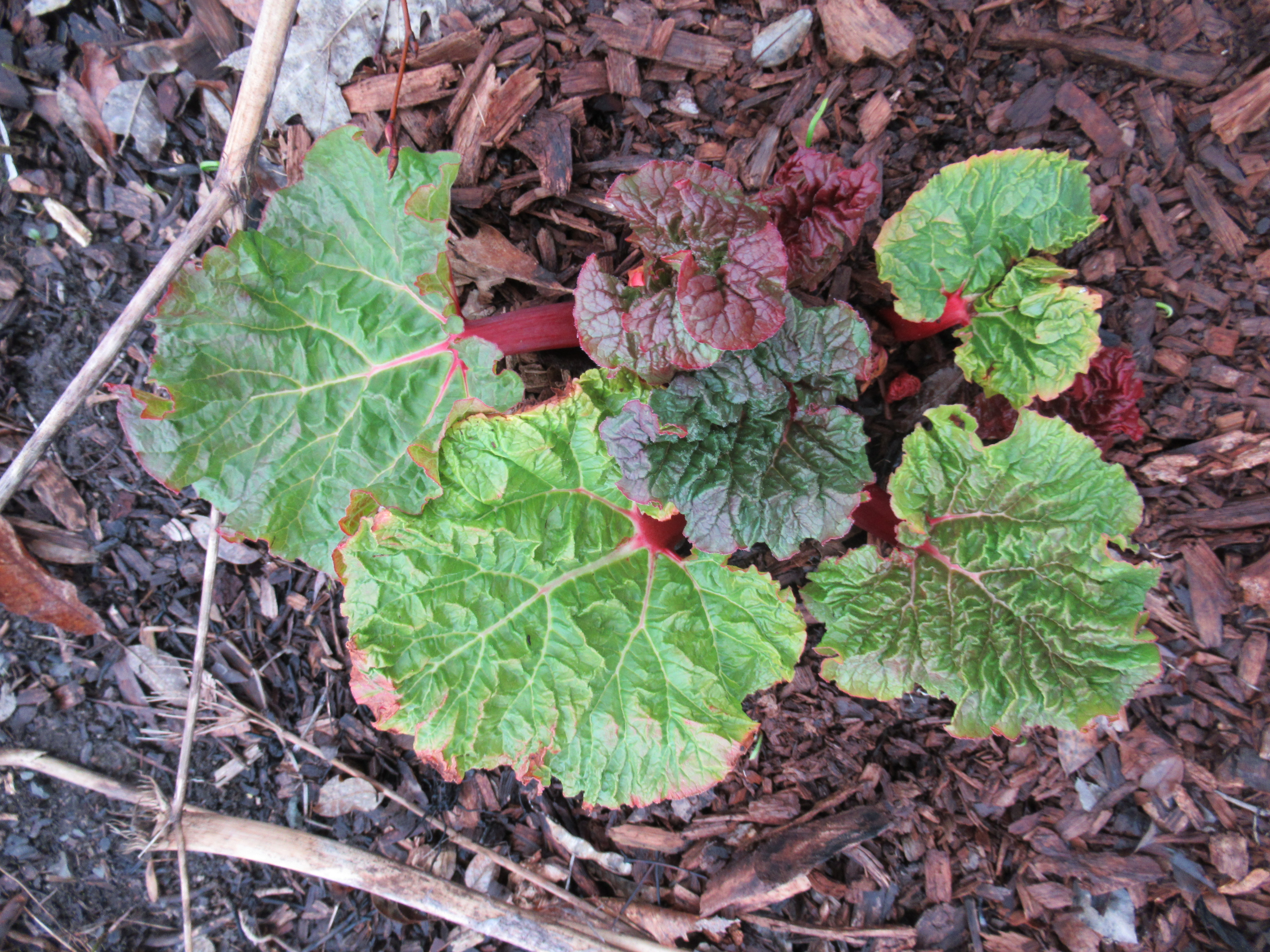
Above: rhubarb | Below: garden sorrell
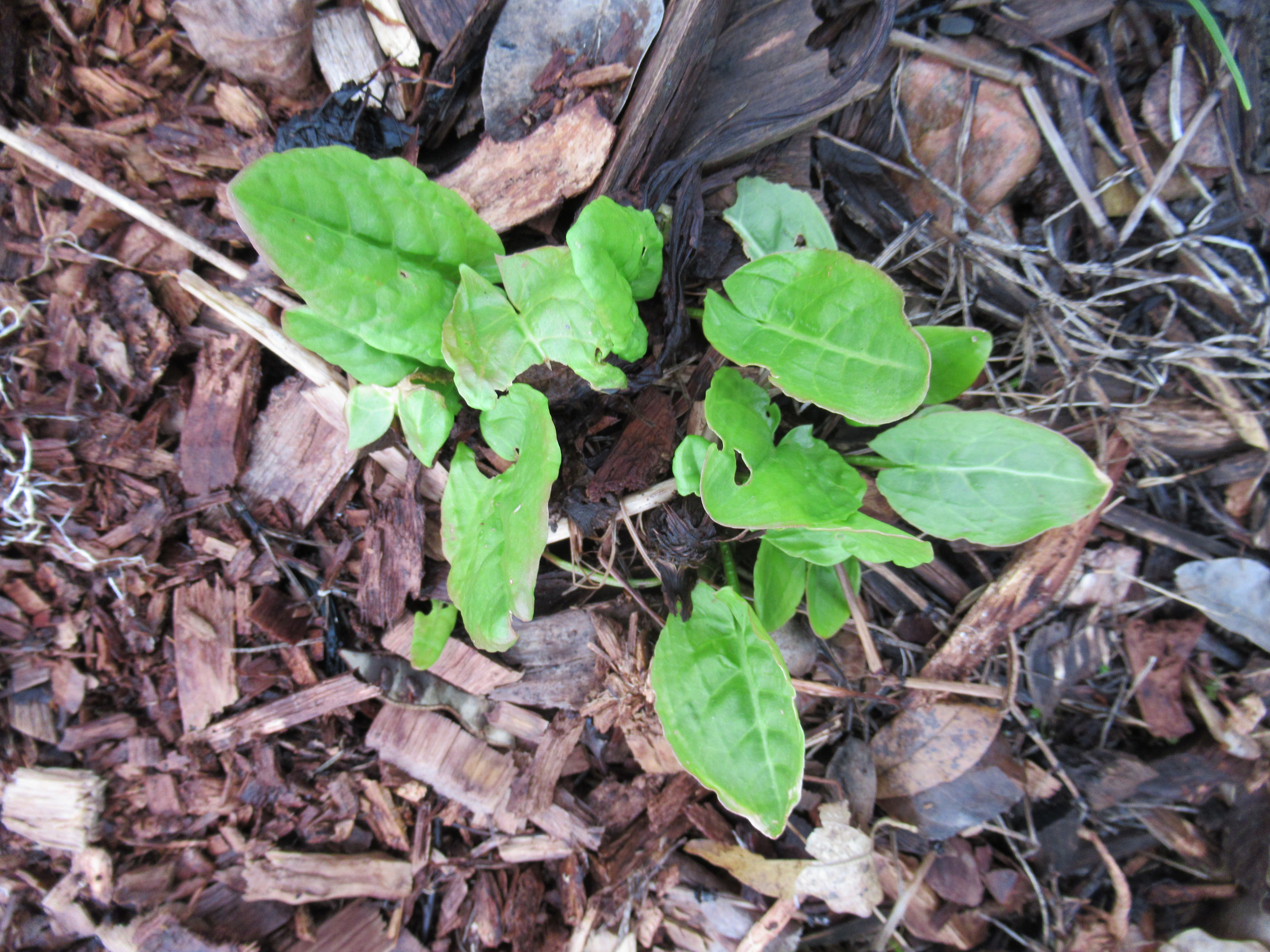
Finally, water celery (below) is greening up nicely in a part of the garden with saturated soil, a habitat to its liking.
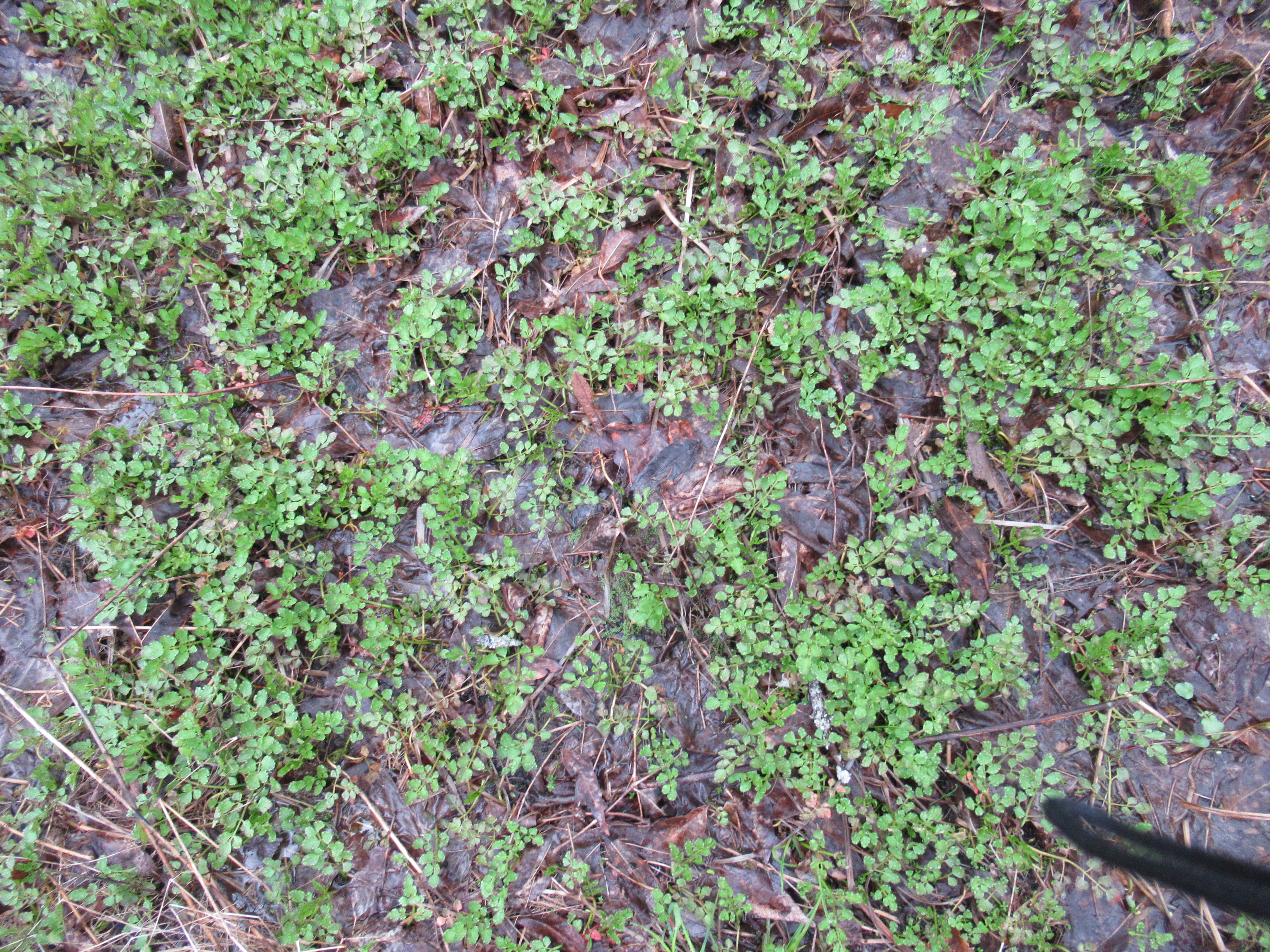
Growing Saffron in the North Country
March 31, 2022
Before I began my edible forest adventure, I thought of saffron as an exotic spice that grows in the arid middle east, not in the frigid north country. But it turns out that saffron is an adaptable plant that you can grow in your back yard.
Saffron is in the crocus family and grows from a small bulb called a corm. Each saffron flower has three stamen which are harvested and dried to become saffron spice.
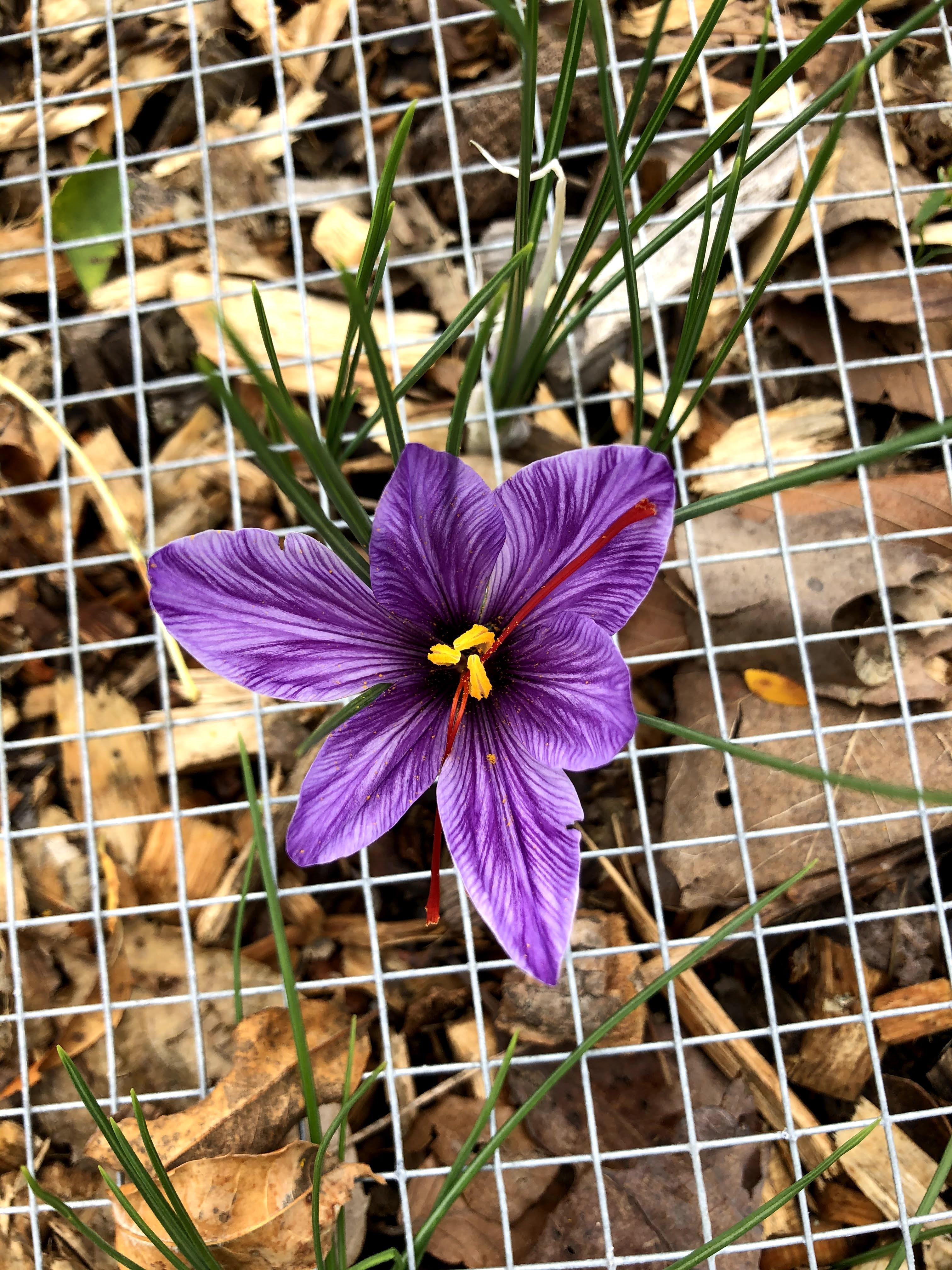
Above: Saffron crocus. Once dried, the deep orange stamen in the middle of this saffron crocus flower become saffron spice.
Below: Saffron harvest. One day’s harvest of saffron in year one from my original planting of 300 corms.
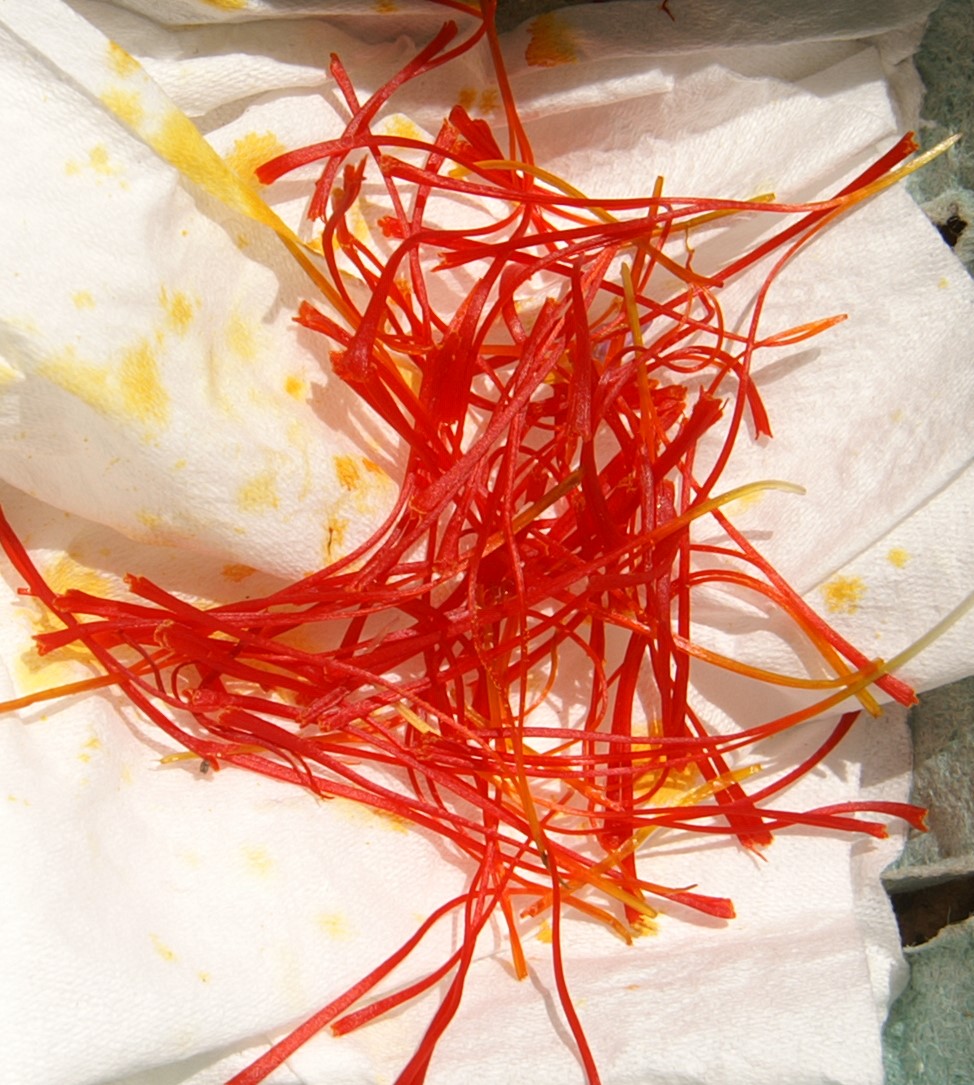
The saffron crocus has a different life cycle from the familiar decorative crocuses which are one of the first bulbs to bloom in spring. The saffron crocuses bloom in October, flower daily over a 3 to 4-week period, grow all winter, and have a dormant period from June through September. During its growth cycle after it blooms, each corm produces several new bulbs surrounding it underground. These new bulbs will give rise to next season’s flowers. Similar to tulips or daffodils, after a few seasons of growth the corms begin to crowd each other and become unproductive of flowers. Then it’s time to dig them up and replant them elsewhere.
If you want to grow saffron, your biggest enemies are rodents--mice and voles which love to eat the bulbs. For a small planting, surrounding your corms with daffodil bulbs can keep the rodents at bay as daffodils are poisonous and avoided by rodents. In a larger planting it is useful to build a six-inch deep rodent-proof cage of hardware cloth as shown in the photo. You plant the corms about 5 inches apart at the base of the cage and cover them with six inches of rich soil or compost. Then secure a sheet of hardware cloth over the cage to keep the pilferers out (see below).
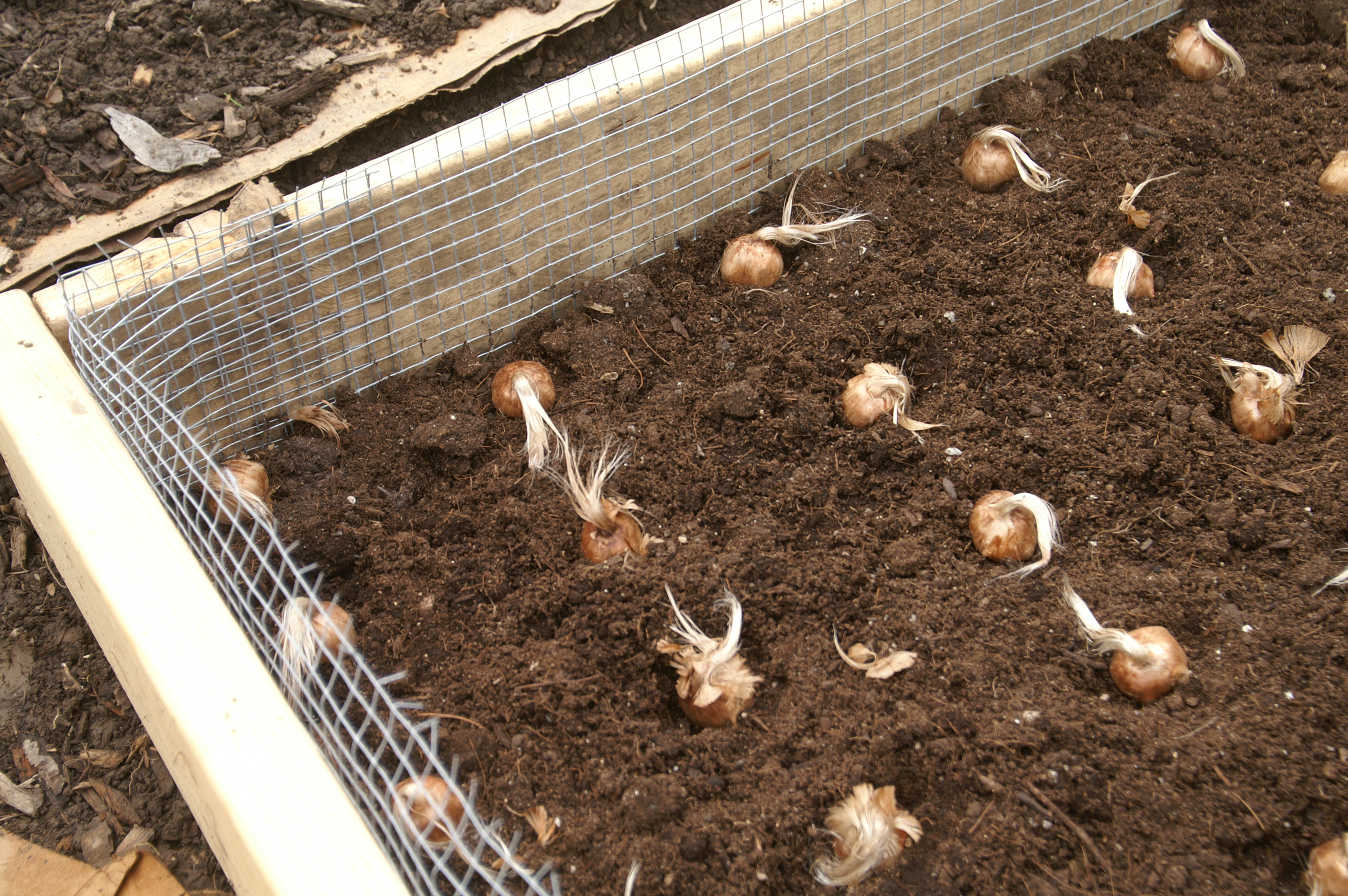
In late fall or early winter when the ground is cold, it is helpful to cover the bed with a thick mulch of leaves to keep the plants a bit warmer through the winter. Once spring arrives, it’s time to remove the leaf mulch. This was my project for today. I used gloved hands to gently remove the thick, matted leaf mulch so as not to rip any of the live growth beneath. The saffron leaves were bright green and yellow beneath the mulch.
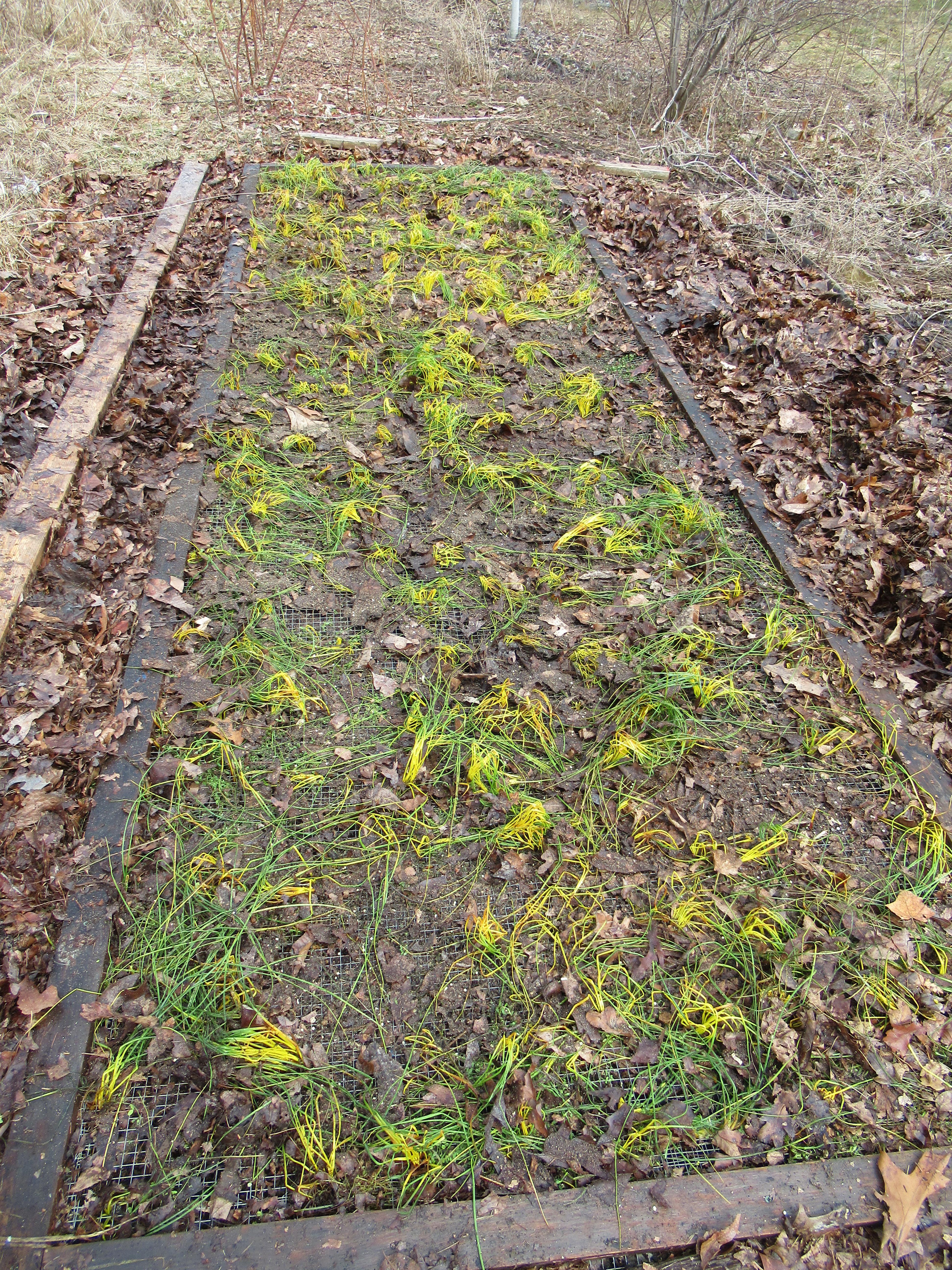
Above: Leaf mulch removed revealing growing plants
Below: Closeup of saffron plant just freed of mulch cover
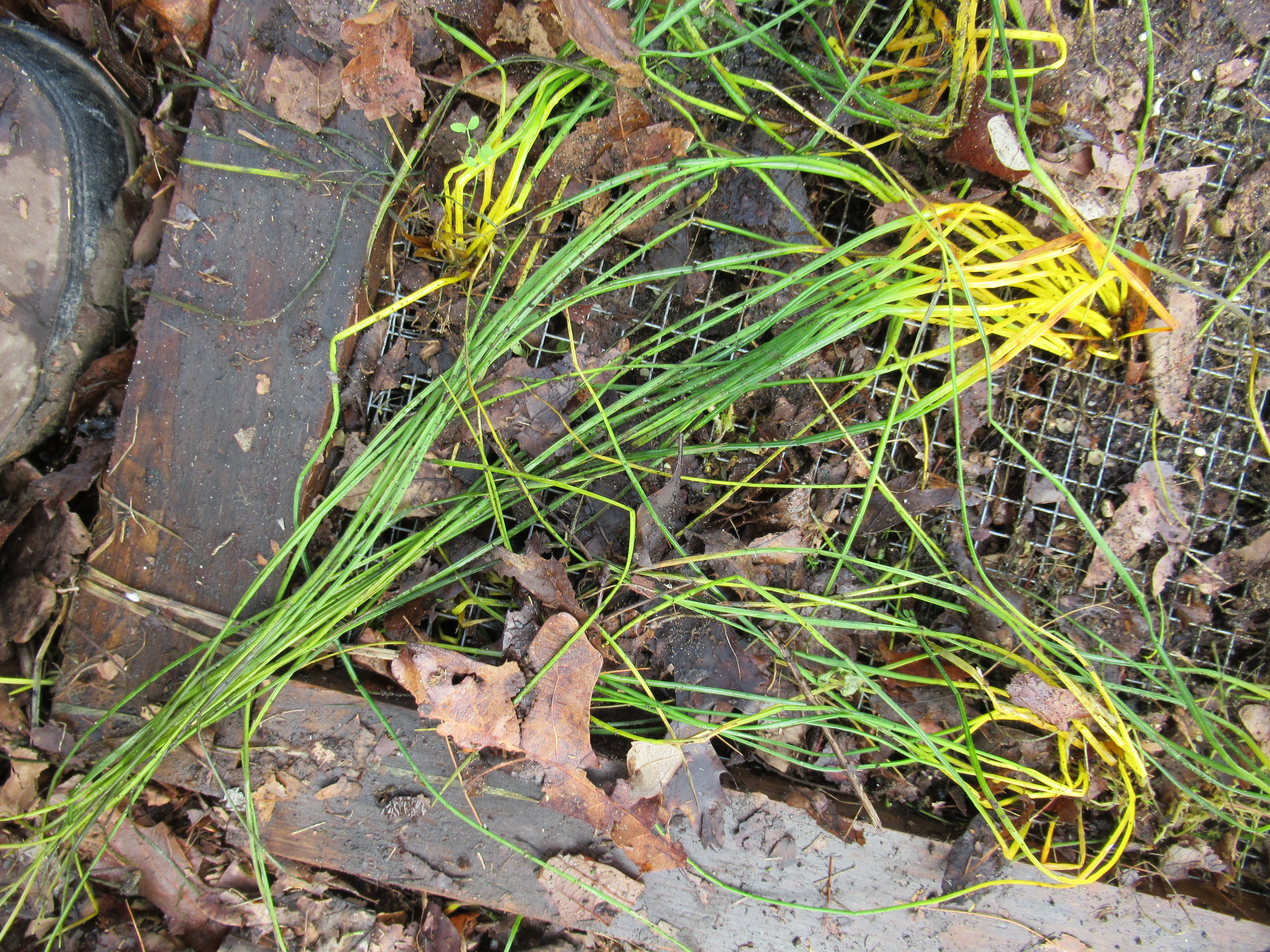
Once I removed all the leaf mulch, I covered the bed with a double layer of row cover, a woven insulating fabric permeable to light, air and water, both to hold in some of the heat from the day, and to camouflage the plants so they would not be tempting to rabbits, other members of the rodent family that love to eat the fresh leaves (see below).
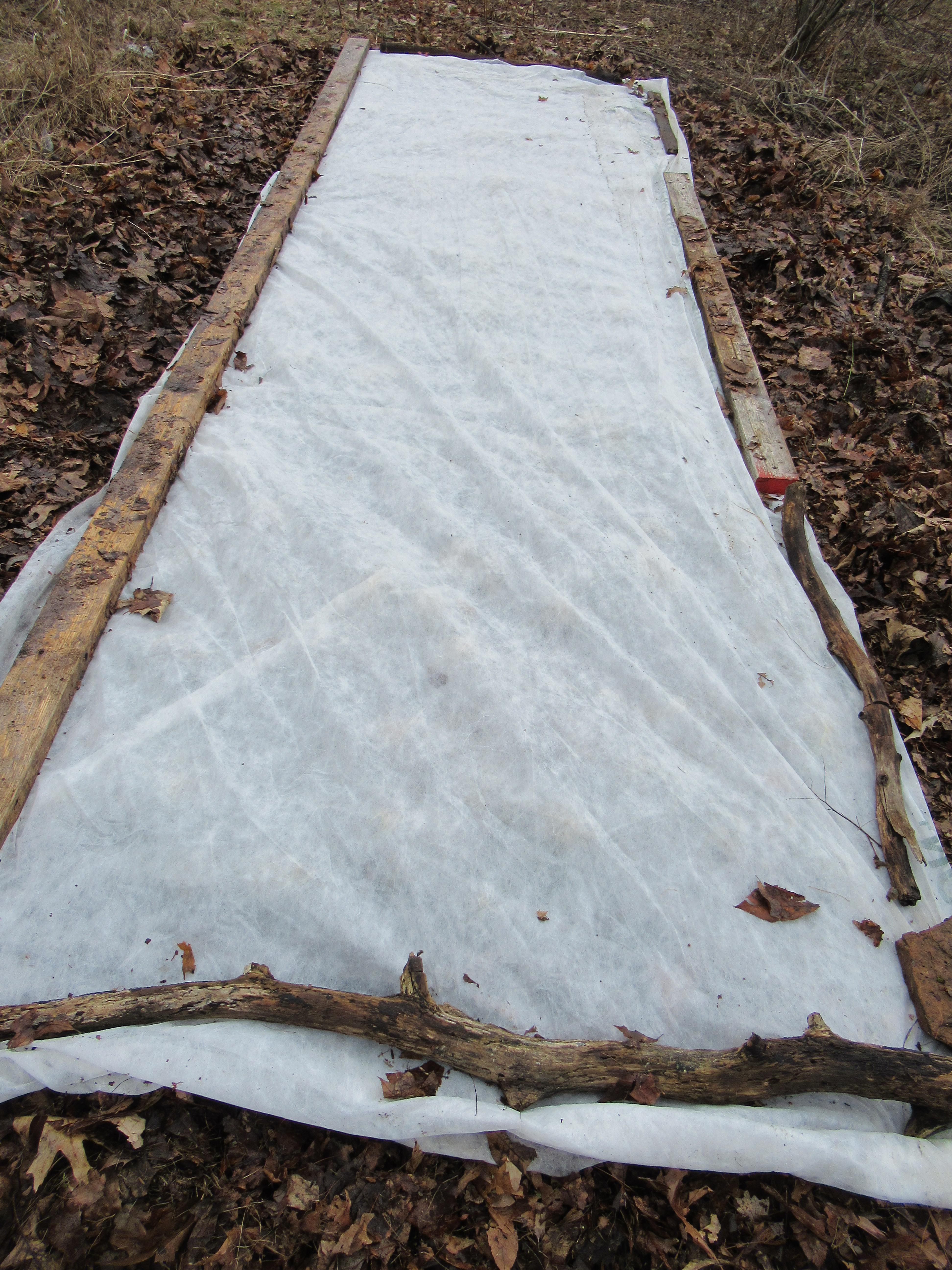
The saffron leaves will green up and continue to grow under the row cover, producing new corms underground, until they dry down and go dormant in late spring. This year the plants look very healthy, and I am hoping I will harvest a sizeable crop of saffron this fall. Stay tuned to find out how they do!
Late Winter Pruning in the Enchanted Edible Forest
March 11, 2022
Today was the perfect day to begin pruning chores in the Enchanted Edible Forest: the temperature at or above 40 degrees Fahrenheit, calm winds, and bare ground showing after show melt around some shrubs and trees.
I started with a row of “Rovada” red currants along the property line as well as some fall raspberries in the same location. For each currant bush, I first trimmed branches close to the ground which would be touching the earth when laden with fruit in July, which might cause the fruit to rot prematurely. Then I looked for the first-year stems and trimmed out all but four well-spaced tall thick ones. Then I located three or four of the best spaced two-year old stems, trimming out the rest, and finally chose up to four three-year old stems to leave intact. In the final step I trimmed outside shoots growing too close to other branches or crowding the center where they would eventually block sunlight from reaching berries needing its rays to ripen.
I saved one-year old pruned stems with the width of a pencil to use to propagate new bushes (see below). Next, I pruned all of the fall raspberry brambles flush with the ground. New shoots will emerge in spring to provide the fall crop.
Then I moved on to a group of “Titania” black currants. Here, after trimming out the low hanging branches, I chose up to six of the tallest and thickest one year old shoots and pruned out the rest. Then I located up to six well-spaced two-year old stems to leave standing. Finally, I chose two or three three-year old stems with the most one-year old side shoots to remain and pruned out the rest. Finally, I trimmed out any branches impinging on others or potentially blocking the sunlight. As with the red currants, I saved pencil-thick one year old stems of the black currants to use to propagate new bushes.
Arriving back at the house, with one year old stems and the rest of the trimmings in hand, my first stop was the goat pen where I deposited the bulk of the pruned branches for the goats to enjoy.

Then I clipped a few thin branches from a large weeping willow tree close to our house to use to make “willow water”. By chopping up the thin branches and submerging them in water, they create a natural rooting medium which stimulates root growth.
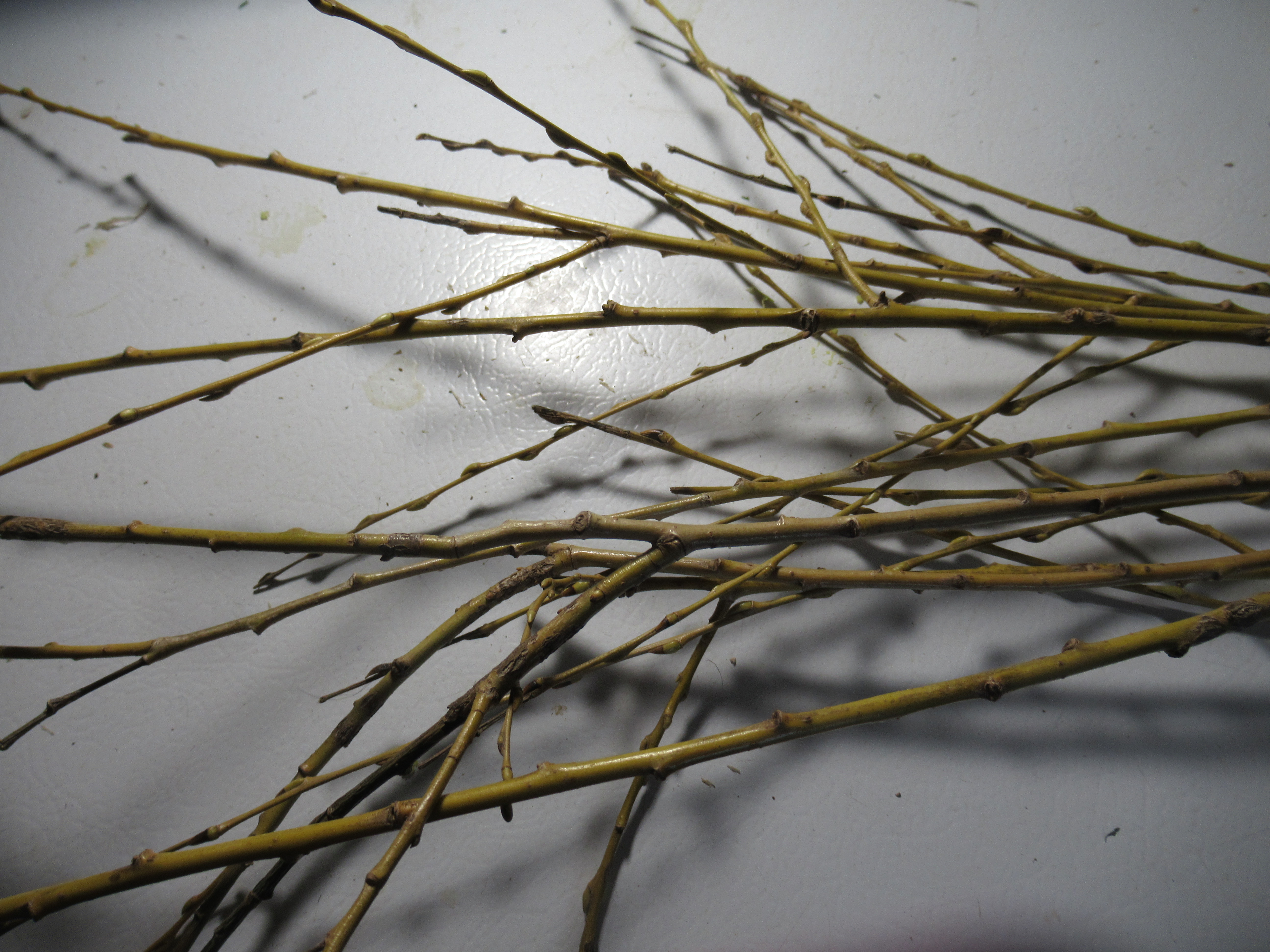
Above: Thin willow branches
Below: Willow branches chopped to make willow water
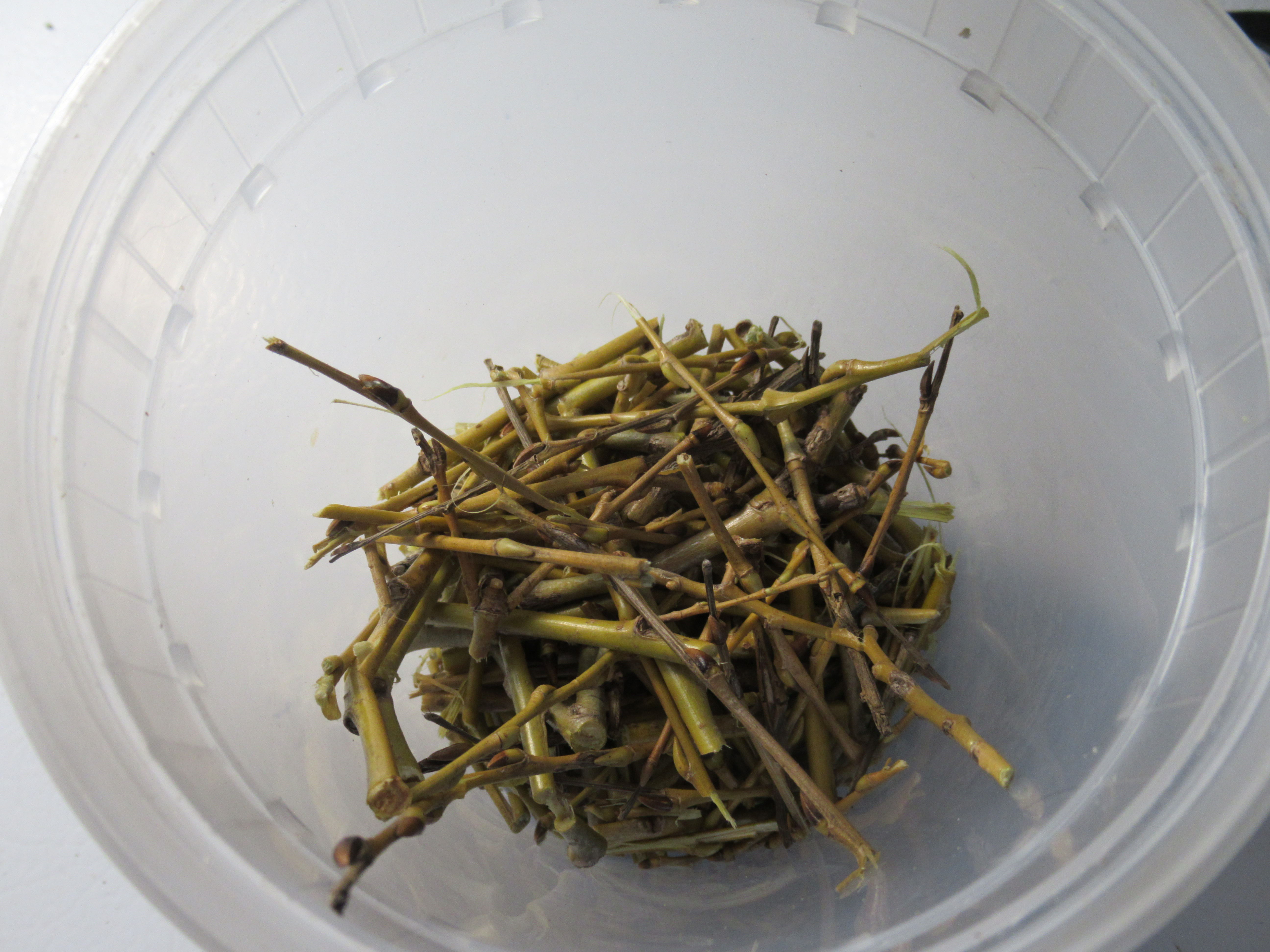
Next, I prepared the currant cuttings for rooting. I took each pencil-width one year old stem and made a square cut beneath the lowest bud. Then I counted up the stem three to five buds and made an angled cut above the highest bud, creating a cutting from 6 to 10 inches long. The horizontal cut reminds me that that location is at the bottom of the cutting, and the angled cut indicates the top and will also help the stem shed water when it is exposed to the elements. Once I prepared each cutting in this manner, I bundled them with a label and rubber band, and immerse the bottom of the bundle in the willow water so the two bottom buds of each stem were submerged and left them to soak overnight.
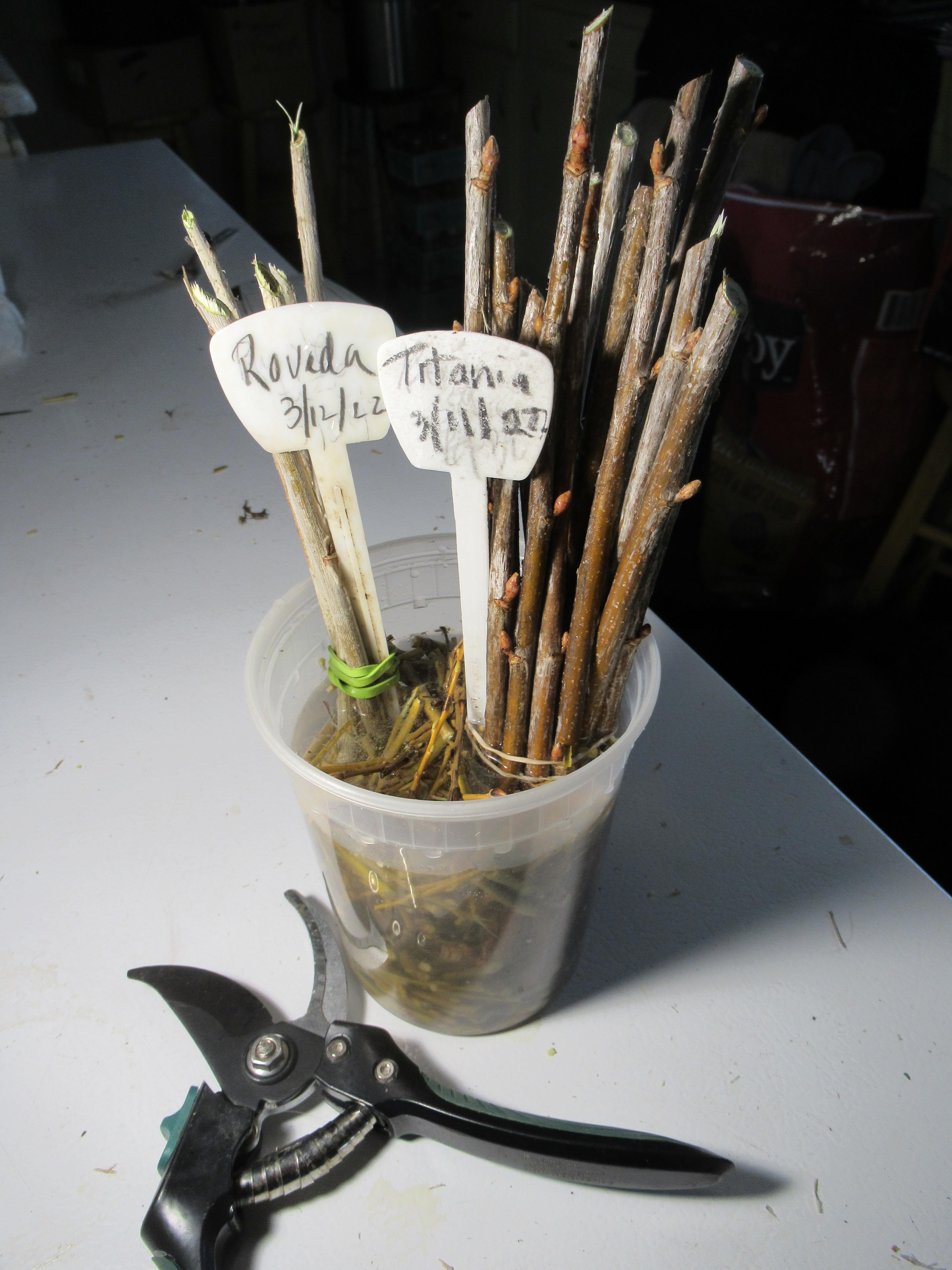
The next day, I filled a half gallon size rubber pot with potting soil and pushed each cutting into the soil so the bottom two buds were covered, placing the cuttings one to two inches apart in the pot. I stuck a plastic label in the pot indicating the variety of cuttings and date, watered it well, and placed it outdoors on a table close to the north side of our farmhouse.
By early summer I expect many of these cuttings will have leafed out, rooted, and begun to grow new branches at which time they will be ready to pot separately to give to friends or to plant out in a new bed in my garden.
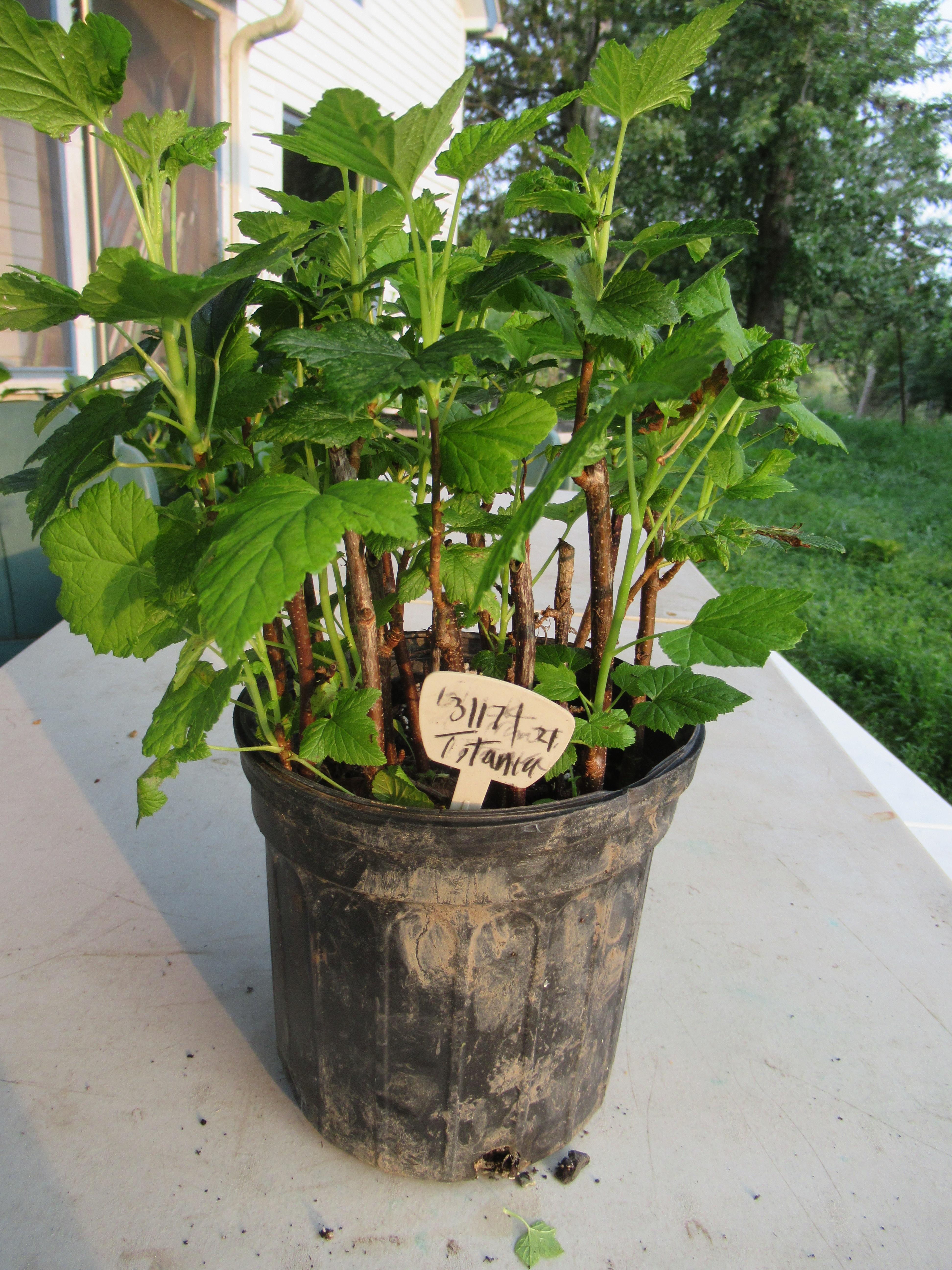
Above: Last year’s Titania black currant cuttings in July - rooted and ready to repot or plant out.
A stroll through the edible forest after a recent snowfall.
March 6, 2022
View of the Enchanted Edible Forest from the East corner fence
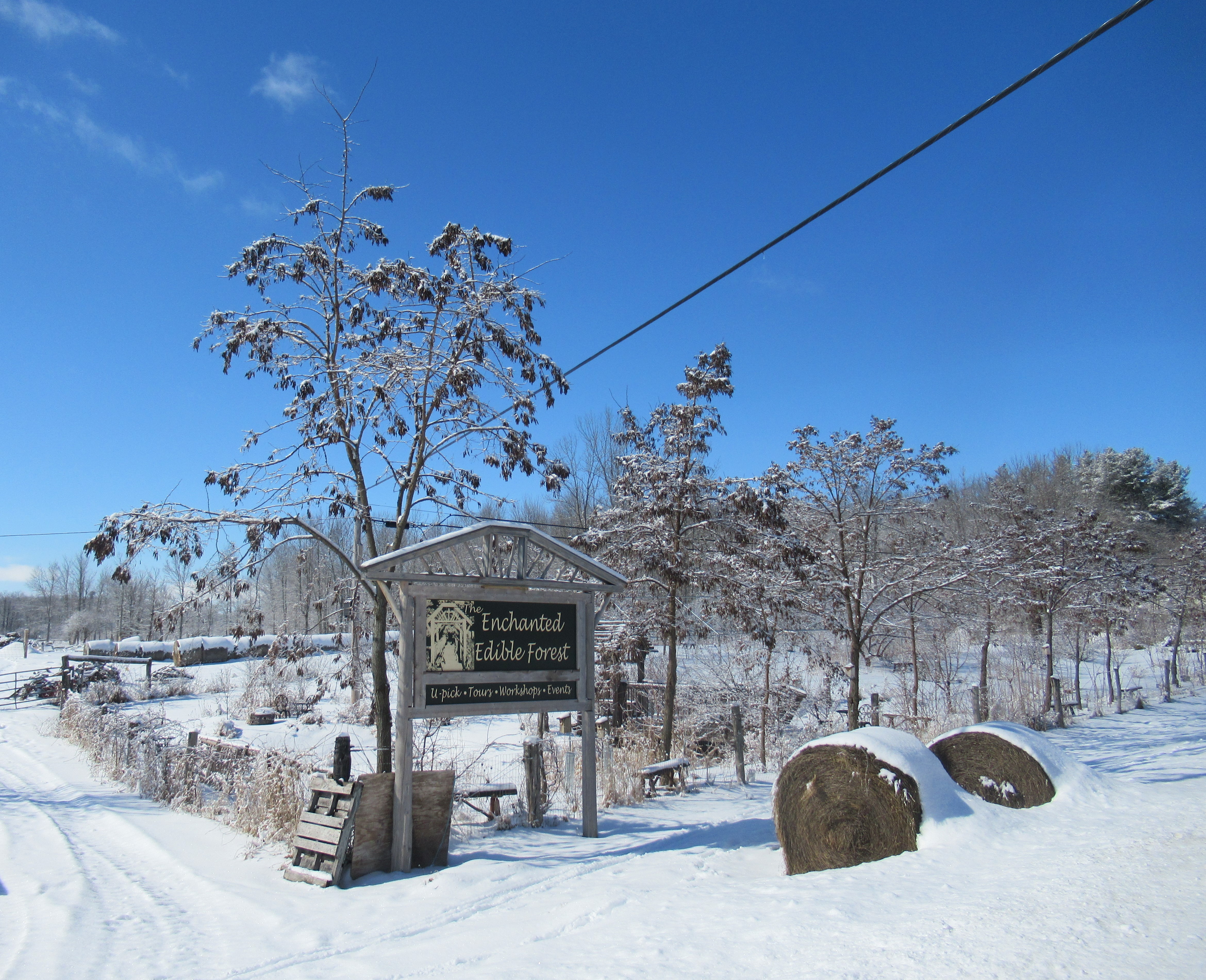
Hollows fashioned by a pileated woodpecker in dead stumps will soon be nesting places for chickadees:
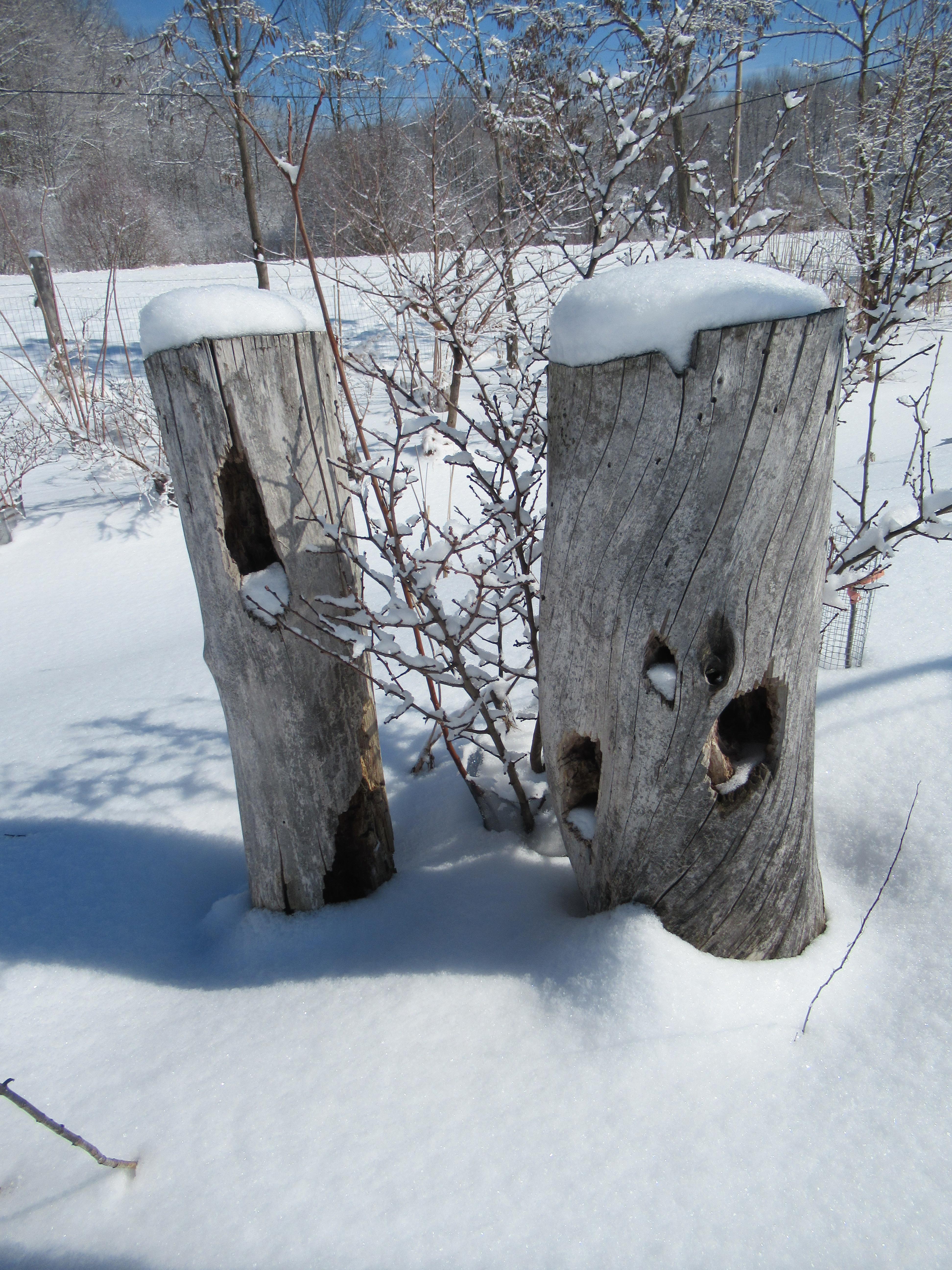
A contorted flowering quince shows off its distorted branches against the snow:
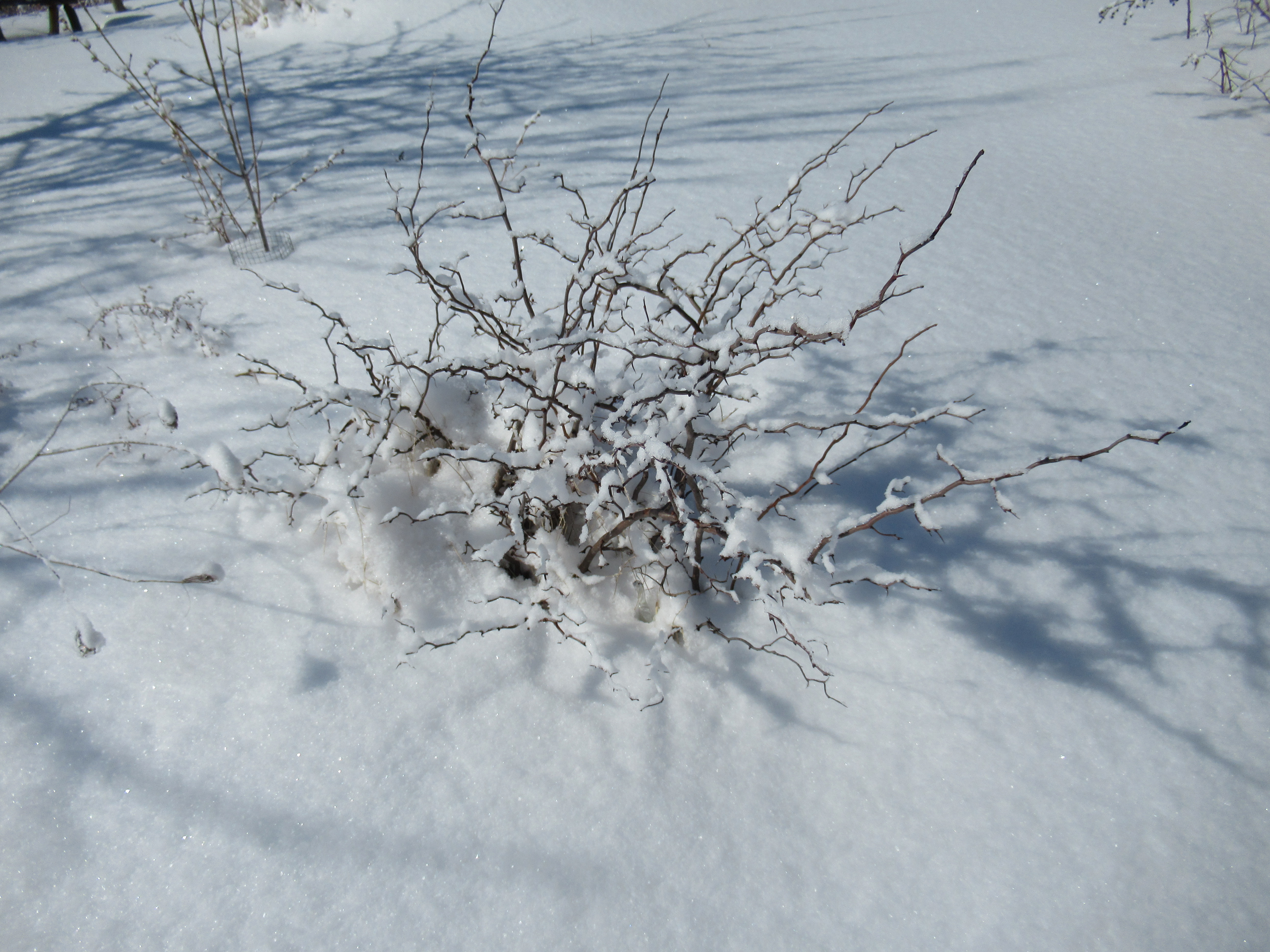
In a couple of months, this “Brianna” Apricot will leaf out and provide inviting shade above this bench:
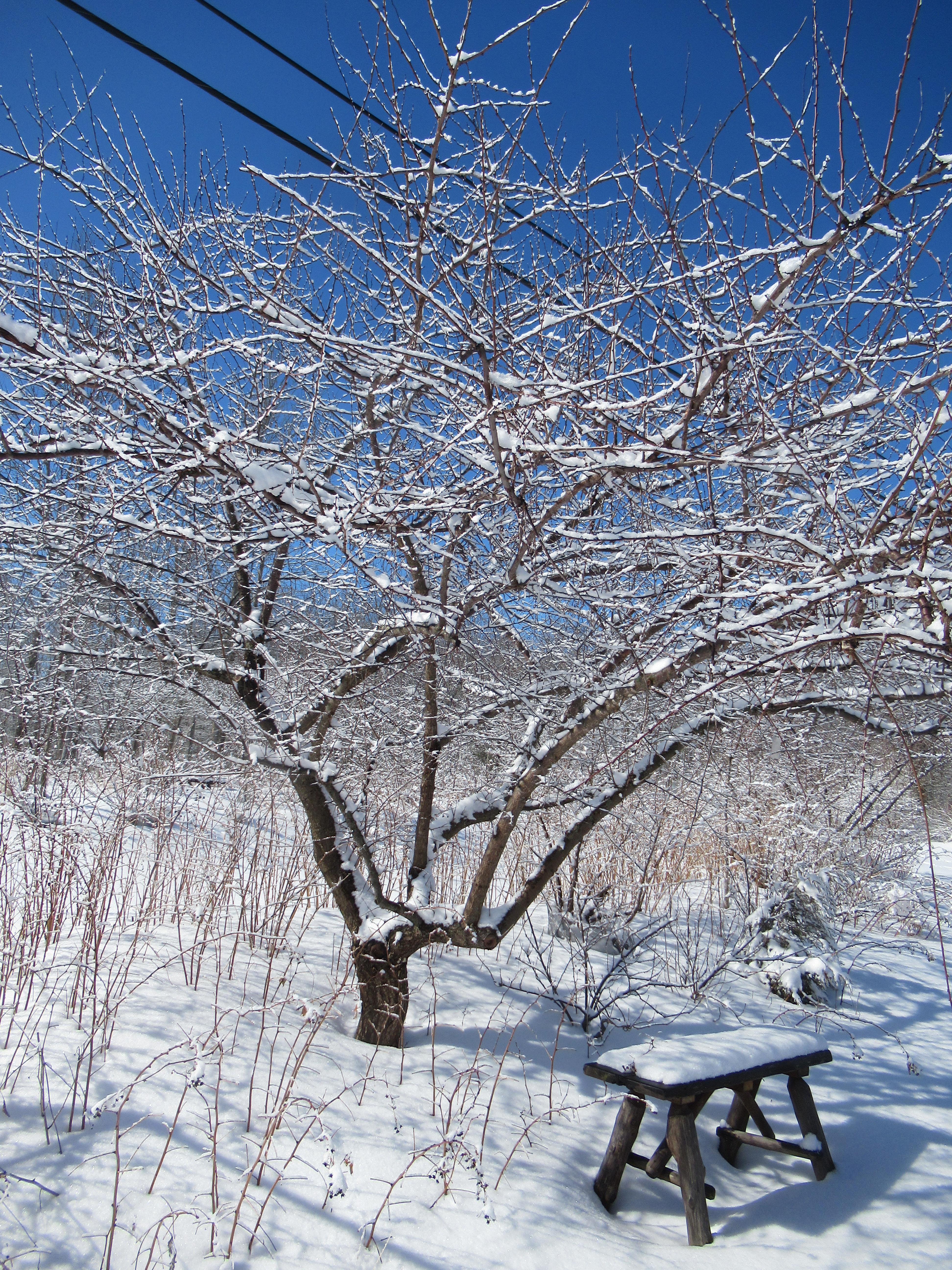
“Froggy” peeks out beneath a blanket of snow while a Korean nut pine looks on:
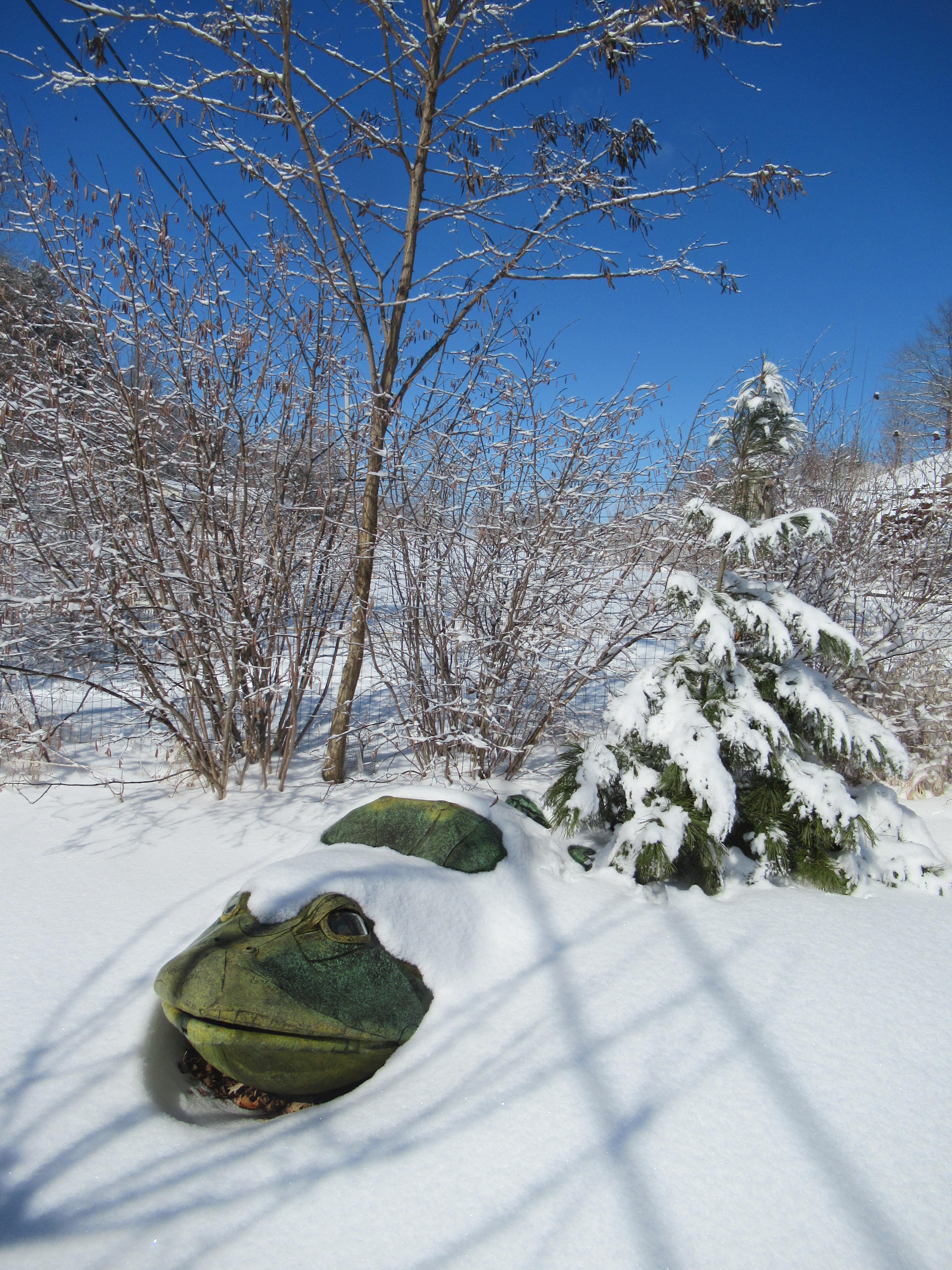
Samba Sue takes a refreshing roll in the soft snow:
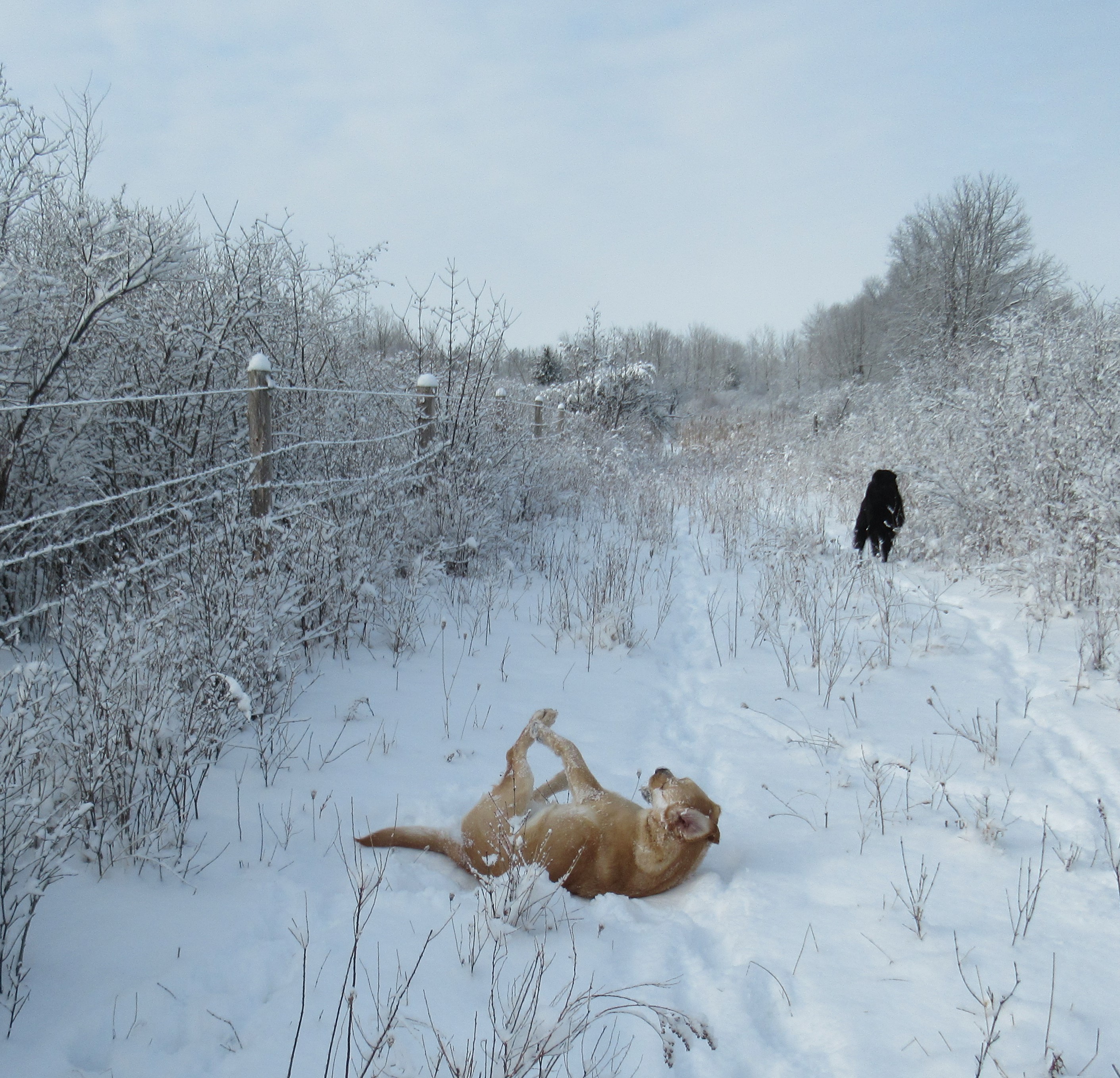
Mid-winter chores in the Enchanted Edible Forest
February 7, 2022
I ventured out today by snowshoe to the Enchanted Edible Forest to clear some snow away from trunk guards protecting fruit trees and berry bushes from rodent girdling under the snow.
Below are before and after images of a young apricot tree and a red currant bush.
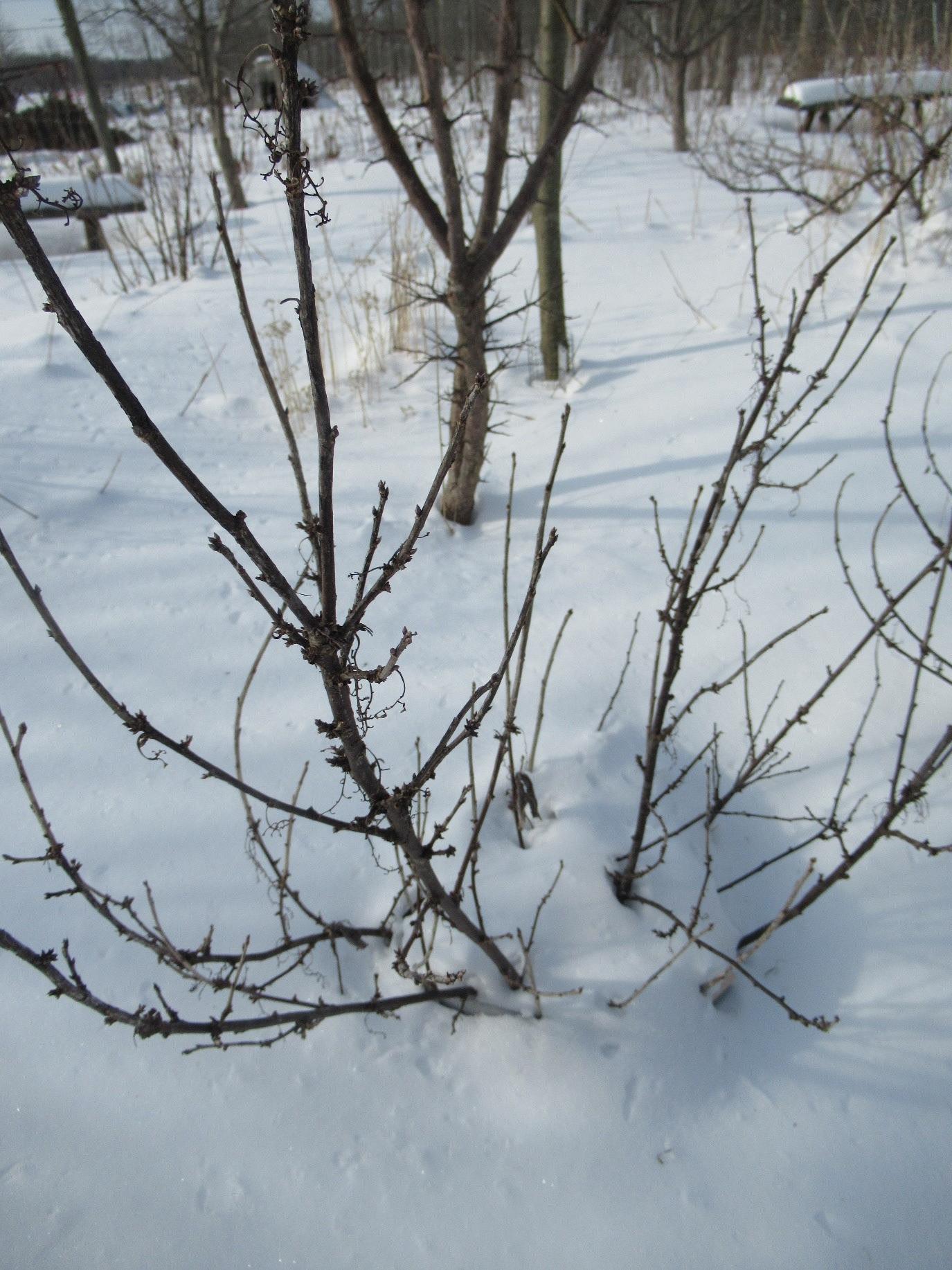
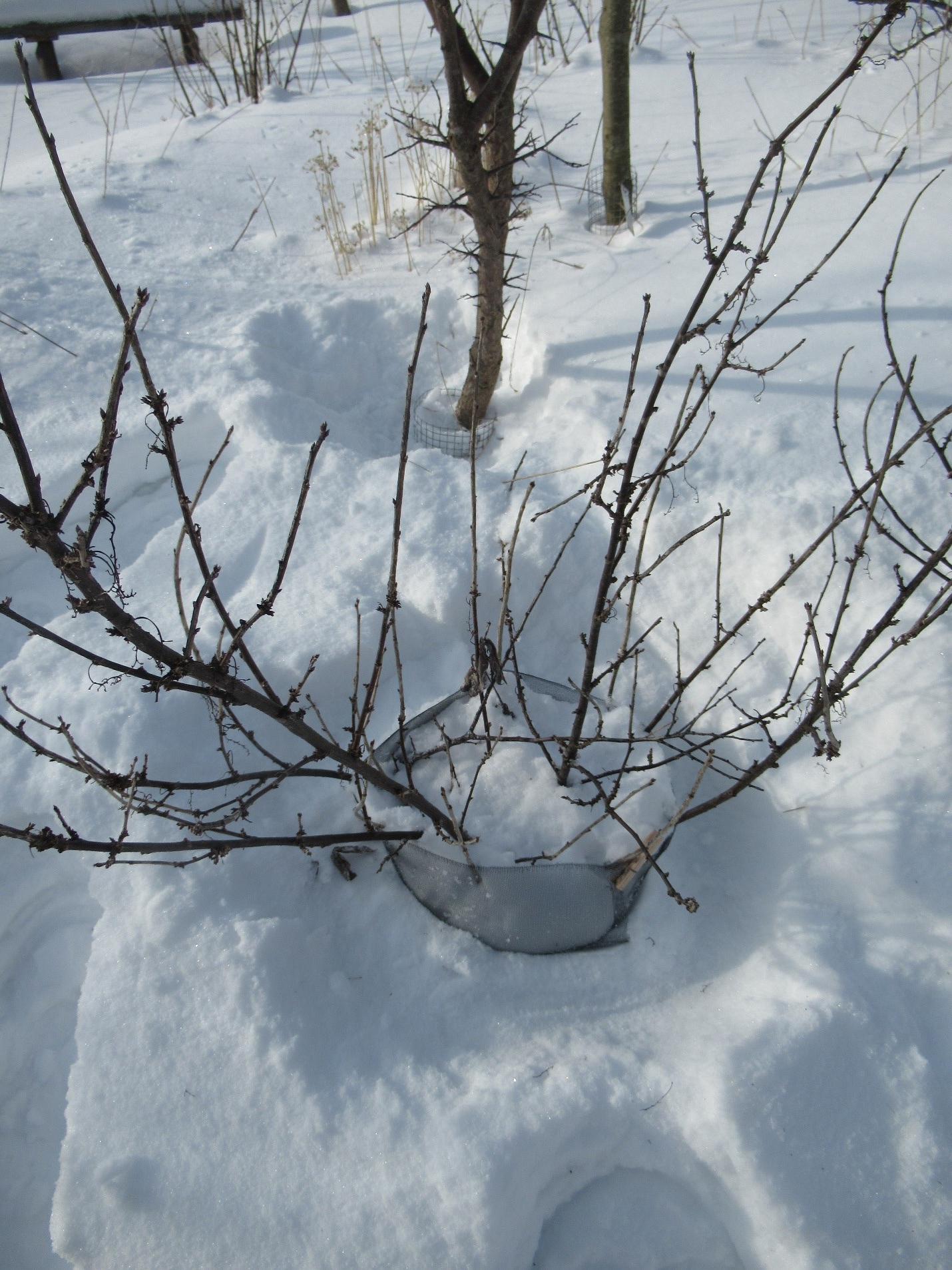
If I don’t protect the trunks, this is what can happen:
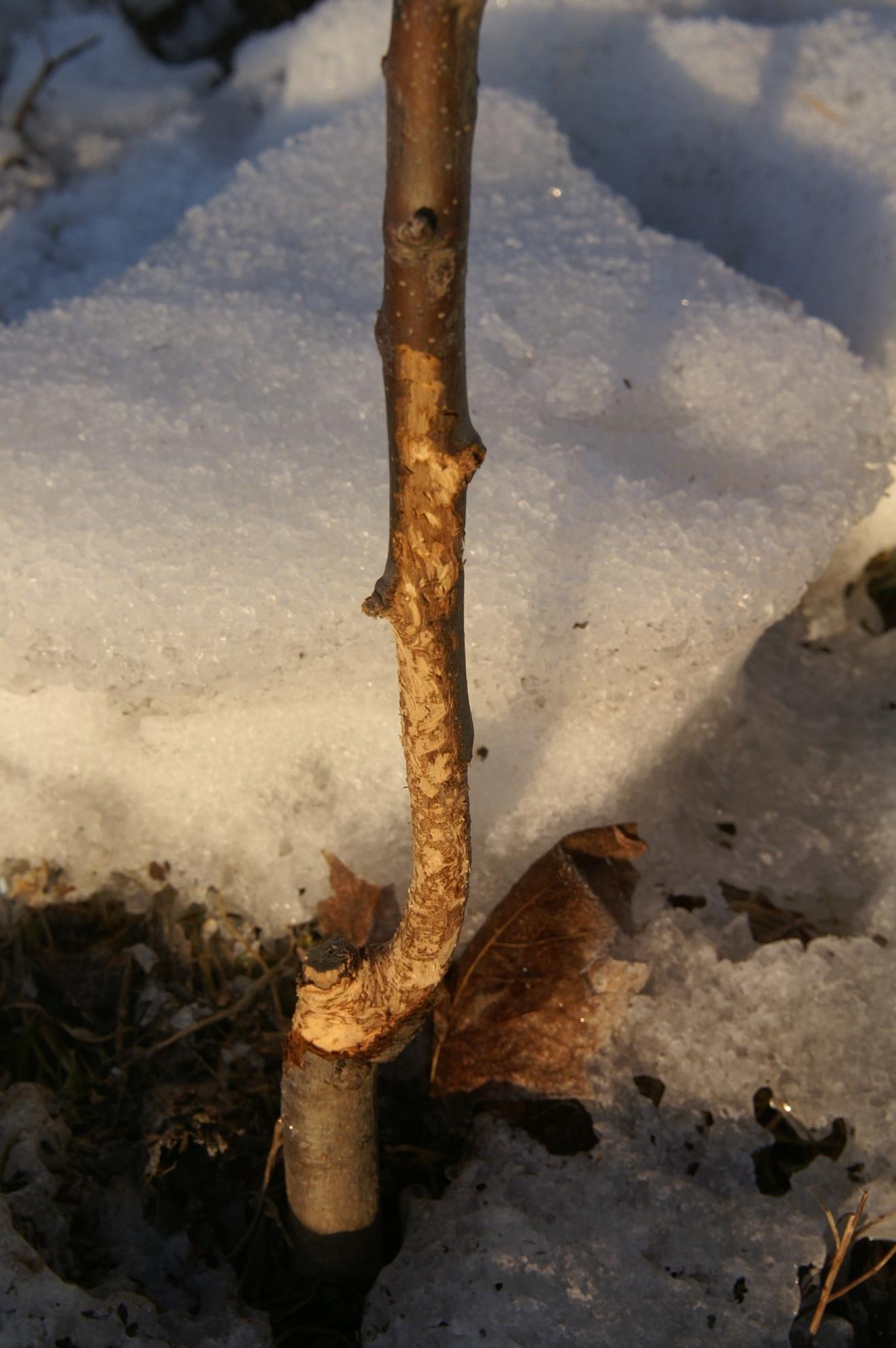
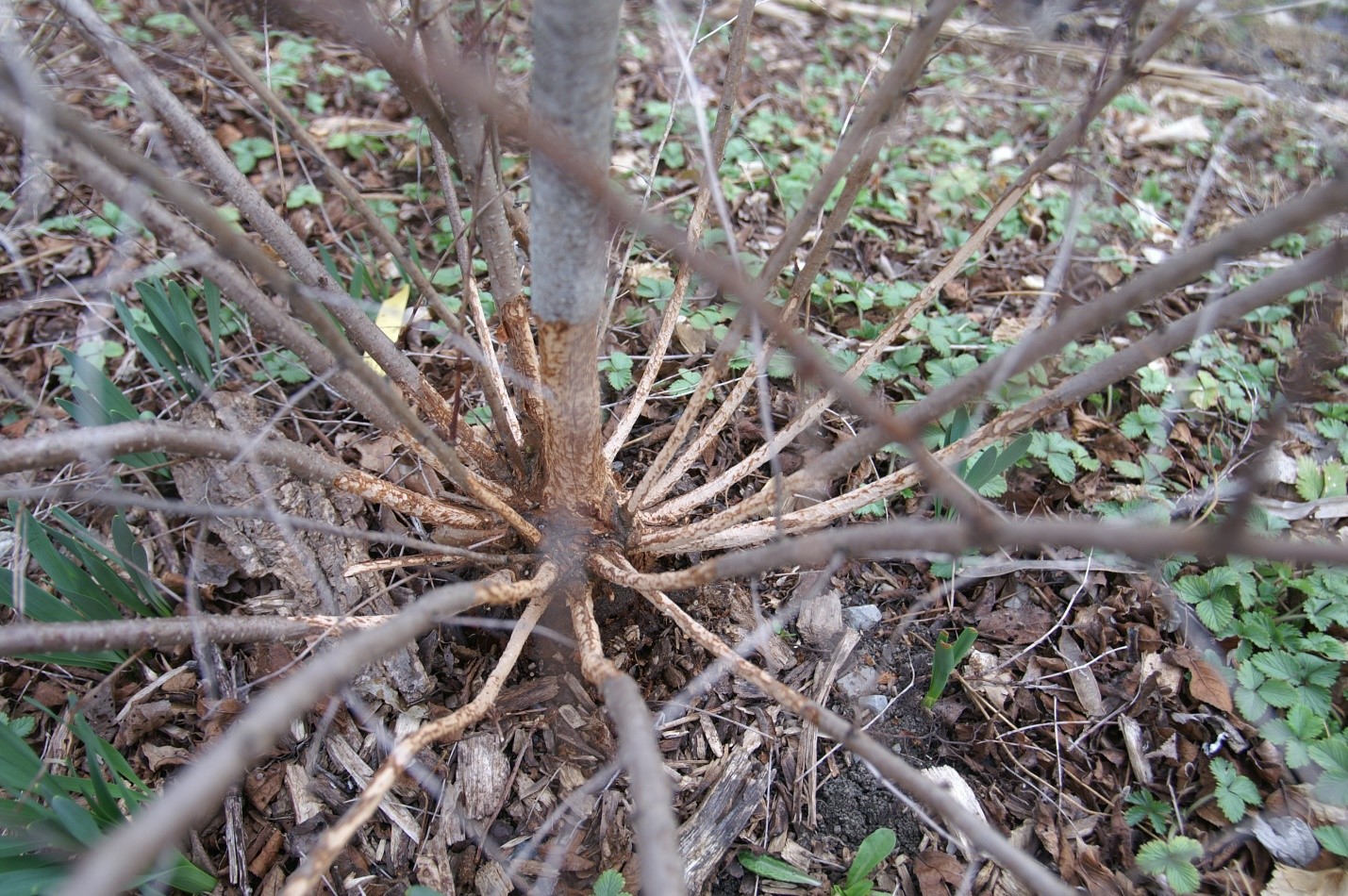
I also cleaned out some birdhouses and put a thin layer of wood shavings at the base of some to make them more attractive to chickadees. Chickadees are small birds that over winter in my region and begin scouting for nesting sites as early as February.
A chickadee at my birdfeeder:
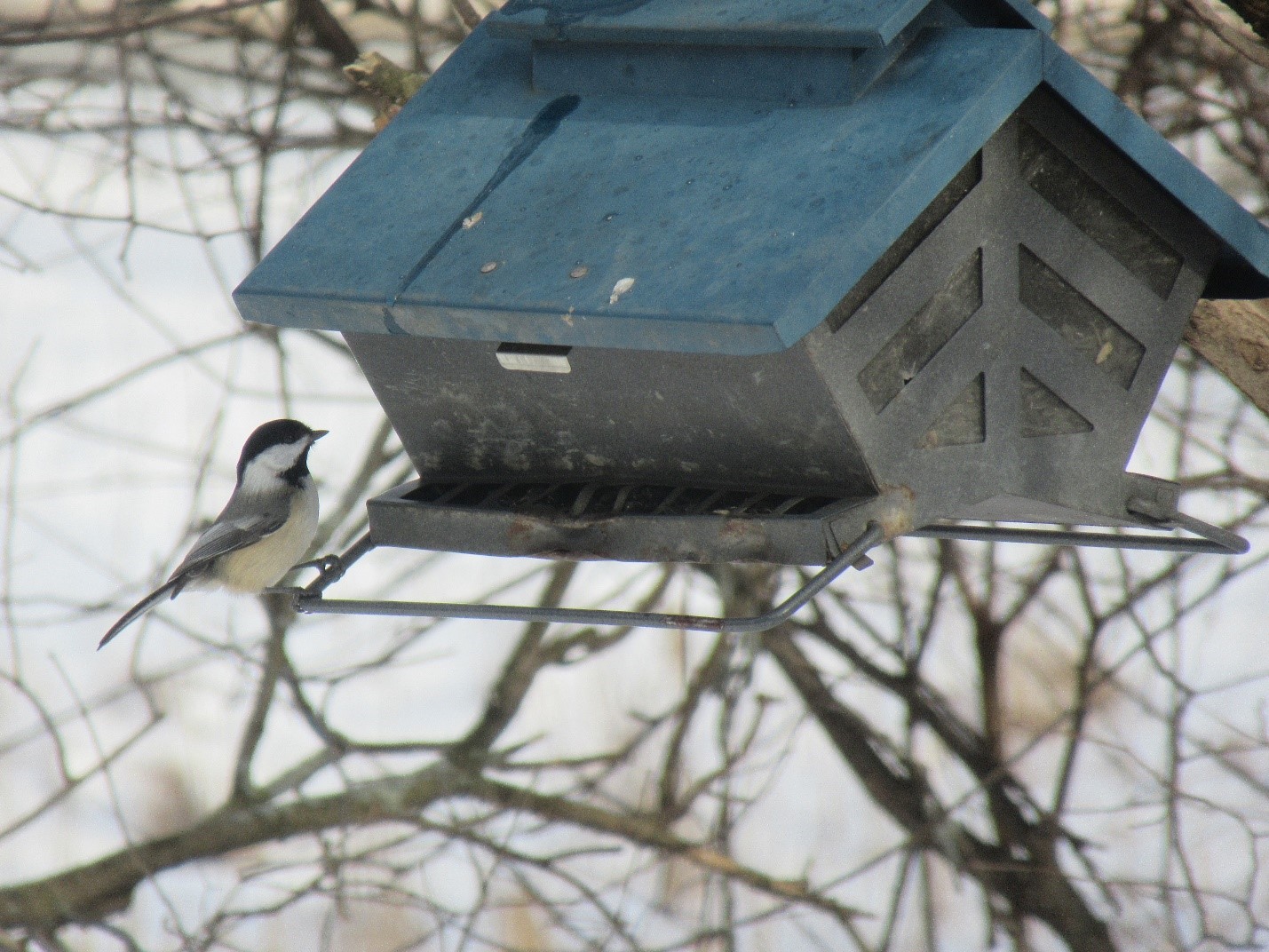
A birdhouse prepared to invite a chickadee:
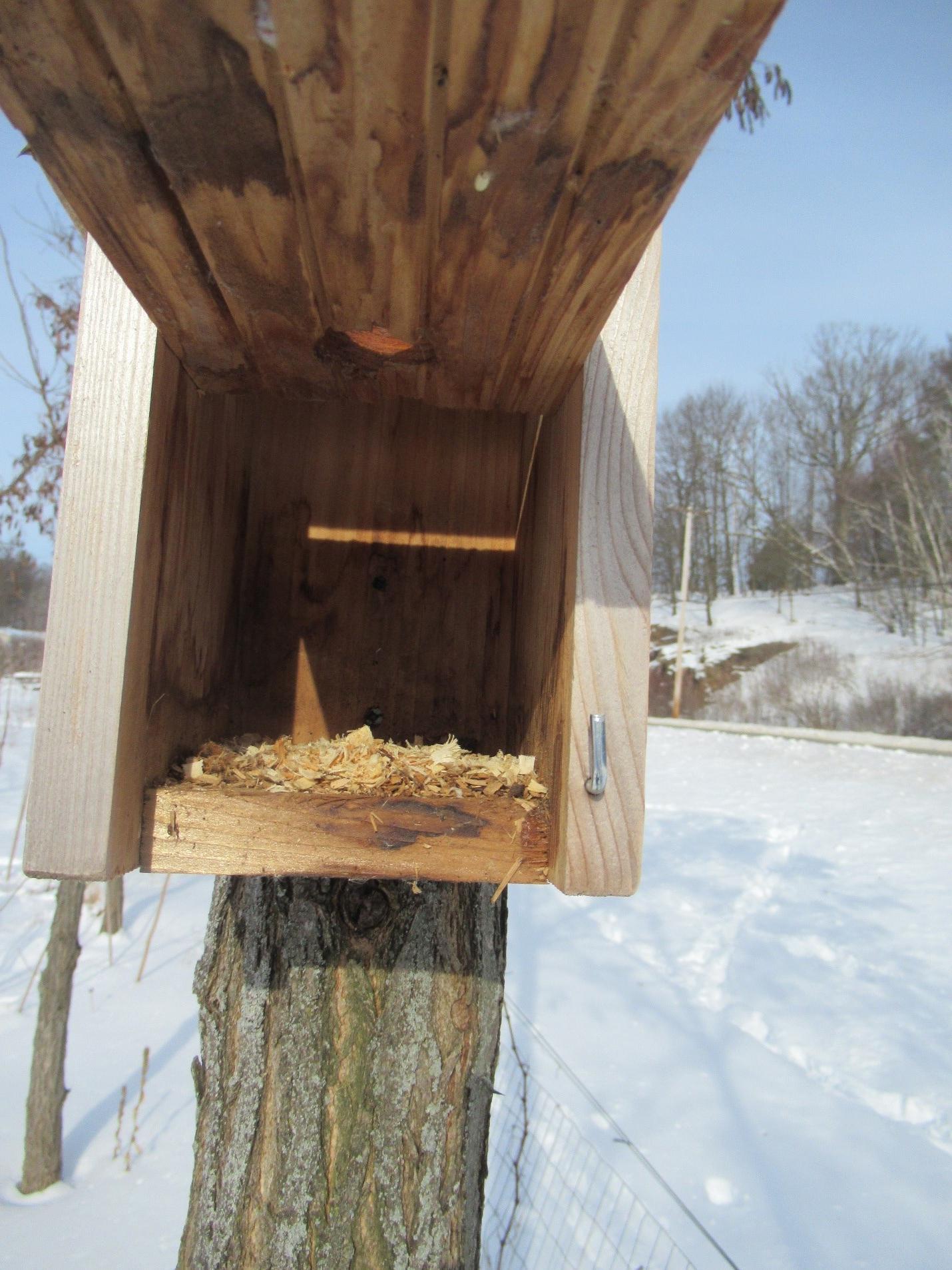
A Stroll through the Enchanted Edible Forest on New Year's Eve.
January 4, 2022
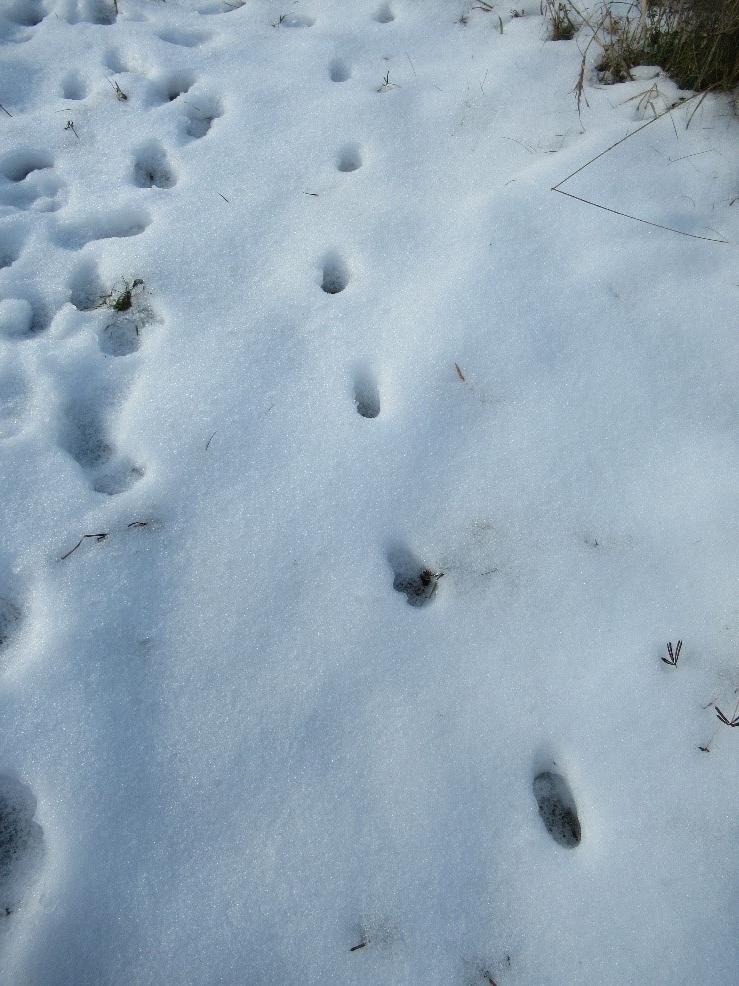
Fox footprints in the snow: Foxes are welcome in the Edible Forest because they eat rodents, particularly mice and voles which chew on berry bush and fruit tree stems under the snow.
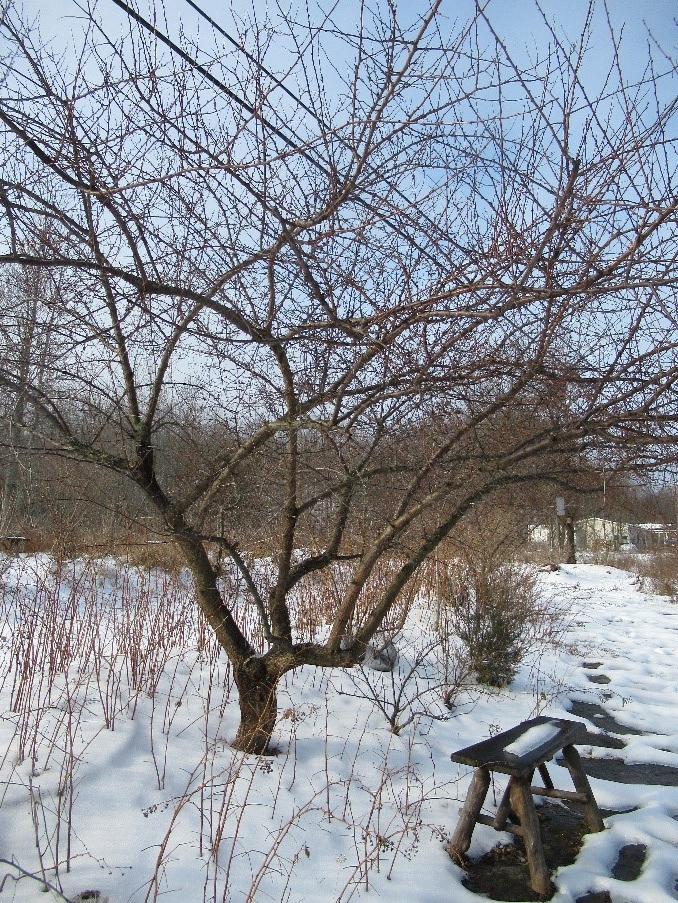
The graceful form of a mature apricot tree enhances the winter landscape.
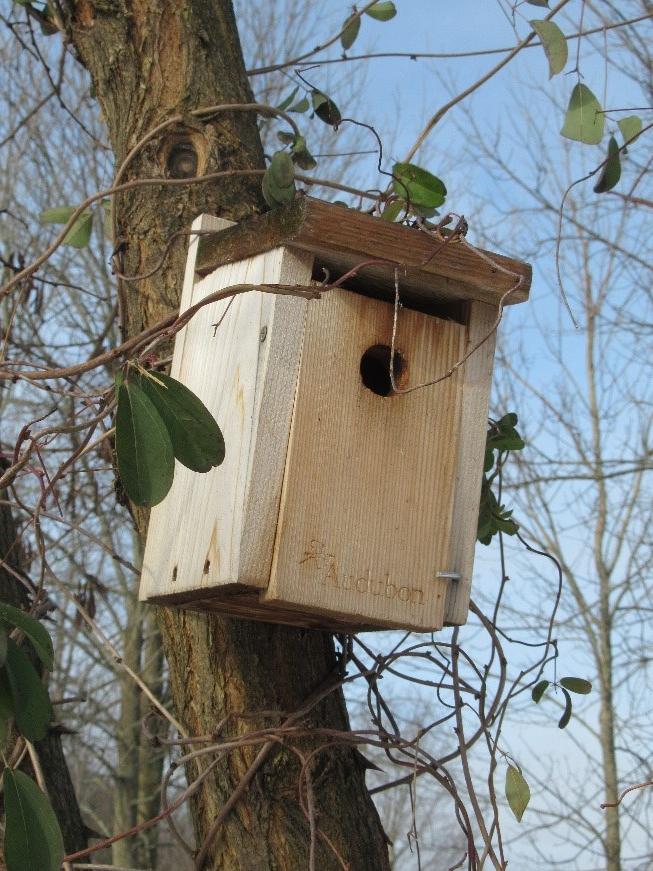
The leaves of an akebia vine are still green despite the subfreezing temperatures. Chickadees will begin scouting for a nesting site as early as next month, so this birdhouse has already been cleaned of last season’s nests to make way for the new.
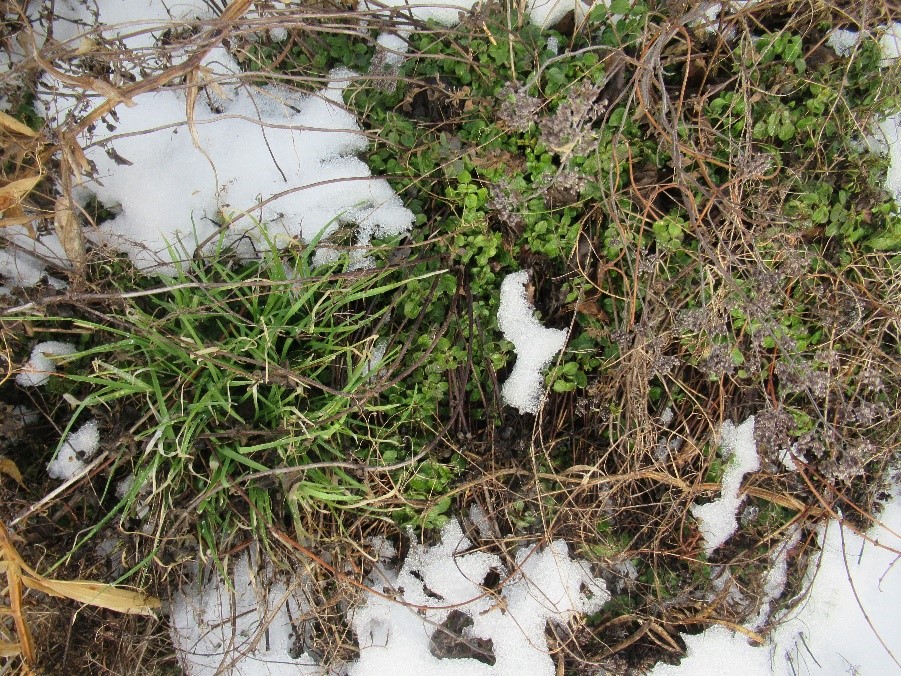
An early snow melts to reveal the leaves of garlic chives and oregano still green and harvestable below.
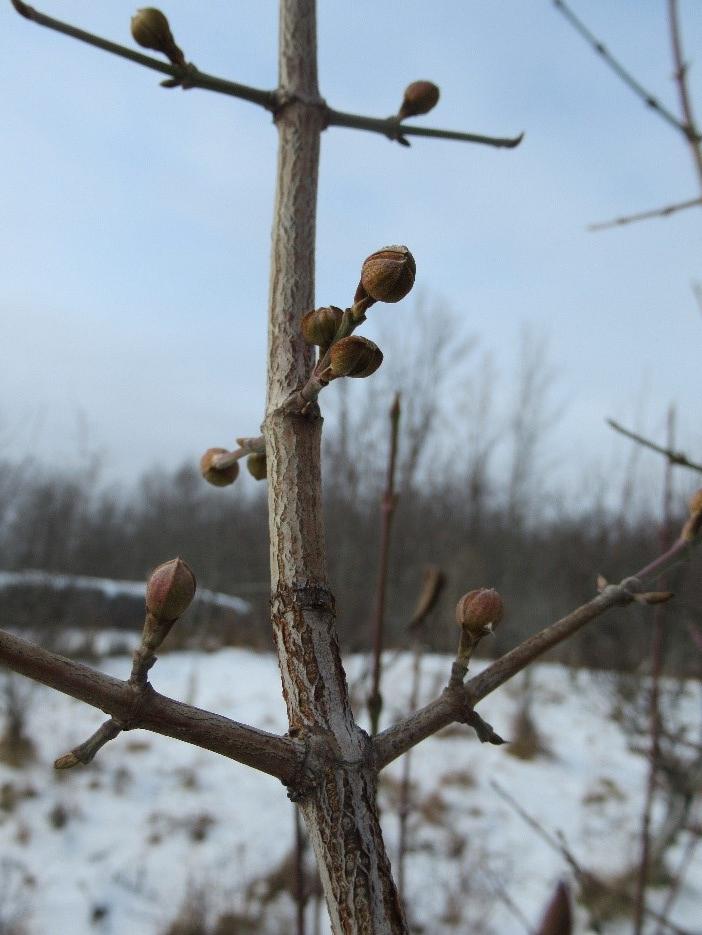
Flower buds of a Cornelian cherry tree jut out prominently along each branch. This tree will be among the very earliest to flower next spring.
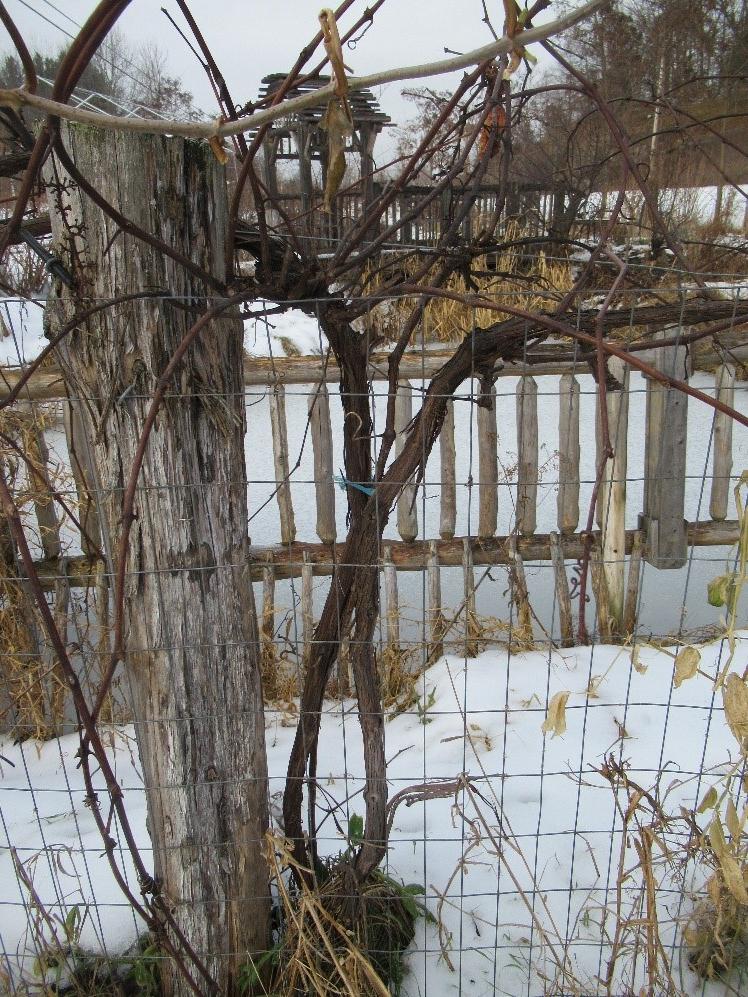
Two trunks are trained for this King of the North grapevine as insurance against winter kill and rodent damage. If one trunk meets its demise, the other may well survive to produce fruit the following year.
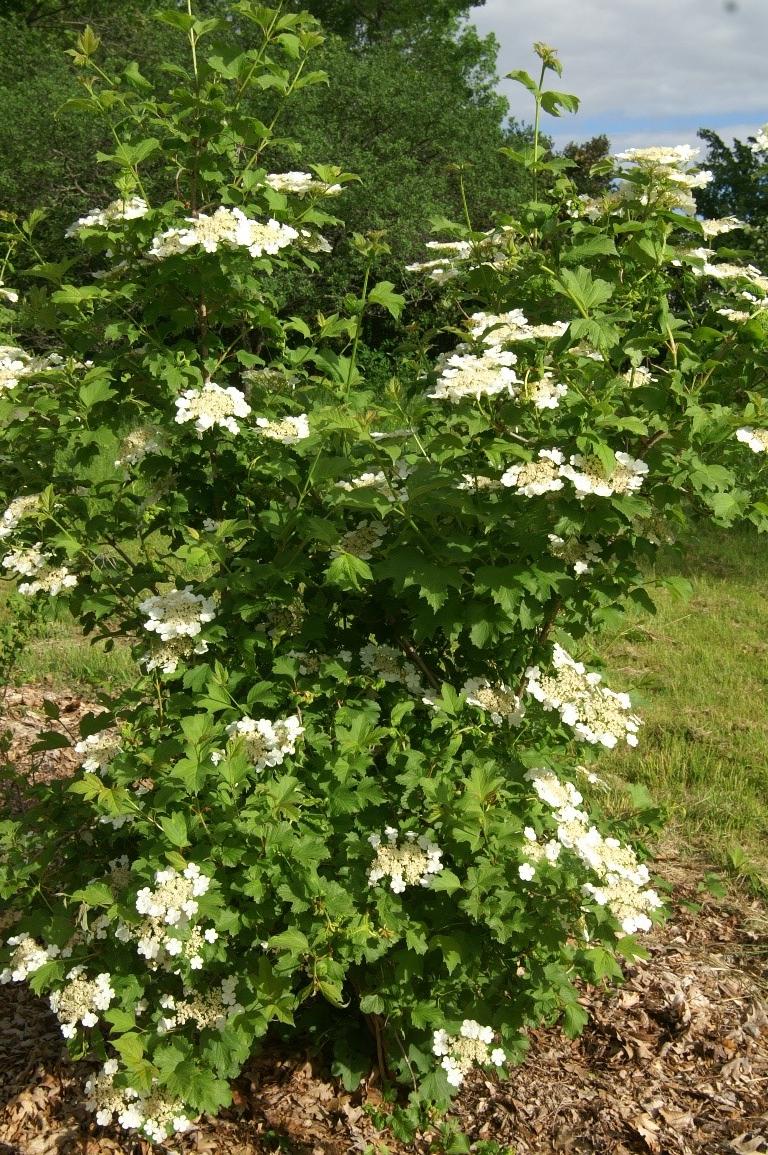
High Bush Cranberries
December 29, 2021
Before I embarked on my edible forest adventure, I was aware that cranberries grow on low, trailing vines, but had no idea that they grow on bushes as well. High-bush cranberry (Vaccinium trilobum) is a cold-hardy shrub, native to northeast U.S. and Canada, that grows in wet woods, along streams, and on moist, wooded hillsides. The berries these plants produce are not true cranberries (Vaccinium macrocarpon) but they look and taste similar to the “real thing.” Highbush cranberries produce the most flowers, fruit, and autumn color when grown in sun, but are shade-tolerant as well.
Highbush cranberry shrubs have a narrow, multi-stemmed base and wide canopy. In the spring, they are covered by bunches of white flowers that attract pollinators. In the fall, clusters of 1 cm tart, edible berries turn a deep red. If left unharvested, these berries can remain on the bushes all winter, providing food for birds in early spring. The leaves turn eye-catching shades of crimson in the fall. Highbush cranberries are firm and acidic until hit by a few frosts, after which they soften and sweeten slightly. You can process them into sauce or add them to baked goods just as you would regular cranberries. The bark of this shrub has applications in traditional medicine.
I installed the Wentworth cultivar of this shrub in my garden. Several of these ornamental plants are growing well and providing four-season landscape appeal in a sunny section of the garden where the water table often rises above the soil surface. Another Wentworth is thriving in a low spot that is shaded after mid-morning by a clump of trees. I am delighted to find that such a decorative shrub can thrive in these challenging habitats. From my observations, these plants have no pest or disease problems and require no particular care. They can be propagated through layering, hardwood cuttings, and seed. If you have a sunny or shady spot on your property with wet ground, these large, attractive bushes may serve you well, too.
Left: High bush cranberry in bloom.
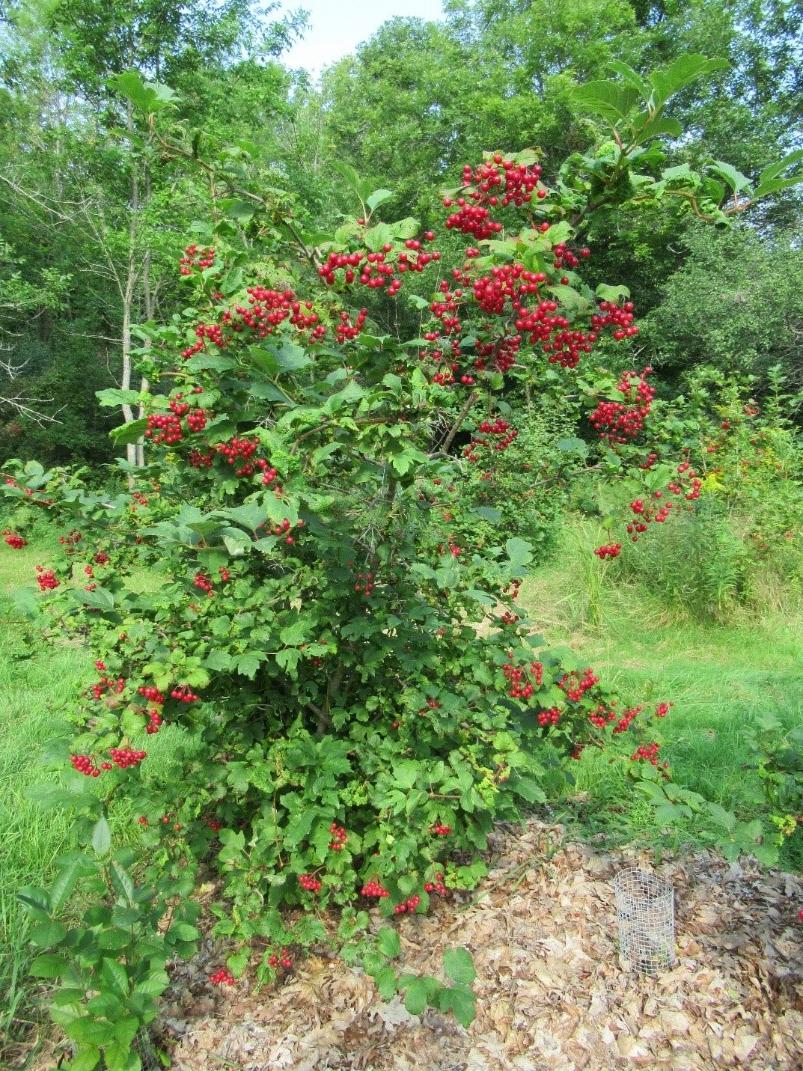
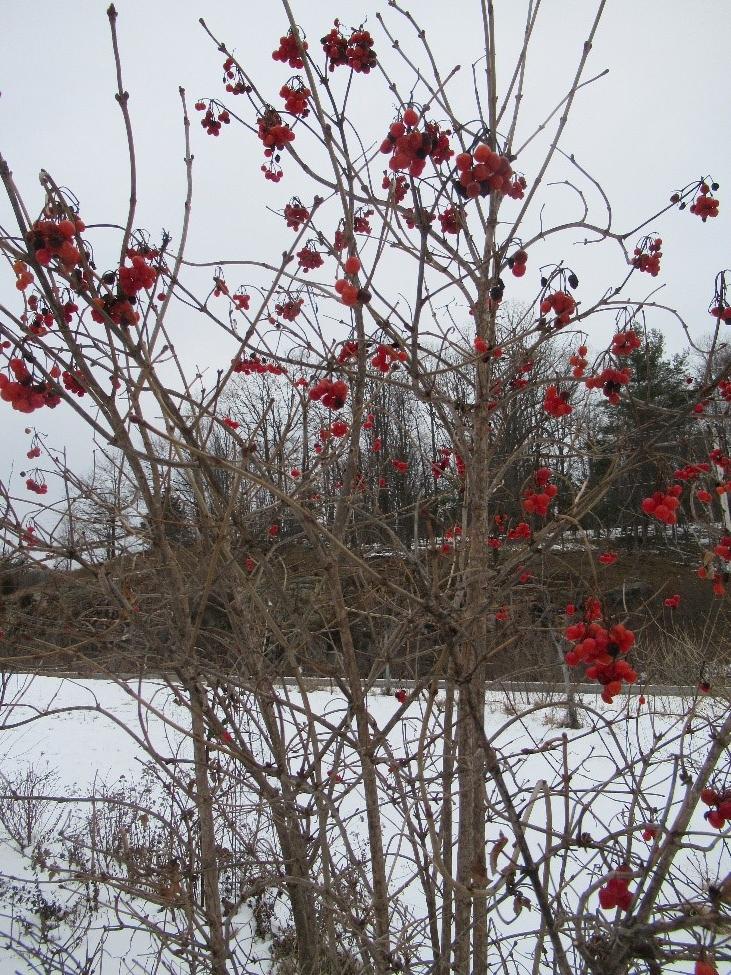
High bush cranberries are attractive in the landscape laden with ripening fruit.
High bush cranberries hold their berries throughout winter for either you or the birds to harvest.